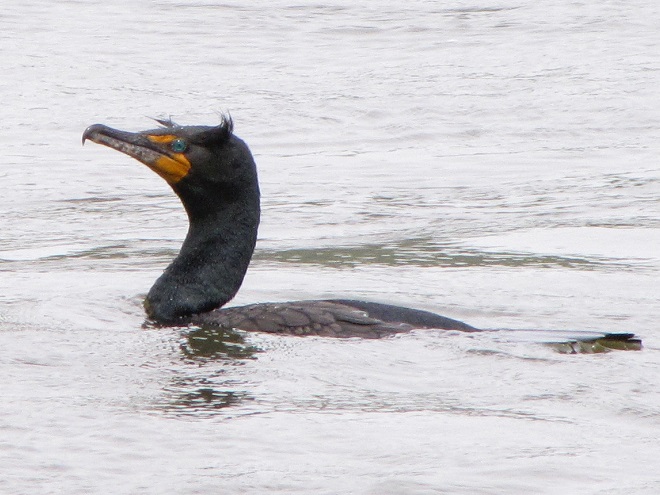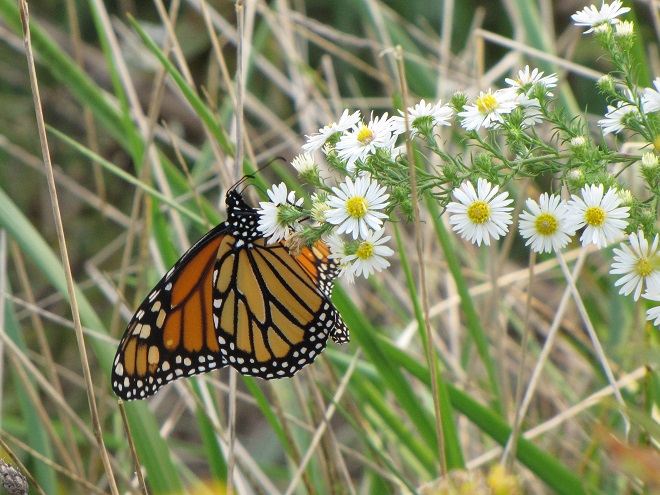
Early Golden Eagles
Each autumn, Eastern Golden Eagles transit the Lower Susquehanna River Watershed as they make their way from nesting sites in eastern Canada to wintering ranges in the mountains of the eastern United States. The majority of these birds make passage during late October and early November, so when a Golden Eagle is observed at a local hawk watch during the month of September, it is a notable event. So far in 2021, both Waggoner’s Gap Hawk Watch north of Carlisle and Second Mountain Hawk Watch at Fort Indiantown Gap have logged early-season Golden Eagles, the former on the seventeenth of September and the latter just yesterday.
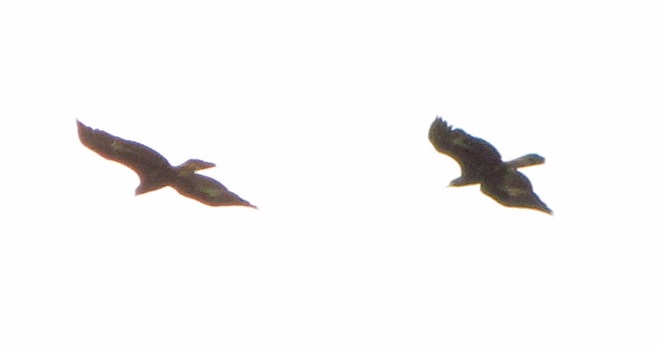
To learn more about identifying Golden Eagles and other birds of prey, be certain to click the “Hawkwatchers Helper: Identifying Bald Eagles and other Raptors” tab at the top of this page.
And for more specific information on Golden Eagles and how to determine their age, click the “Golden Eagle Aging Chart” tab at the top of this page.
Migration Update
Can it be that time already? Most Neotropical birds have passed through the Lower Susquehanna River Watershed on their way south and the hardier species that will spend our winter in the more temperate climes of the eastern United States are beginning to arrive.
Here’s a gallery of sightings from recent days…


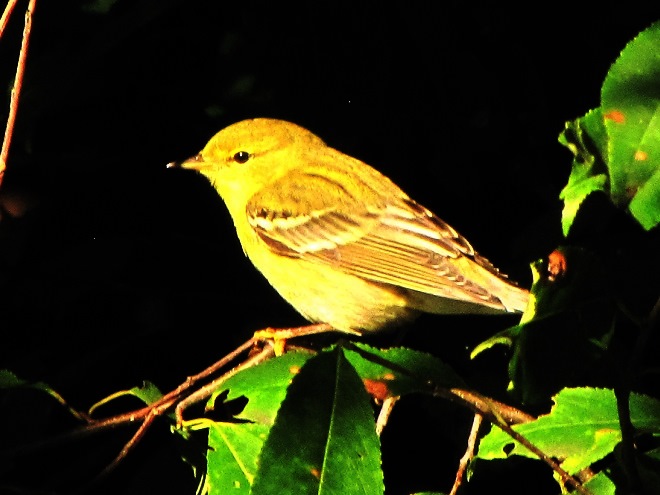


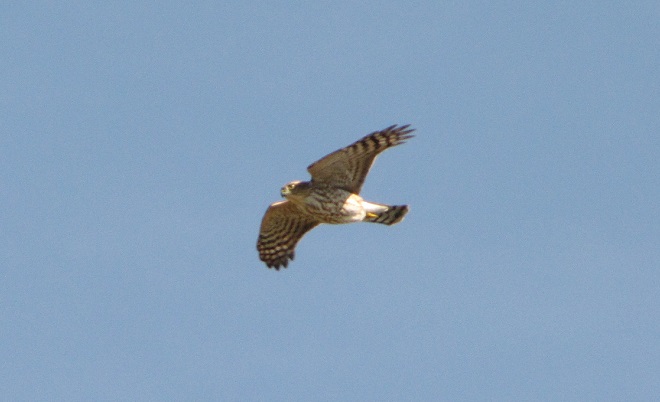

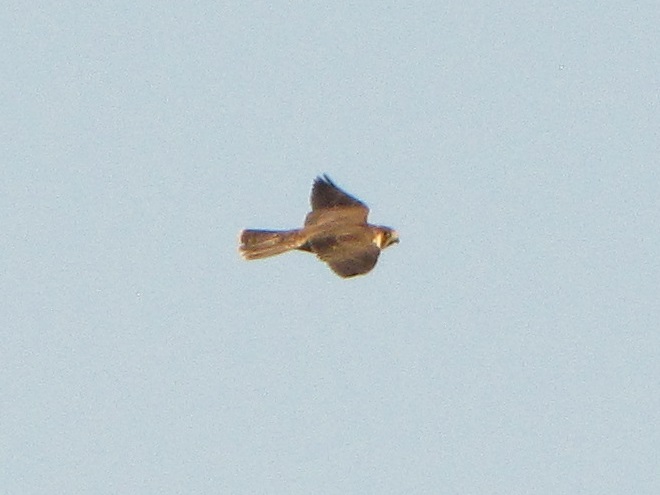
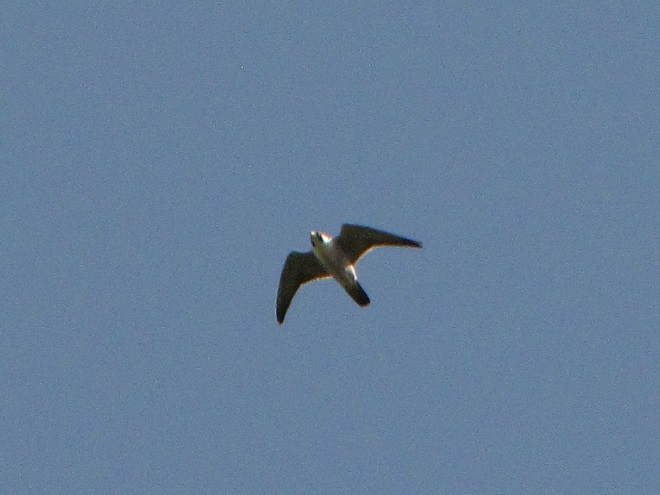

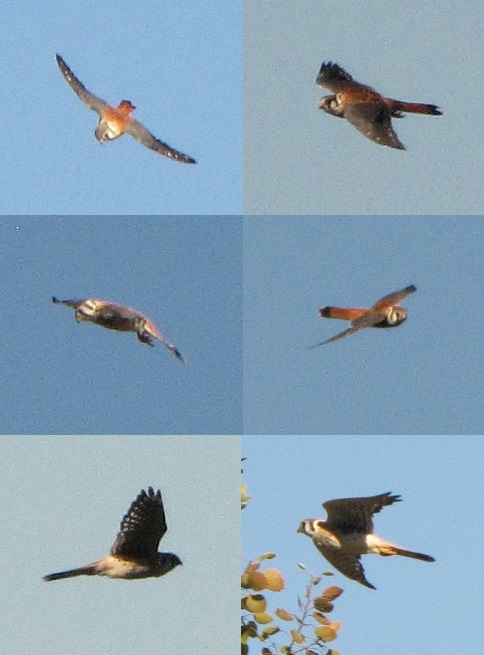
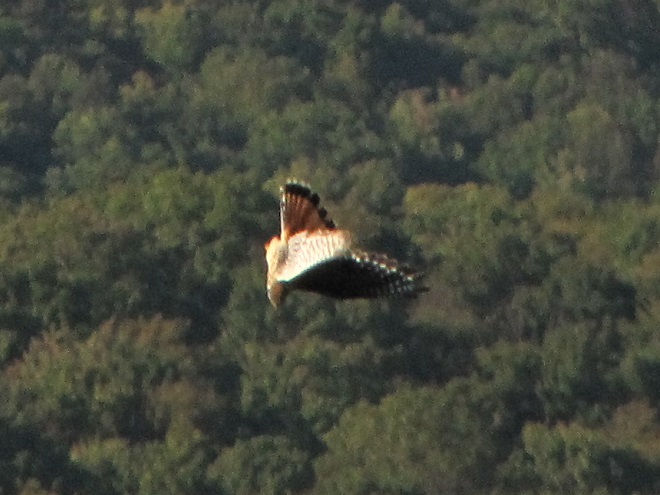
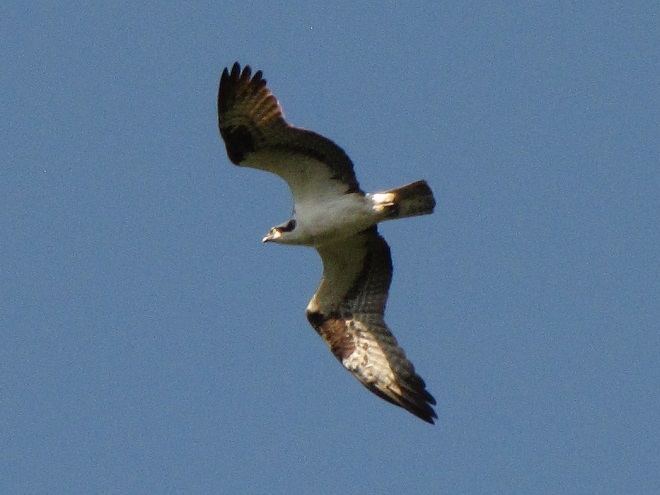

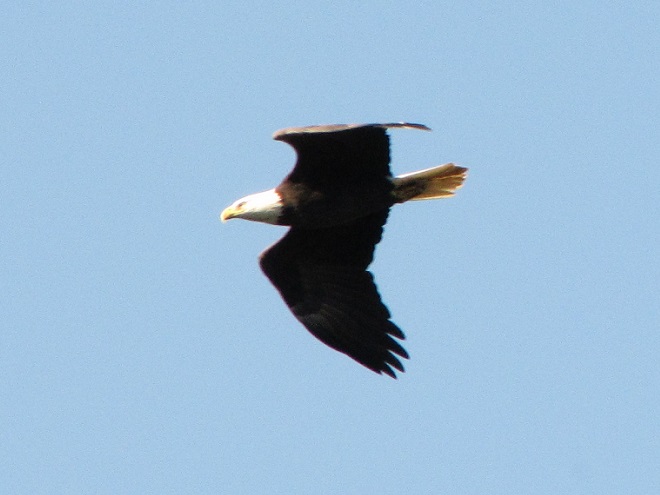

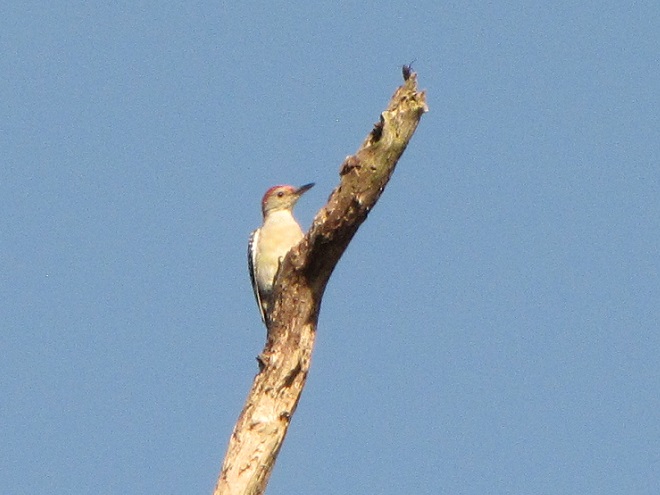


Be sure to click on these tabs at the top of this page to find image guides to help you identify the dragonflies, birds, and raptors you see in the Lower Susquehanna River Watershed…
-
- Damselflies and Dragonflies
- Birds of Conewago Falls
- Hawkwatcher’s Helper: Identifying Bald Eagles and other Raptors
See you next time!
Broad-winged Hawk Flights Underway
The smoke has cleared—at least for now—and Broad-winged Hawks are being seen migrating across lower Susquehanna valley skies. Check out these daily counts from area hawk watches…
-
- Rocky Ridge County Park Hawk Watch northeast of York, Pennsylvania: 475 Broad-winged Hawks on Saturday, September 18th—including 388 during the two hours between noon and 2 P.M.
- Second Mountain Hawk Watch at Fort Indiantown Gap in Lebanon County, Pennsylvania: 300 Broad-winged Hawks on Wednesday, September 15th— one more than was tallied passing the site on the previous day.
- Waggoner’s Gap Hawk Watch on Blue Mountain north of Carlisle, Pennsylvania: 1,211 Broad-winged Hawks on Tuesday, September 14th and 1,485 on Sunday, September 19th.
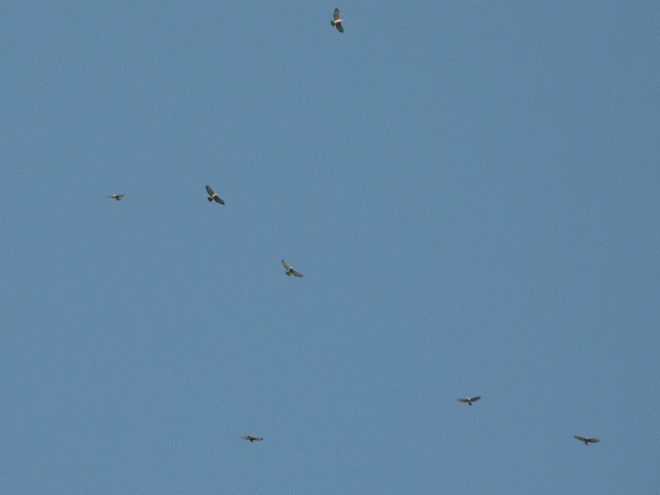
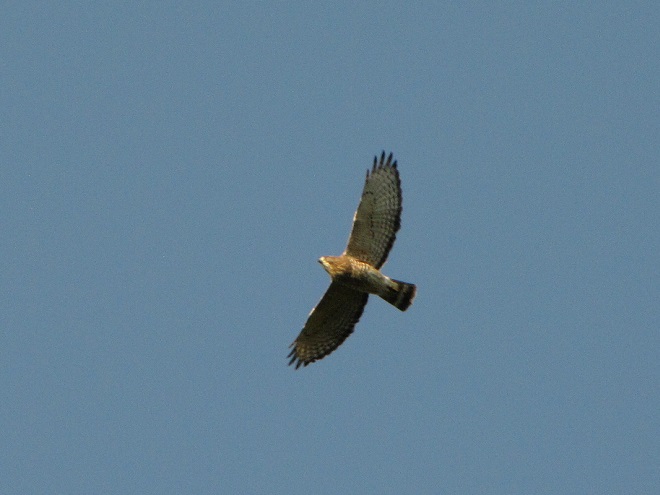
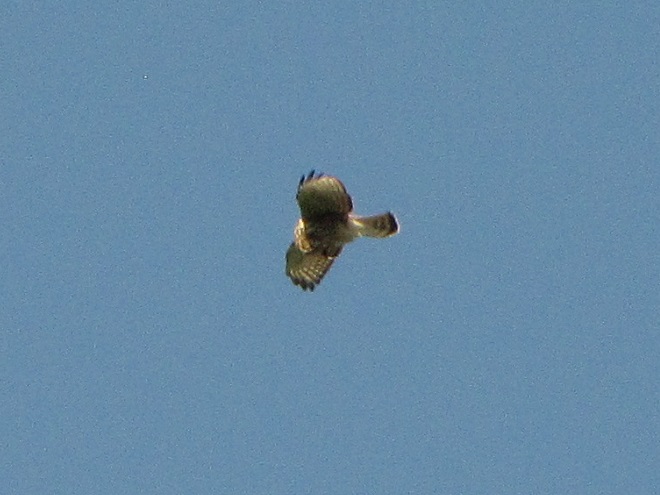
Additional Broad-winged Hawks are still working their way through the Mid-Atlantic States as they continue toward tropical wintering grounds. And there’s more. Numbers for a dozen other migratory hawk, eagle, and falcon species will peak between now and mid-November. Days following passage of a cold front are generally best—so do get out there and have a look!
You can check the daily hawk count numbers and find detailed information for lookout sites all across North America at hawkcount.org
And don’t forget to click the “Hawkwatcher’s Helper” tab at the top of this page to see a gallery of photos that can help you to identify, and possibly determine the age of, the many species of raptors that occur in the Lower Susquehanna River Watershed.

Smoky Skies in the Lower Susquehanna Region
During the coming two weeks, peak numbers of migrating Neotropical birds will be passing through the northeastern United States including the lower Susquehanna valley. Hawk watches are staffed and observers are awaiting big flights of Broad-winged Hawks—hoping to see a thousand birds or more in a single day.
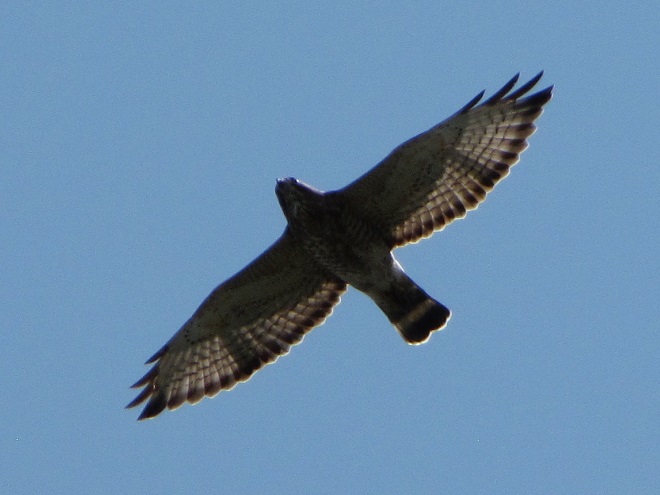

Broad-winged hawks feed on rodents, amphibians, and a variety of large insects while on their breeding grounds in the forests of the northern United States and Canada. They depart early, journeying to wintering areas in Central and South America before frost robs them of a reliable food supply.
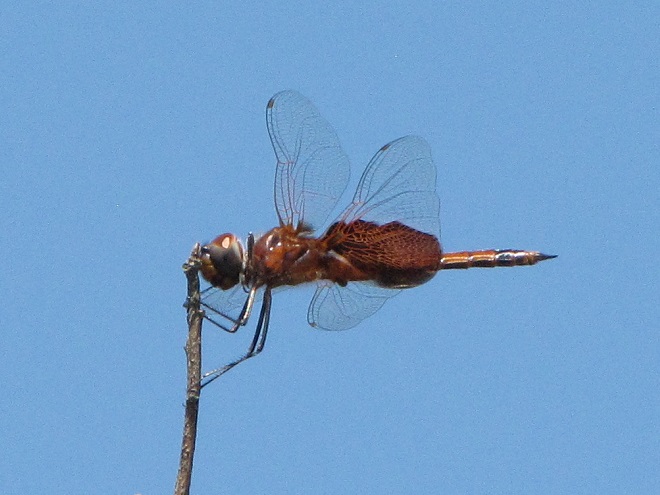
While migrating, Broad-winged Hawks climb to great altitudes on thermal updrafts and are notoriously difficult to see from ground level. Bright sunny skies with no clouds to serve as a backdrop further complicate a hawk counter’s ability to spot passing birds. Throughout the Lower Susquehanna River Watershed, the coming week promises to be especially challenging for those trying to observe and census the passage of high-flying Broad-winged Hawks. The forecast of hot and humid weather is not so unusual, but the addition of smoke from fires in the western states promises to intensify the haze and create an especially irritating glare for those searching the skies for raptors.



It may seem gloomy for the mid-September flights in 2021, but hawk watchers are hardy types. They know that the birds won’t wait. So if you want to see migrating “Broad-wings” and other species, you’ve got to get out there and look up while they’re passing through.
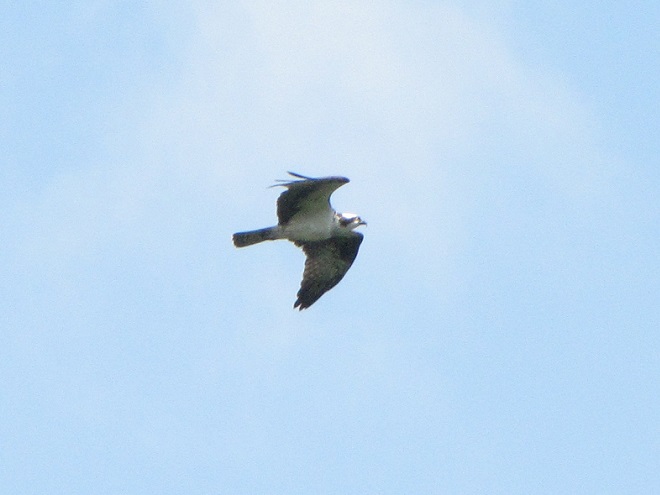


These hawk watches in the Lower Susquehanna River Watershed are currently staffed by official counters and all welcome visitors:
-
- Rocky Ridge County Park Hawk Watch—3699 Deininger Road off Mount Zion Road (Route 24) northeast of York, Pennsylvania.
- Second Mountain Hawk Watch—off Cold Spring Road on the grounds of Fort Indiantown Gap in Lebanon County, Pennsylvania.
- Waggoner’s Gap Hawk Watch—where Route 74 crosses Blue Mountain north of Carlisle, Pennsylvania.
—or you can just keep an eye on the sky from wherever you happen to be. And don’t forget to check the trees and shrubs because warbler numbers are peaking too! During recent days…
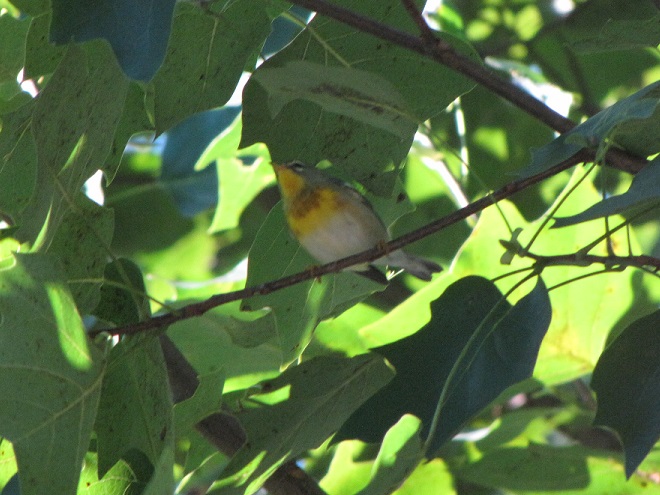
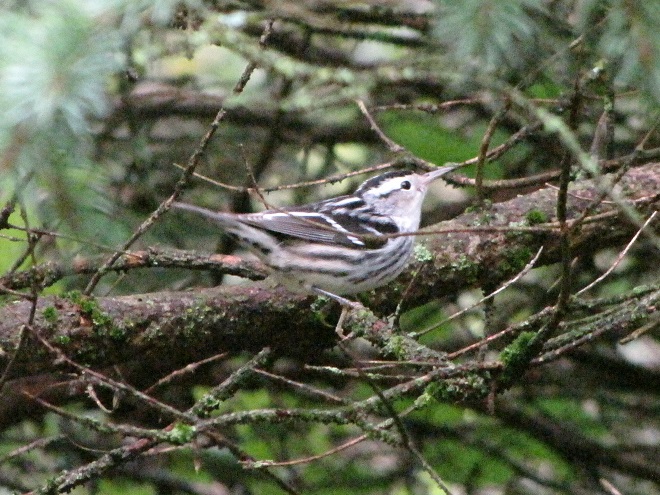

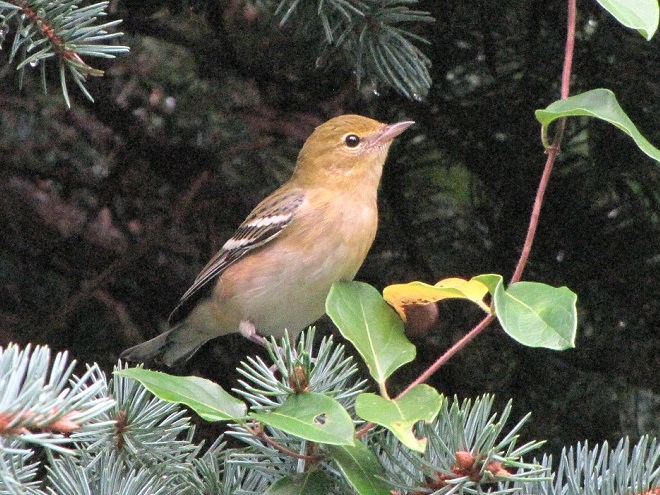
Why This Week Your Editor Read Eric Hoffer Once Again
Warblers Passing Through the Lower Susquehanna River Valley
Neotropical birds are presently migrating south from breeding habitats in the United States and Canada to wintering grounds in Central and South America. Among them are more than two dozen species of warblers—colorful little passerines that can often be seen darting from branch to branch in the treetops as they feed on insects during stopovers in the Lower Susquehanna River Watershed.
Being nocturnal migrants, warblers are best seen first thing in the morning among sunlit foliage, often high in the forest canopy. After a night of flying, they stop to feed and rest. Warblers frequently join resident chickadees, titmice, and nuthatches to form a foraging flock that can contain dozens of songbirds. Migratory flycatchers, vireos, tanagers, and grosbeaks often accompany southbound warblers during early morning “fallouts”. Usually, the best way to find these early fall migrants is to visit a forest edge or thicket, particularly along a stream, a utility right-of-way, or on a ridge top. Then too, warblers and other Neotropical migrants are notorious for showing up in groves of mature trees in urban parks and residential neighborhoods—so look up!

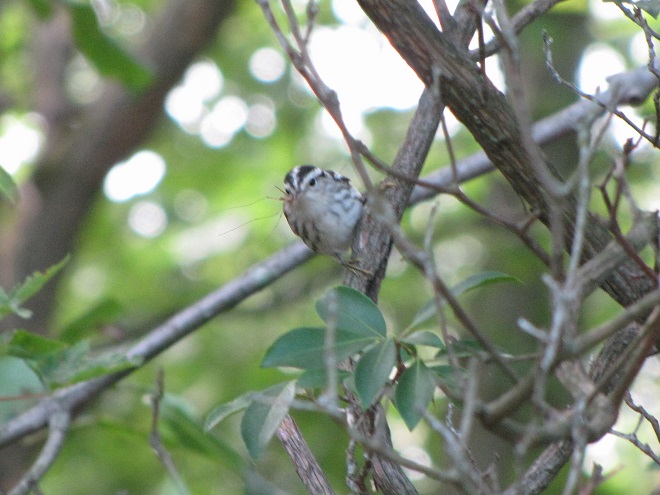
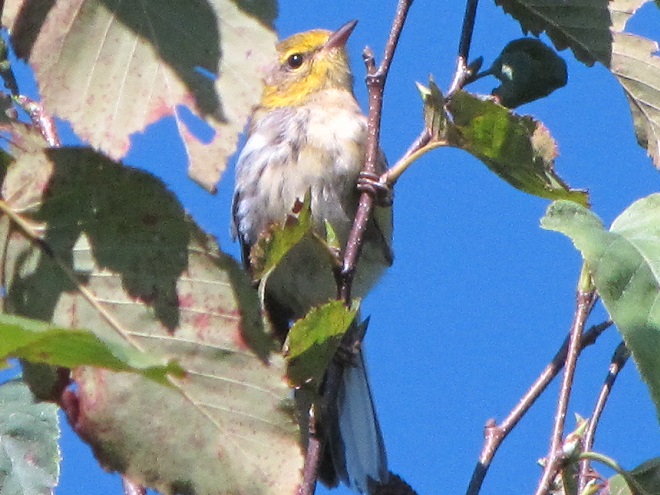

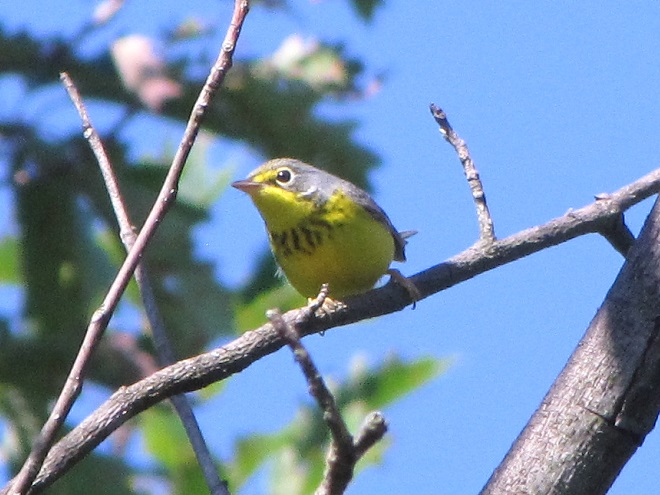
Be sure to visit the Birds of Conewago Falls page by clicking the “Birds” tab at the top of this page. There, you’ll find photographs of the birds, including warblers and other Neotropical migrants, that you’re likely to encounter at locations throughout the Lower Susquehanna River Watershed.
Pick Up and Get Out of the Floodplain
The remnants of Hurricane Ida are on their way to the Lower Susquehanna River Watershed. After making landfall in Louisiana as a category 4 storm, Ida is on track to bring heavy rain to the Mid-Atlantic States beginning tonight.
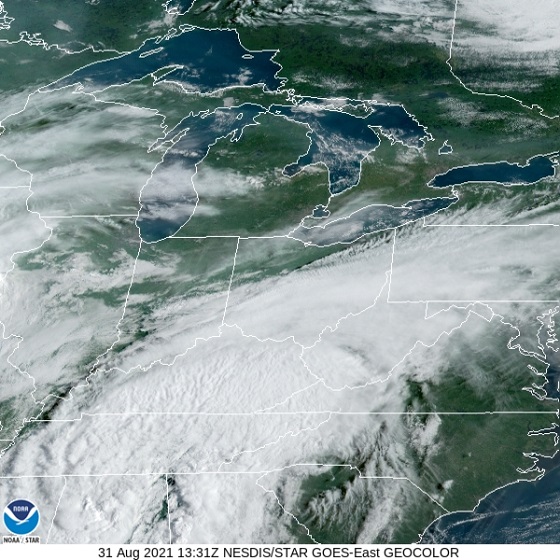
Rainfall totals are anticipated to be sufficient to cause flooding in the lower Susquehanna basin. As much as six to ten inches of precipitation could fall in parts of the area on Wednesday.
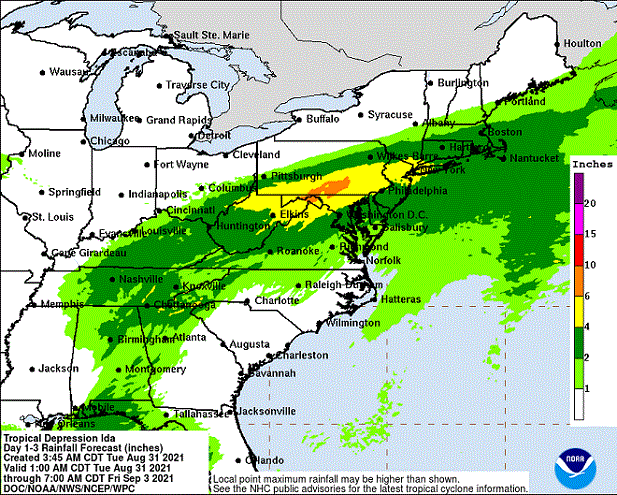
Now would be a good time to get all your valuables and junk out of the floodways and floodplains. Move your cars, trucks, S.U.V.s, trailers, and boats to higher ground. Clear out the trash cans, playground equipment, picnic tables, and lawn furniture too. Get it all to higher ground. Don’t be the slob who uses a flood as a chance to get rid of tires and other rubbish by letting it just wash away.

Flooding not only has economic and public safety impacts, it is a source of enormous amounts of pollution. Chemical spills from inundated homes, businesses, and vehicles combine with nutrient and sediment runoff from eroding fields to create a filthy brown torrent that rushes down stream courses and into the Susquehanna. Failed and flooded sewage facilities, both municipal and private, not only pollute the water, but give it that foul odor familiar to those who visit the shores of the river after a major storm. And of course there is the garbage. The tons and tons of waste that people discard carelessly that, during a flood event, finds its way ever closer to the Susquehanna, then the Chesapeake, and finally the Atlantic. It’s a disgraceful legacy.
Now is your chance to do something about it. Go out right now and pick up the trash along the curb, in the street, and on the sidewalk and lawn—before it gets swept into your nearby stormwater inlet or stream. It’s easy to do, just bend and stoop. While you’re at it, clean up the driveway and parking lot too.

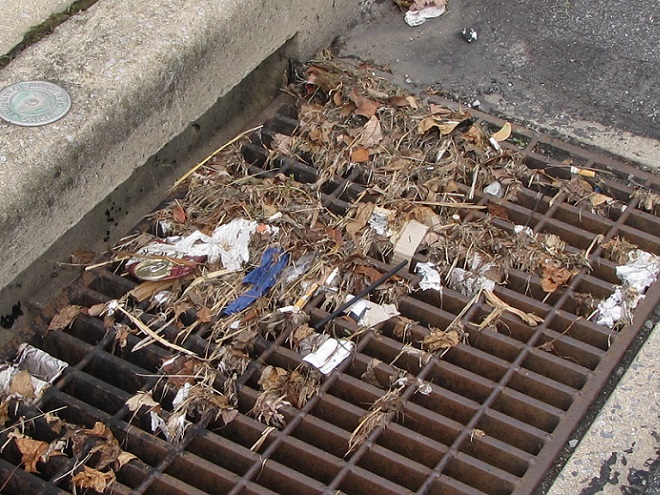

We’ll be checking to see how you did.
And remember, flood plains are for flooding, so get out of the floodplain and stay out.
Shorebirds at Middle Creek
Late August and early September is prime time to see migrating shorebirds as they pass through the lower Susquehanna valley during their autumn migration, which, believe it or not, can begin as early as late June. These species that are often assumed to spend their lives only near the seashore are regular visitors each fall as they make their way from breeding grounds in the interior of Canada to wintering sites in seacoast wetlands—many traveling as far south as Central and South America.
Low water levels on the Susquehanna River often coincide with the shorebird migration each year, exposing gravel and sand bars as well as vast expanses of muddy shorelines as feeding and resting areas for these traveling birds. This week though, rain from the remnants of Tropical Storm Fred arrived to increase the flow in the Susquehanna and inundate most of the natural habitat for shorebirds. Those on the move must either continue through the area without stopping or find alternate locations to loaf and find food.
The draining and filling of wetlands along the river and elsewhere in the region has left few naturally-occurring options. The Conejohela Flats south of Columbia offer refuge to many migrating sandpipers and their allies, the river level there being controlled by releases from the Safe Harbor Dam during all but the severest of floods. Shorebirds will sometimes visit flooded fields, but wide-open puddles and farmland resembling mudflats is more of springtime occurrence—preceding the planting and growth of crops. Well-designed stormwater holding facilities can function as habitat for sandpipers and other wildlife. They are worth checking on a regular basis—you never know what might drop in.
Right now, there is a new shorebird hot spot in the Lower Susquehanna River Watershed—Middle Creek Wildlife Management Area. The water level in the main impoundment there has been drawn down during recent weeks to expose mudflats along the periphery of nearly the entire lake. Viewing from “Stop 1” (the roadside section of the lake in front of the refuge museum) is best. The variety of species and their numbers can change throughout the day as birds filter in and out—at times traveling to other mudflats around the lake where they are hidden from view. The birds at “Stop 1” are backlit in the morning with favorable illumination developing in the afternoon.
Have a look at a few of the shorebirds currently being seen at Middle Creek…
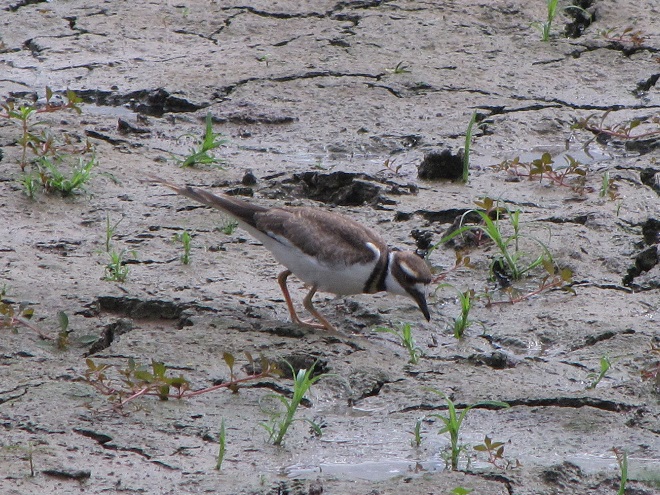

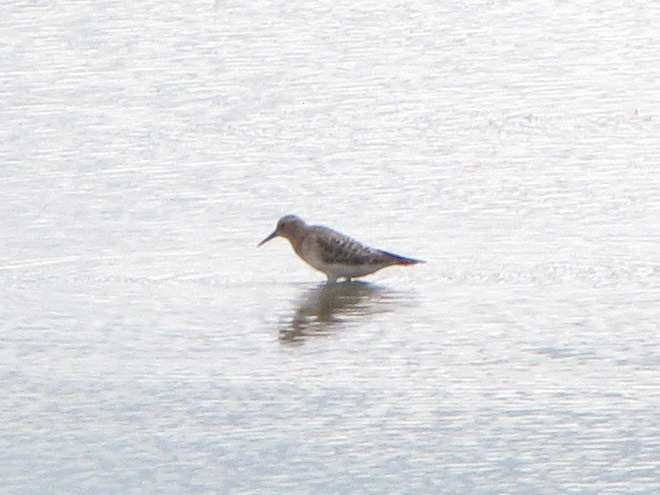
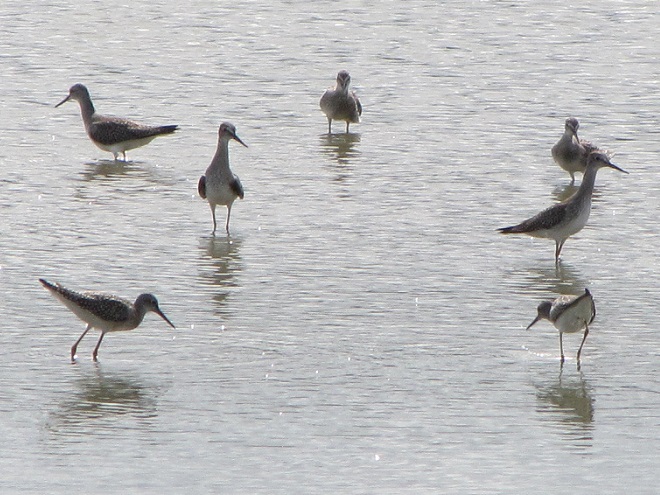
The aquatic environs at Middle Creek attract other species as well. Here are some of the most photogenic…

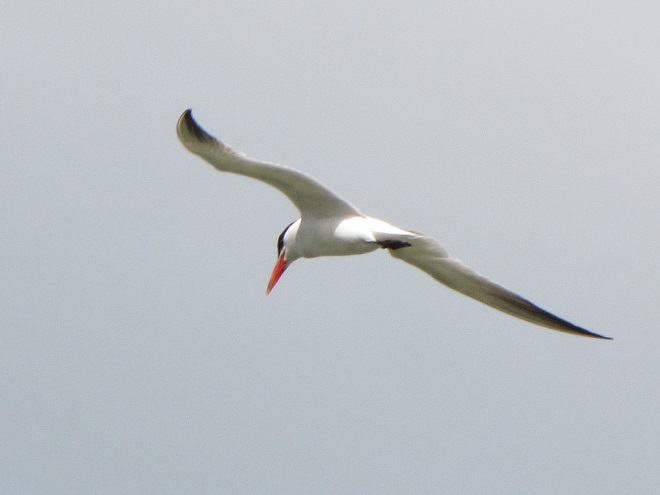
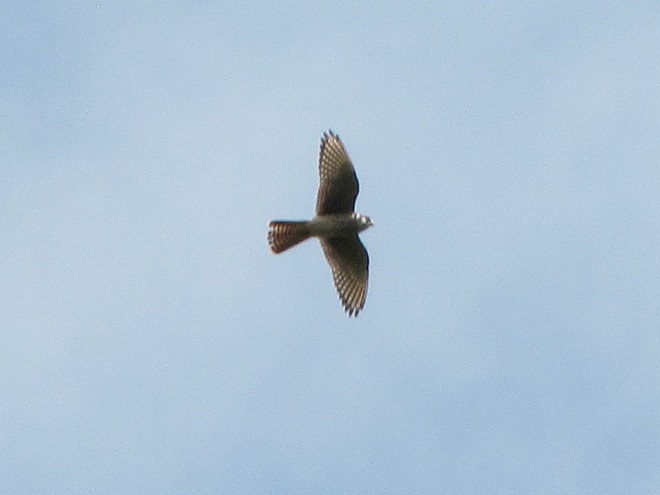

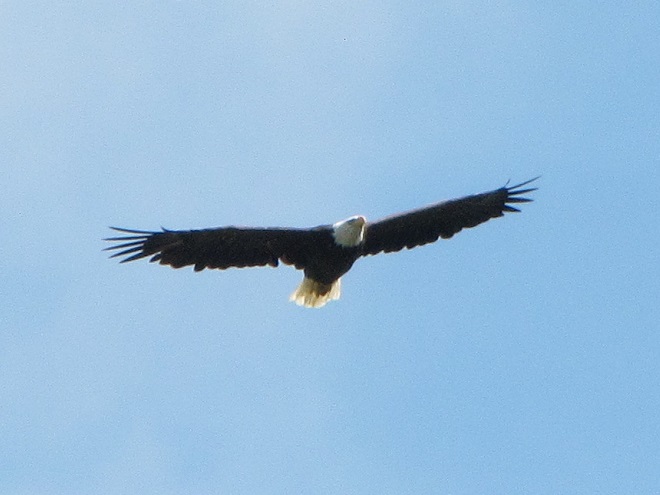
Damselflies and Dragonflies Galore at Gifford Pinchot State Park
Some of of you may have been wondering why there has been no new content for a while. Well, rest assured that your editor has been replumbed and rewired by some of the best in the business during his recent stay at the Milton S. Hershey Medical Center and he is getting a little stronger every day. More field trips will be on the way soon!
In the meantime, have a look at some of the wide variety of dragonflies gathered along the shoreline at Gifford Pinchot State Park in York County, Pennsylvania. The lake was drained during the winter to perform some maintenance projects and has yet to refill because of the dry spring and early summer we’ve been experiencing. These photos show species seen mostly in the vegetated shallows near the dam.


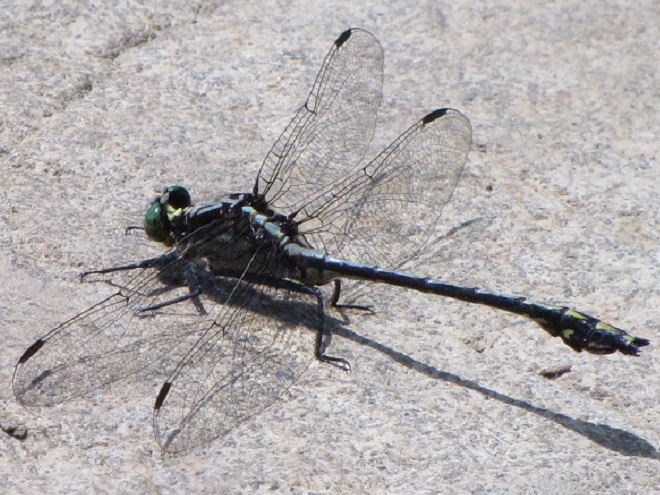

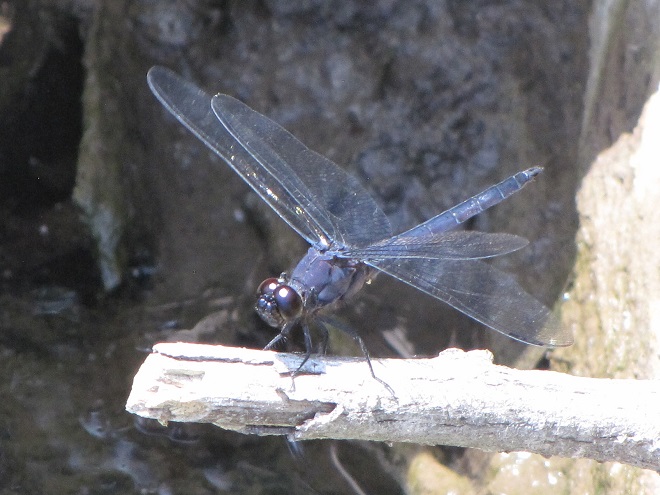


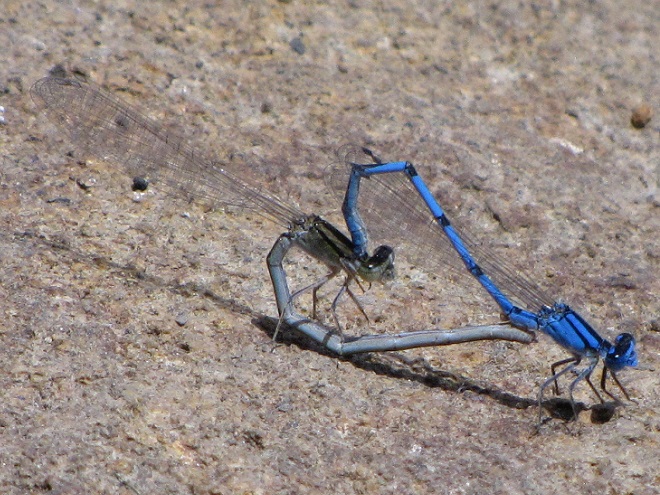
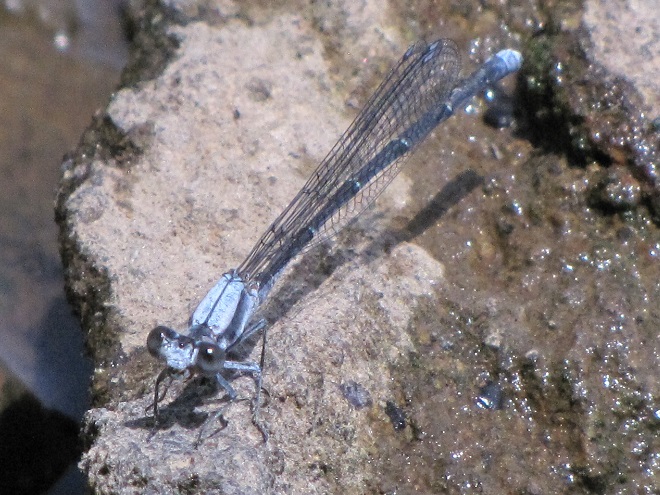


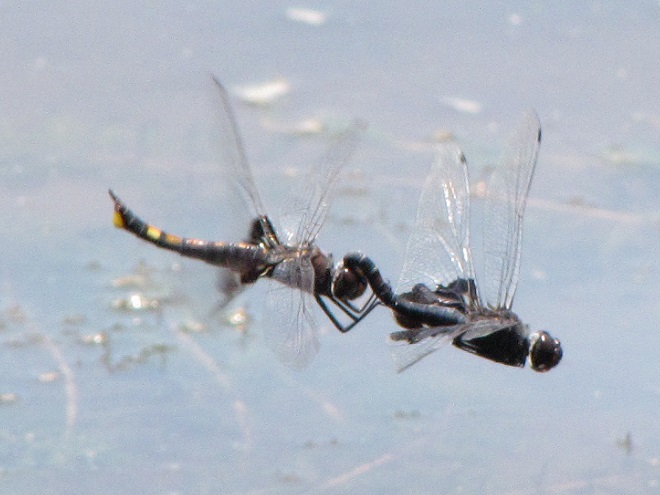
There are lots of others there too. Do have a look.
Be on the Lookout for Mississippi Kites
Common sense tells us that Brood X Periodical Cicada emergence begins in the southern part of the population zone, where the ground temperatures reach 64° first, then progresses to the north as the weather warms. In the forested hills where the lower Piedmont falls away onto the flat landscape of the Atlantic Coastal Plain in Maryland’s Cecil and Harford Counties, the hum of seventeen-year-old insects saturates a listener’s ears from all directions—the climax nears.

With all that food flying around, you just knew something unusual was going to show up to eat it. It’s a buffet. It’s a smorgasbord. It’s free, it’s all-you-can-eat, and it seems, at least for the moment, like it’s going to last forever. You know it’ll draw a crowd.
The Mississippi Kite (Ictinia mississippiensis), a trim long-winged bird of prey, is a Neotropical migrant, an insect-eating friend of the farmer, and, as the name “kite” suggests, a buoyant flier. It experiences no winter—breeding in the southern United States from April to July, then heading to South America for the remainder of the year. Its diet consists mostly of large flying insects including beetles, leafhoppers, grasshoppers, dragonflies, and, you guessed it, cicadas. Mississippi Kites frequently hunt in groups—usually catching and devouring their food while on the wing. Pairs nest in woodlands, swamps, and in urban areas with ample prey. They are well known for harmlessly swooping at people who happen to get too close to their nest.
Mississippi Kites nest regularly as far north as southernmost Virginia. For at least three decades now, non-breeding second-year birds known as immatures have been noted as wanderers in the Mid-Atlantic States, particularly in late May and early June. They are seen annually at Cape May, New Jersey. They are rare, but usually seen at least once every year, along the Piedmont-Atlantic Coastal Plain border in northern Delaware, northeastern Maryland, and/or southeastern Pennsylvania. Then came the Brood X Periodical Cicadas of 2021.
During the last week of May and these first days of June, there have been dozens of sightings of cicada-eating Mississippi Kites in locations along the lower Piedmont slope in Harford and Cecil Counties in Maryland, at “Bucktoe Creek Preserve” in southern Chester County, Pennsylvania, and in and near Newark in New Castle County, Delaware. They are being seen daily right on the lower Susquehanna watershed’s doorstep.
Today, we journeyed just south of Mason’s and Dixon’s Delaware-Maryland-Pennsylvania triangle to White Clay Creek State Park along Route 896 north of Newark, Delaware. Once there, we took a short bicycle ride into a wooded neighborhood across the street in Maryland to search for the Mississippi Kites that have been reported there in recent days.

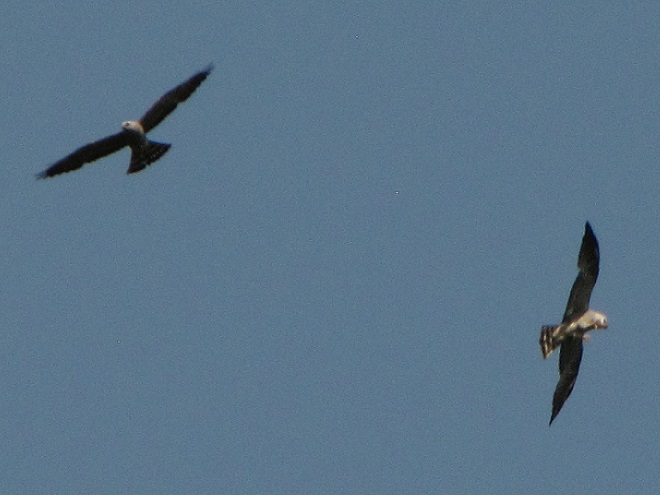
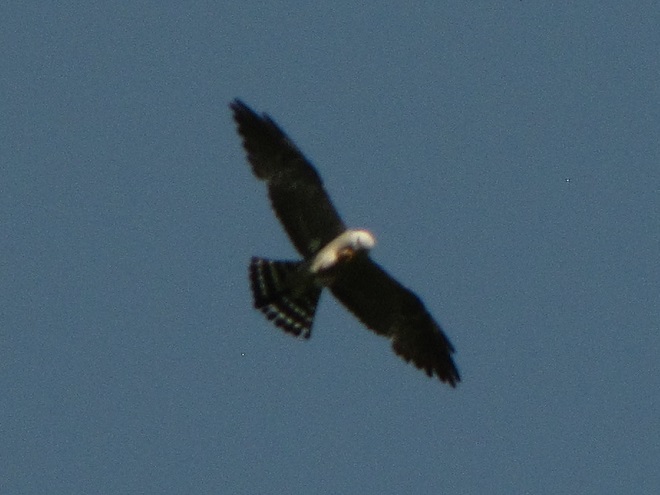

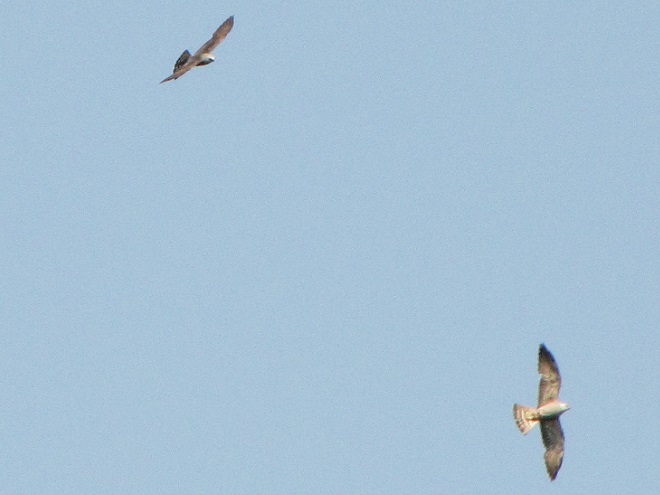
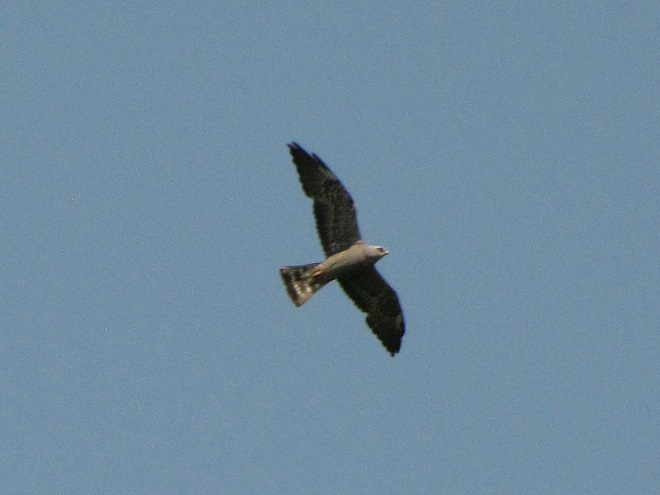
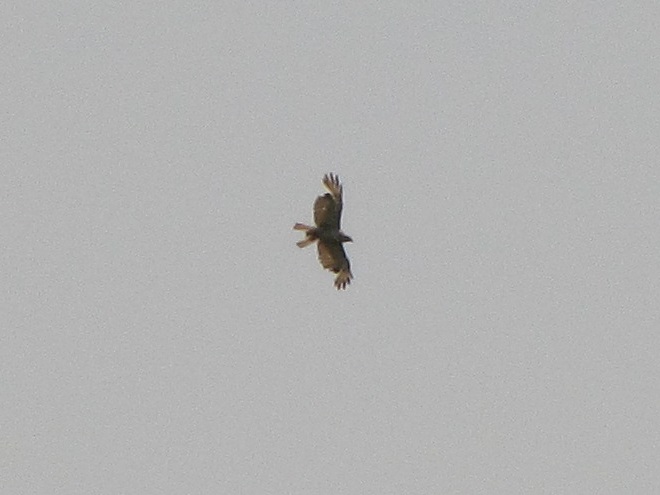
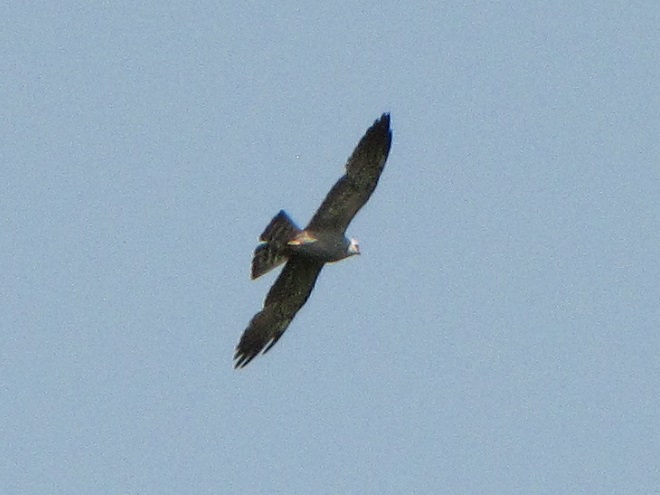
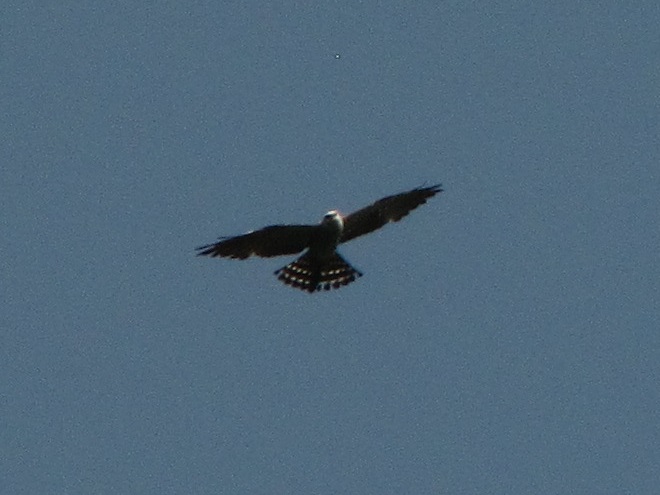
Will groups of Mississippi Kites develop a taste for our seventeen-year cicadas and move north into the Lower Susquehanna River Watershed? Ah, to be young and a nomad—that’s the life. Wandering on a whim with one goal in mind—food. It could very well be that now’s the time to be on the lookout for Mississippi Kites, especially where Brood X Periodical Cicadas are abundant.
Identification of the Three Species of Brood X Periodical Cicadas
The emergence of Brood X Periodical Cicadas is now in full swing. If you visit a forested area, you may hear the distant drone of very large concentrations of one or more of the three species that make up the Brood X event. The increasing volume of a chorus tends to attract exponentially greater numbers of male cicadas from within an expanding radius, causing a swarm to grow larger and louder—attracting more and more females to the breeding site.
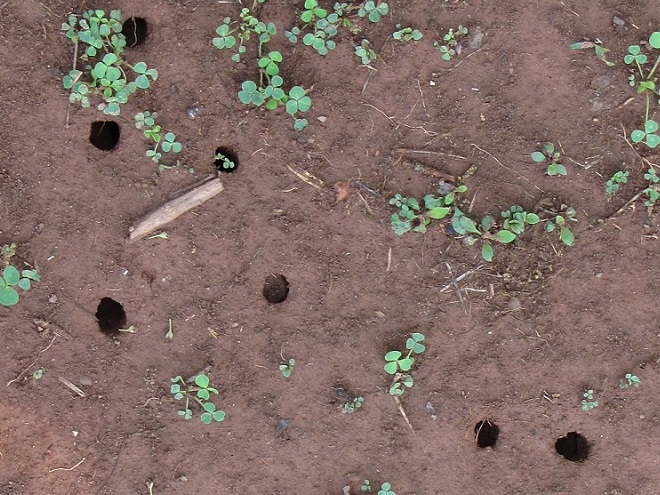


Each periodical cicada species has a distinctive song. This song concentrates males of the same species at breeding sites—then draws in an abundance of females of the same species to complete the mating process. Large gatherings of periodical cicadas can include all three species, but a close look at swarms on State Game Lands 145 in Lebanon County and State Game Lands 46 (Middle Creek Wildlife Management Area) in Lancaster County during recent days found marked separation by two of the three. Most swarms were dominated by Magicicada septendecim, the largest, most widespread, and most common species. However, nearly mono-specific swarms of M. cassini, the second most numerous species, were found as well. An exceptionally large one was northwest of the village of Colebrook on State Game Lands 145. It was isolated by a tenth of a mile or more from numerous large gatherings of M. septendecim cicadas in the vicinity. These M. cassini cicadas, with a chorus so loud that it outdistanced the songs made by the nearby swarms of M. septendecim, seized the opportunity to separate both audibly and physically from the more dominant species, thus providing better likelihood of maximizing their breeding success.
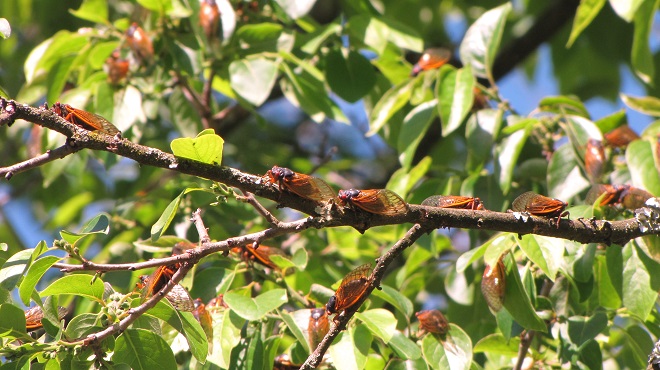
The process of identifying periodical cicadas is best begun by listening to their choruses, songs, and calls. After all, the sounds of cicadas will lead one to the locations where they are most abundant. The two most common species, M. septendecim and M. cassini, produce a buzzy chorus that, when consisting of hundreds or thousands of cicadas “singing” in unison, creates a droning wail that can carry for a quarter of a mile or more. It’s a surreal humming sound that may remind one of a space ship from a science fiction film.
Listen to the songs of individual cicadas at close range and you’ll hear a difference between the widespread M. septendecim “Pharaoh Periodical Cicada” and the other two species. M. septendecim‘s song is often characterized as a drawn out version of the word “Pharaoh”, hence one of the species’ common names (another is “Seventeen-year Locust”). As part of their courtship ritual, “Pharaoh Periodical Cicadas” sometimes make a purring or cooing sound, which is often extended to sound like kee-ow, then sometimes revved up further to pha-raoh. M. cassini, often known as “Cassin’s Periodical Cicada” or “Dwarf Periodical Cicada”, and the least common species, M. septendecula, often make scratchy clicking or rattling calls as a lead-in to their song. Most observers will find little difficulty locating the widespread M. septendecim “Pharaoh Periodical Cicada” by sound, so listening for something different—the clicking call—is an easy way to zero in on the two less common species.
To penetrate the droning choruses of large numbers of “Pharaoh” and/or “Cassin’s Periodical Cicadas”, sparingly distributed M. septendecula cicadas have a noise-penetrating song consisting of a series of quick raspy notes with a staccato rhythm reminiscent of a pulsating lawn sprinkler. It can often be differentiated by a listener even in the presence of a roaring chorus of one or both of the commoner species. However, a word of caution is due. To call in others of their kind, “Cassin’s Periodical Cicadas” can produce a courtship song similar to that of M. septendecula so that they too can penetrate the choruses of the enormous numbers of “Pharaoh Periodical Cicadas” that concentrate in many areas. To play it safe, it’s best to have a good look at the cicadas you’re trying to identify.

Visually identifying Brood X Periodical Cicadas to the species level is best done by looking for two key field marks—first, the presence or absence of orange between the eye and the root of the wings, and second, the presence or absence of orange bands on the underside of the abdomen. Seeing these field marks clearly requires in-hand examination of the cicada in question.



To reliably separate Brood X Periodical Cicadas by species, it is necessary to get a closeup view of the section of the thorax between the eye and the root (insertion) of the wings, plus a look at the underside of the abdomen. Here’s what you’ll see…
Magicicada septendecim—“Pharaoh Periodical Cicada”
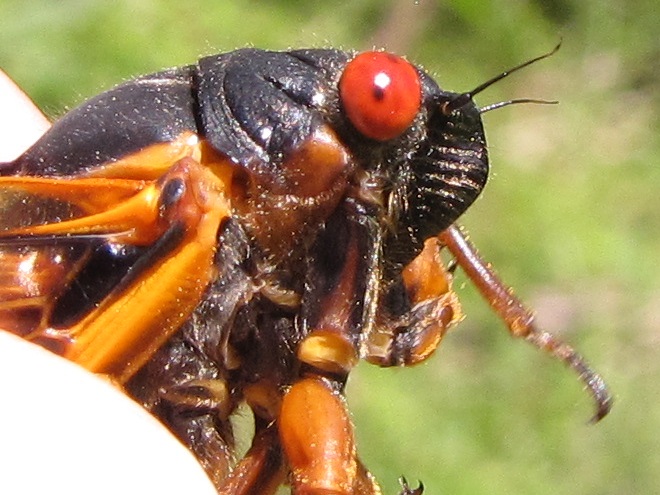

Magicicada cassini—“Cassin’s Periodical Cicada”

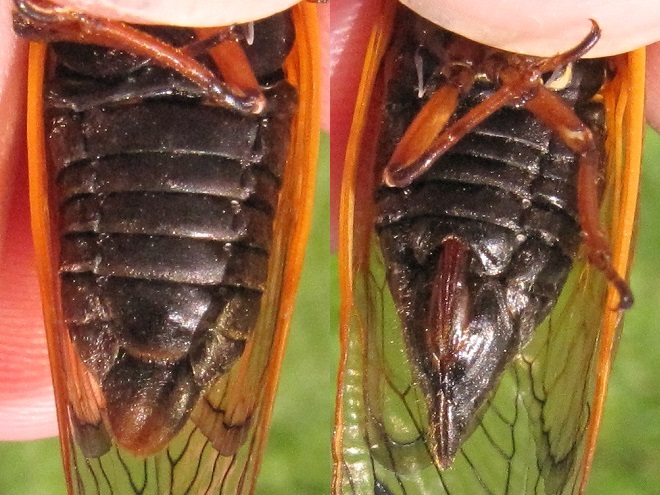
Magicicada septendecula

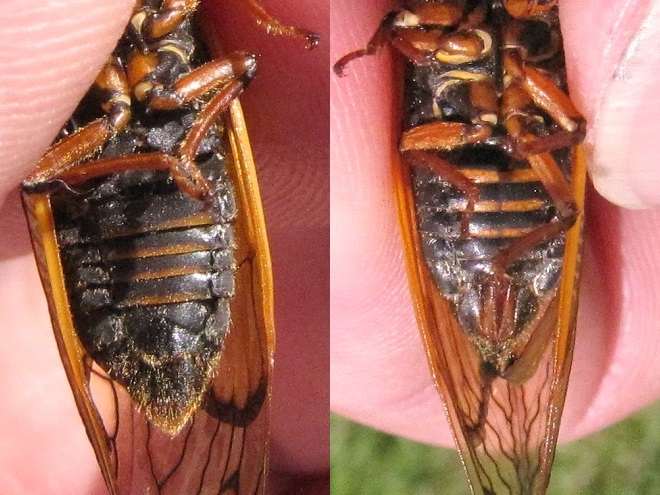
There you have it. Get out and take a closer look at the Brood X Periodical Cicadas near you.

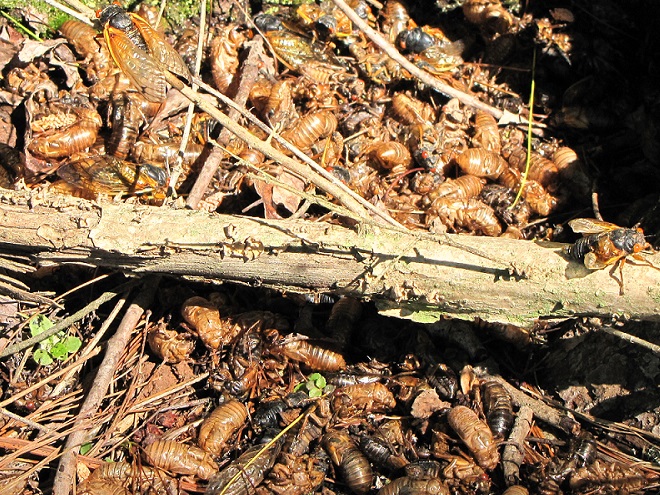
Blooming Now in the Lower Susquehanna Region: Mountain Laurel
Mountain Laurel (Kalmia latifolia), designated as Pennsylvania’s state flower, is a native evergreen shrub of forests situated on dry rocky slopes with acidic soils. As the common name implies, we think of it mostly as a plant of the mountainous regions—those areas of the Susquehanna watershed north of Harrisburg. It is indeed symbolic of Appalachian forests. But Mountain Laurel can also be found to the south of the capital city in forested highlands of the Piedmont. There, currently, it happens to be in full bloom. Let’s put on a pair of sturdy shoes and take a walk in the Hellam Hills of eastern York County at Rocky Ridge County Park to have a look.

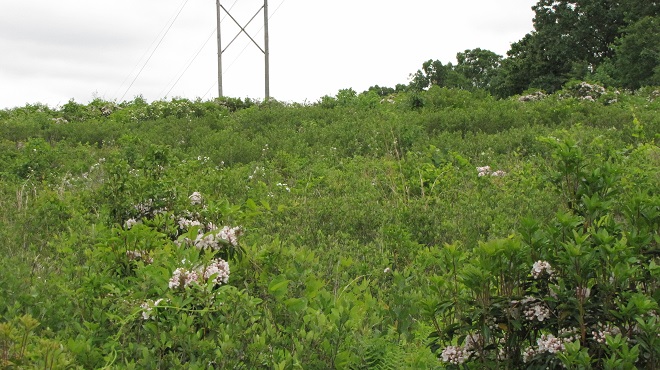
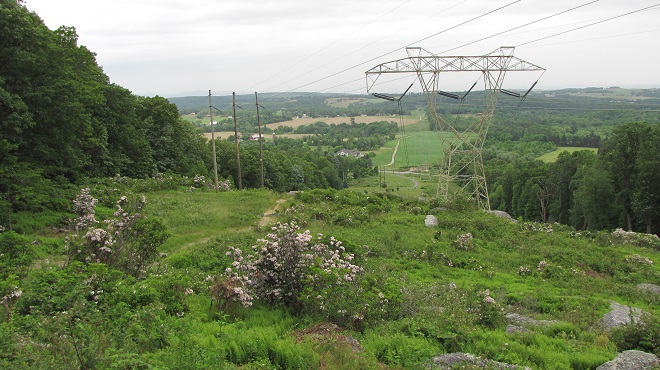

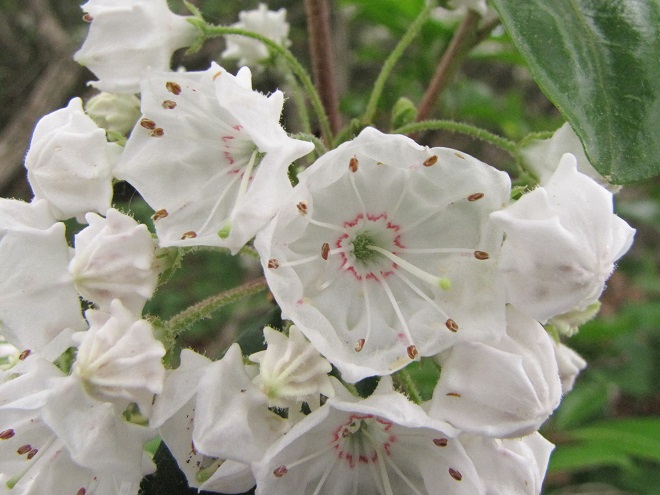


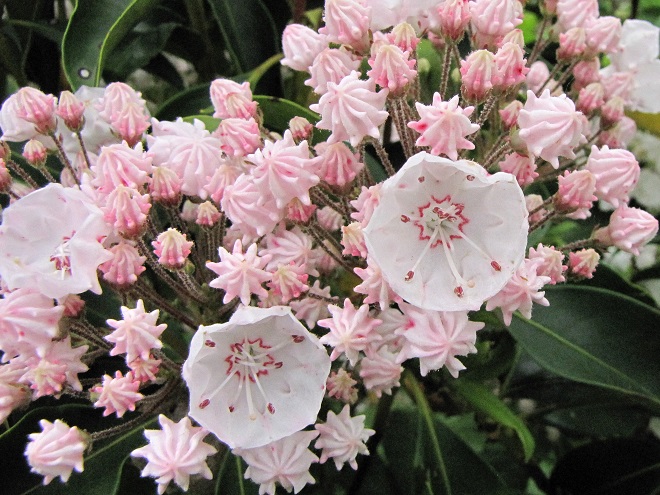
Rain or shine, do get out and have a look at the blooming Mountain Laurel.
They’re Here
The Magi have arrived. Emanating from the shadows of a nearby forest, you may hear the endless drone of what sounds like an extraterrestrial craft. Then you get your first look at those beady red eyes set against a full suit of black armor—out of this world. The Magicicada are here at last.
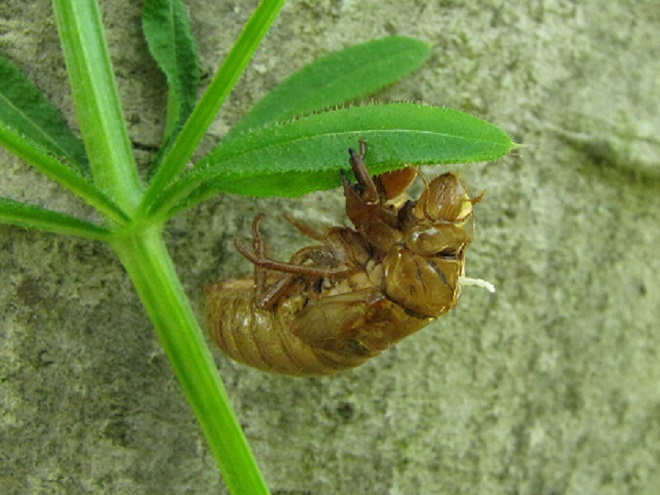
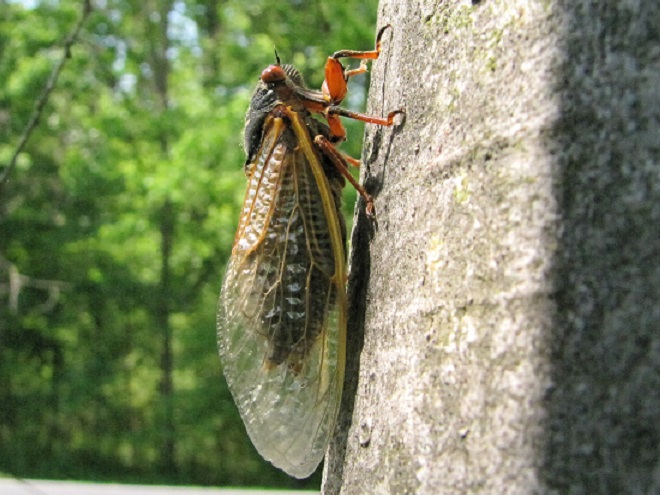
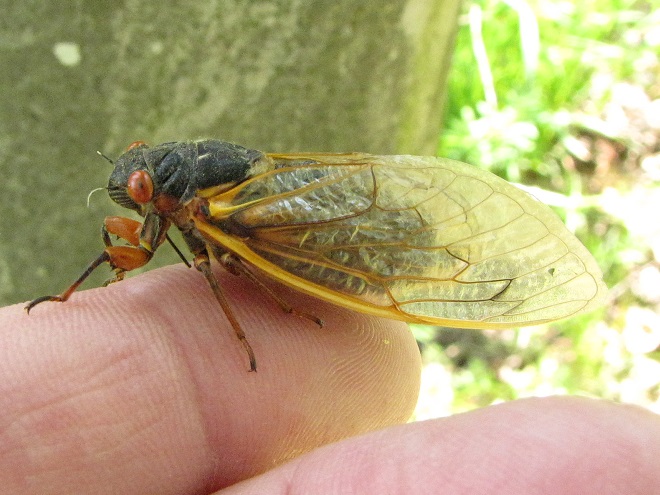

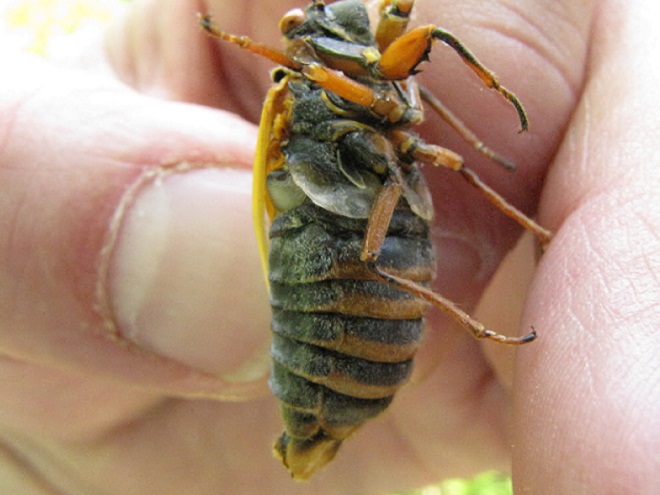
If you go out and about to observe periodical cicadas, keep an eye open for these species too…

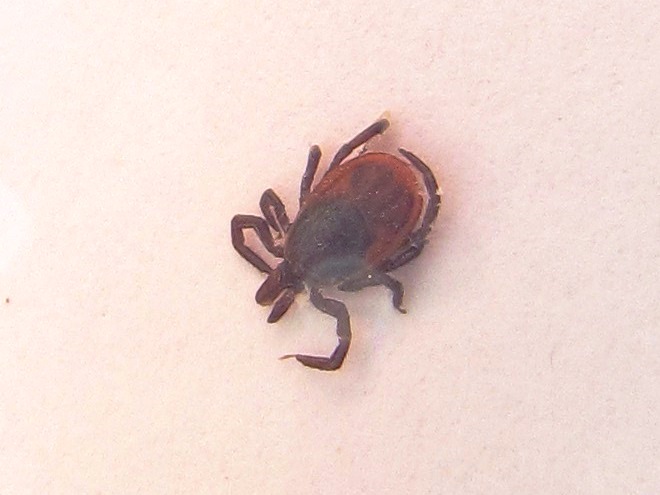
How to Remove a Mole in Just Five Minutes
Some consider them things of beauty. Others reckon them hideous—better kept out of sight and out of mind. They’re moles, and here’s how they’re removed in just five minutes.
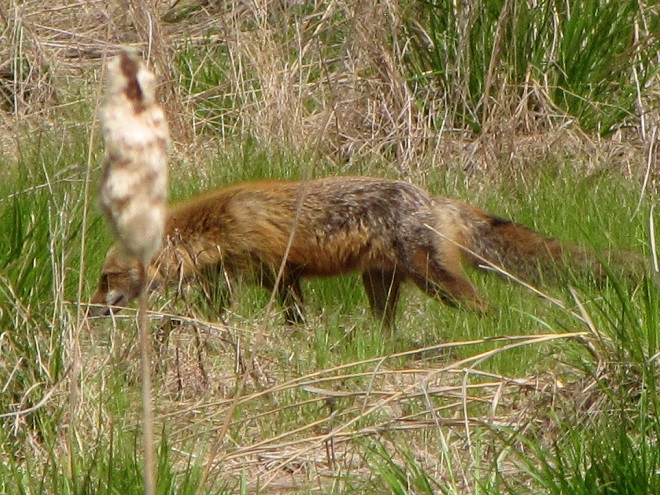


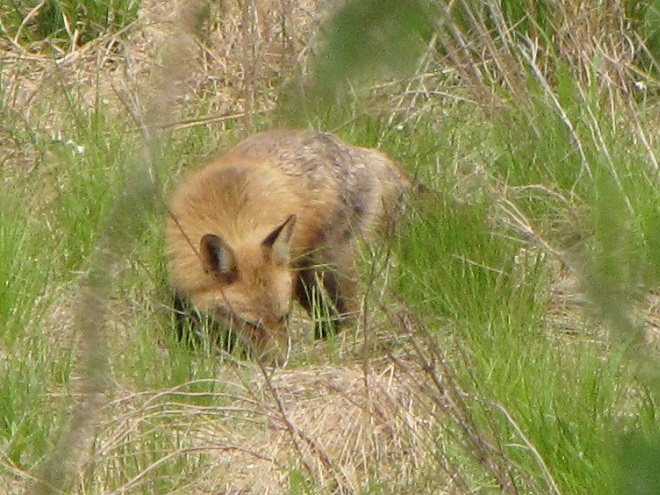
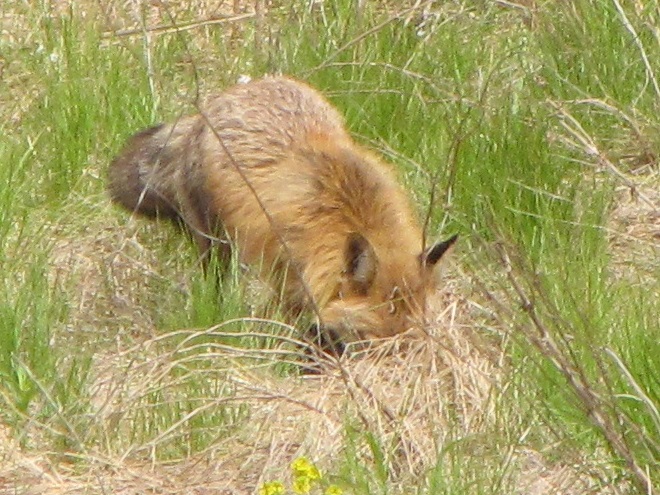

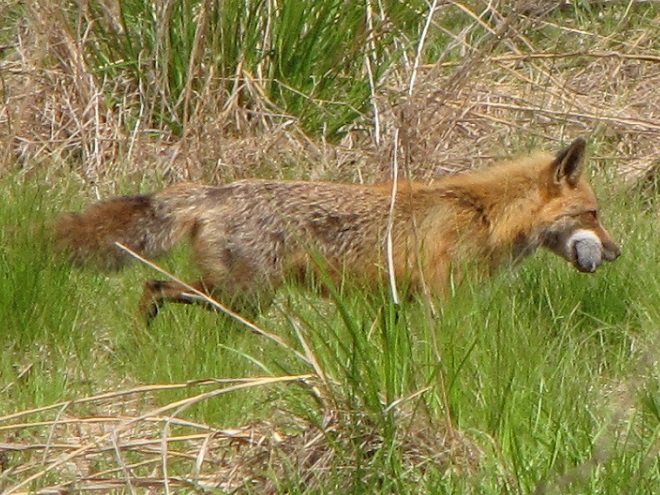
Moles—they’re an acquired taste.
Seventeen Years Ago Today
Back in the spring of 2004, members of the Tri-County Conewago Creek Association (T.C.C.C.A.), a non-profit conservation group founded to improve water quality in Conewago Creek and its tributaries in Dauphin, Lancaster, and Lebanon Counties in Pennsylvania, were, in order to better understand the status of the flora and fauna in the watershed, frequently spending their weekends surveying the animal and plant life found in the drainage basin’s forests, streams, and farmlands. This effort identified populations of several species of concern and helped supplement the more formal assessment that was used to determine the placement, scale, and scope of projects needed to reduce nutrient and erosion impairment in the Conewago’s waterways.
These regular outings happened to coincide with the Brood X Periodical Cicada emergence of 2004. Back then, as the record keeper for the T.C.C.C.A.’s weekly survey forays, your editor decided to shade a map of the Conewago Creek Watershed showing where the group’s volunteers encountered choruses of the Brood X cicadas. Fortunately, the map is still in the editor’s pile of stuff, and is reproduced here for you.
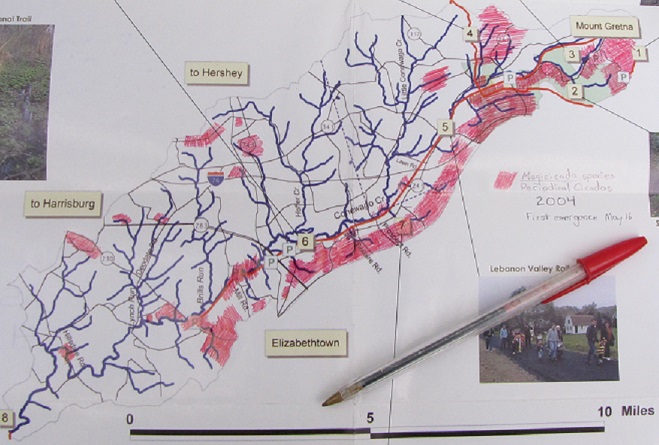
A notation on the map (visible just above the cap on the pen) indicates May 16 as the emergence date for the cicadas in 2004—seventeen years ago today.
So why no seventeen-year cicadas yet in 2021? The answer is ground temperature. This year, by mid-April, Brood X Periodical Cicadas were just below the leaves and rocks, ready to break the surface. But a cold month since then has stalled their emergence. A thermometer pushed into the forest soil today showed readings of 60 degrees and less—at least four degrees below the temperature needed to get the nymphs crawling out of the dirt to climb rocks and vegetation where they’ll molt, dry, and take flight.

A warm week ahead with daytime temperatures in the eighties and nighttime lows in the fifties and sixties, instead of in the forties, should get the woodland soils warming. Brood X Periodical Cicadas will be out and about in a jiffy—and you’ll hear all about it.

Maximum Variety
You’ll want to go for a walk this week. It’s prime time to see birds in all their spring splendor. Colorful Neotropical migrants are moving through in waves to supplement the numerous temperate species that arrived earlier this spring to begin their nesting cycle. Here’s a sample of what you might find this week along a rail-trail, park path, or quiet country road near you—even on a rainy or breezy day.
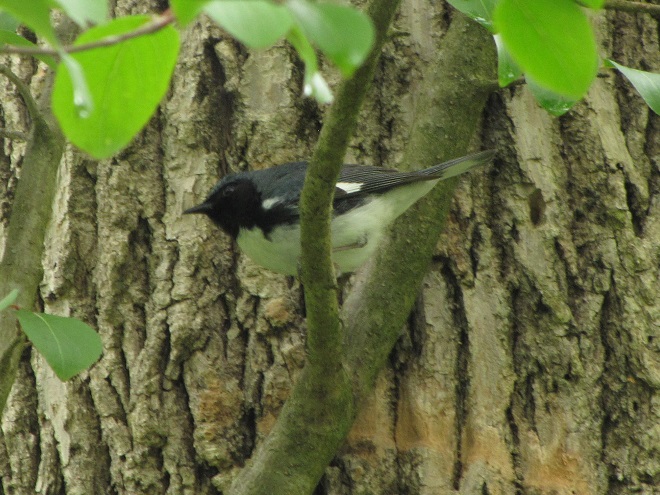
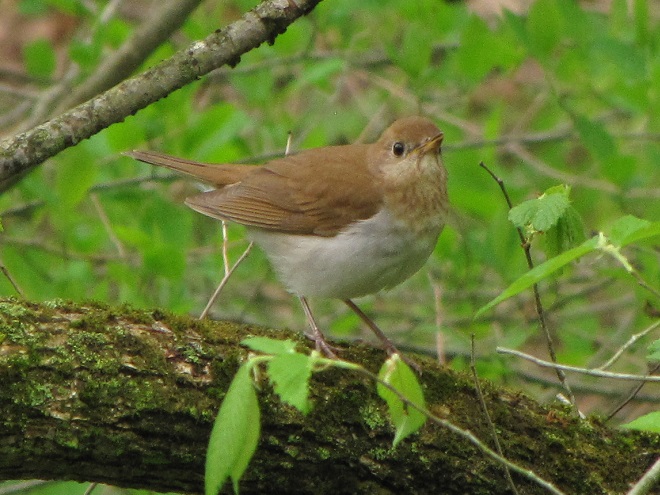
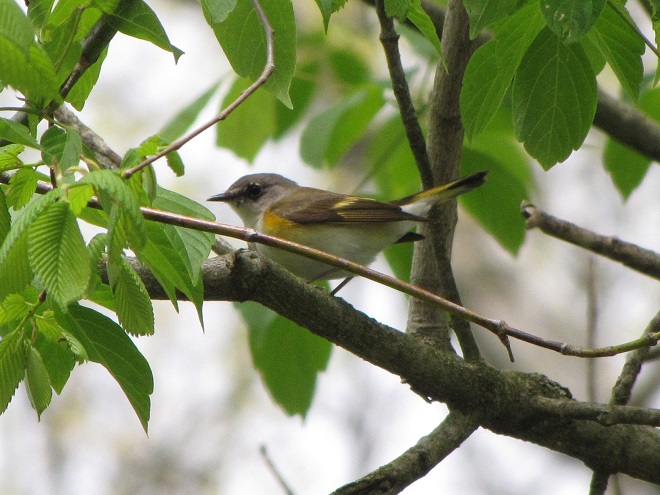
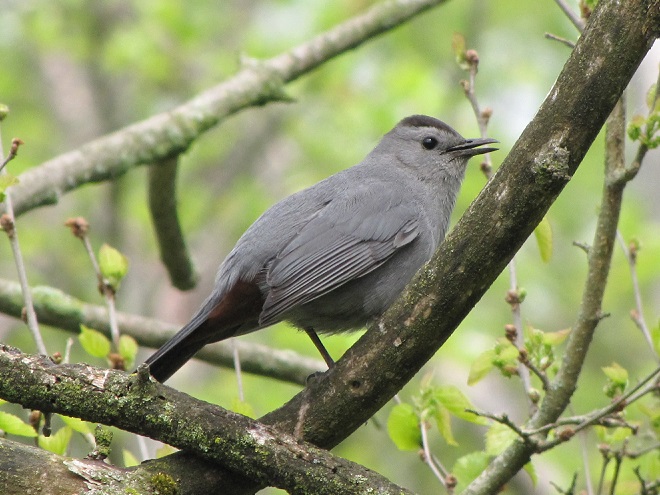

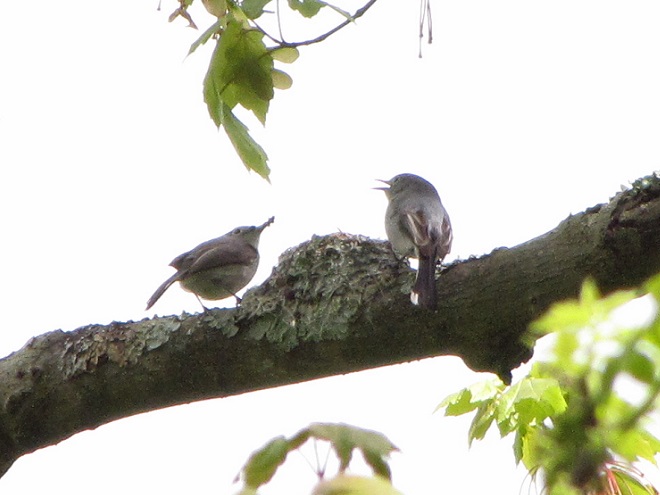
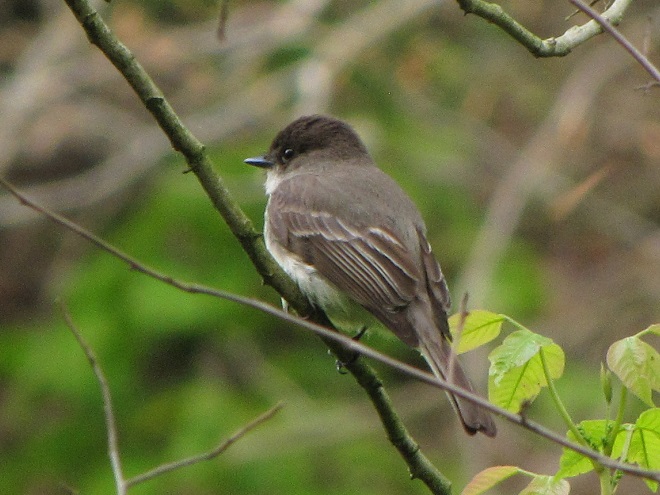


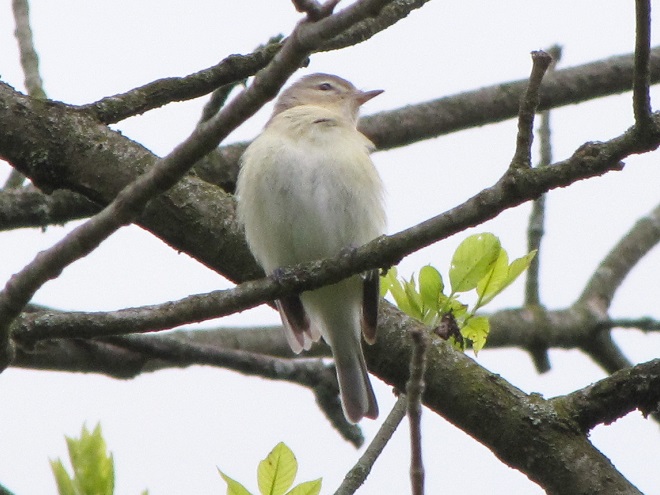
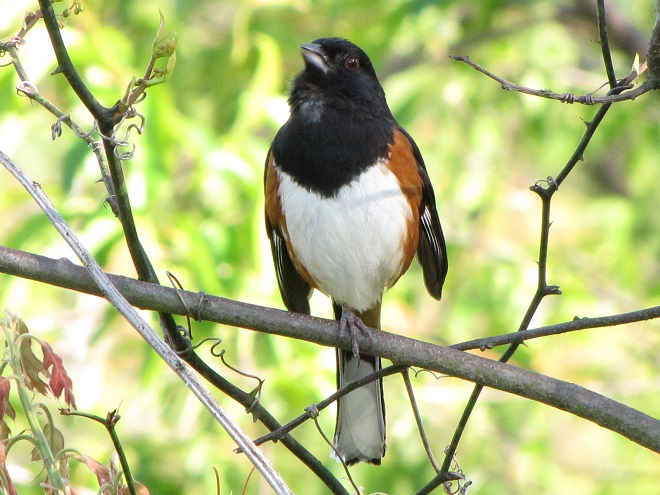


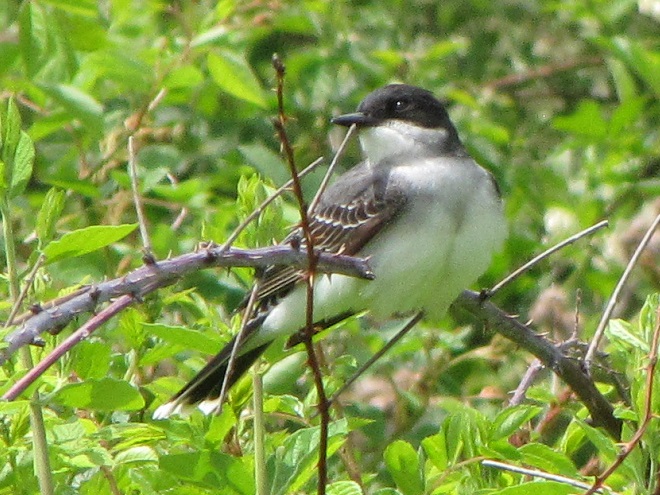
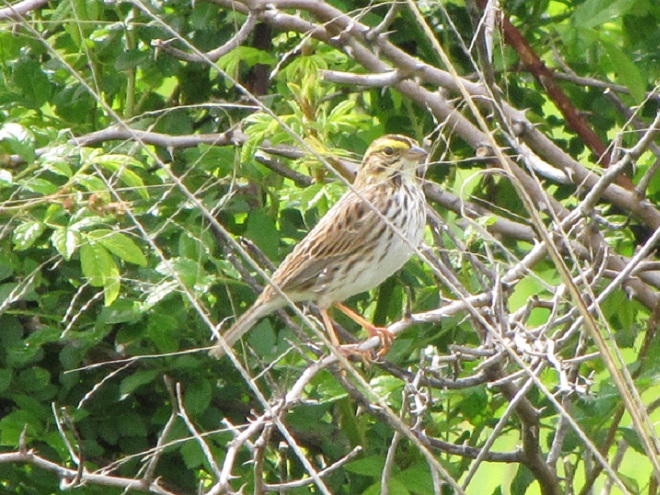
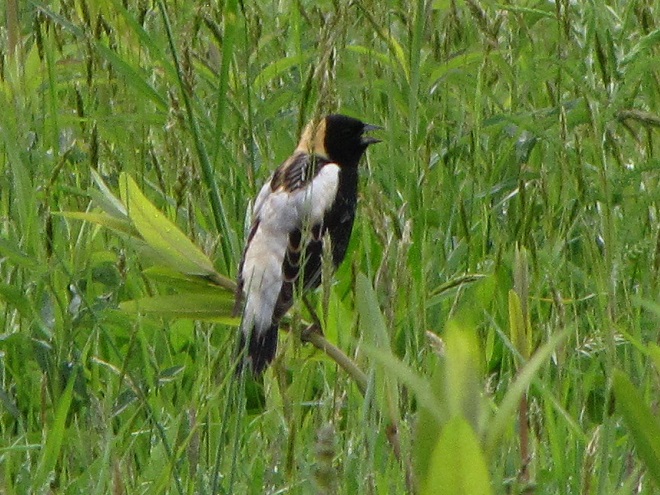
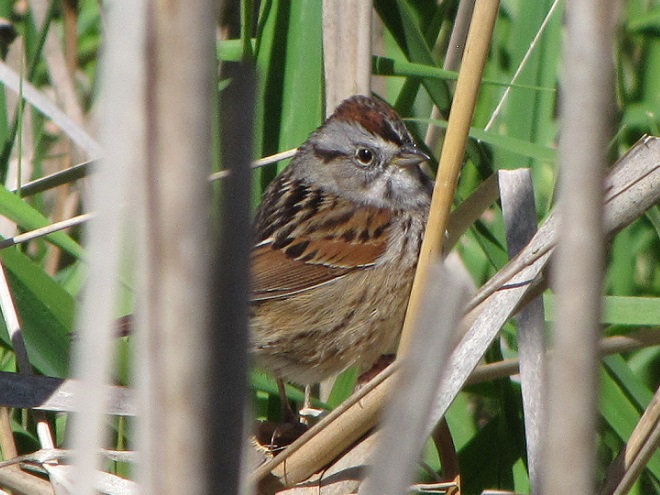
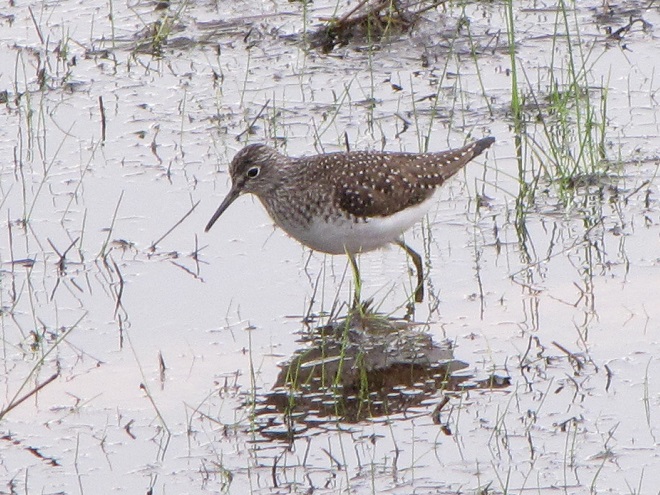
Conowingo Dam: Cormorants, Eagles, Snakeheads and a Run of Hickory Shad
Meet the Double-crested Cormorant, a strangely handsome bird with a special talent for catching fish. You see, cormorants are superb swimmers when under water—using their webbed feet to propel and maneuver themselves with exceptional speed in pursuit of prey.

Double-crested Cormorants, hundreds of them, are presently gathered along with several other species of piscivorous (fish-eating) birds on the lower Susquehanna River below Conowingo Dam near Rising Sun, Maryland. Fish are coming up the river and these birds are taking advantage of their concentrations on the downstream side of the impoundment to provide food to fuel their migration or, in some cases, to feed their young.
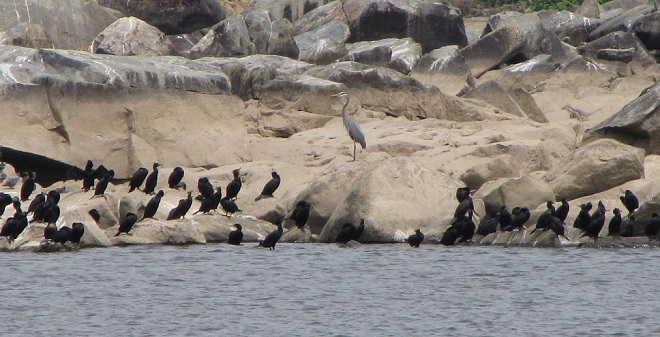

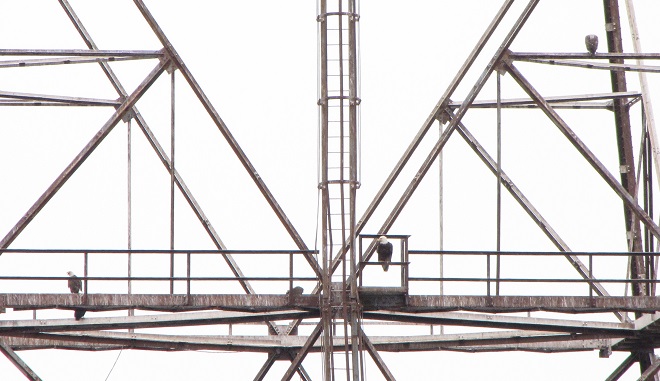
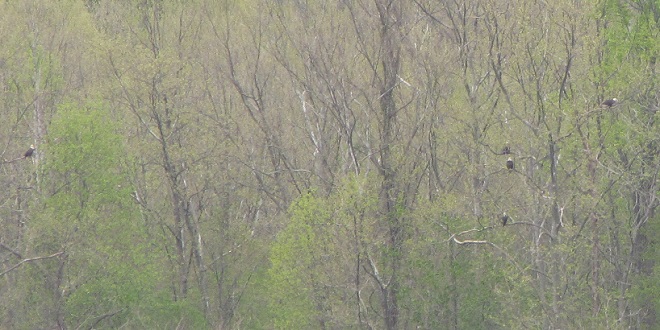
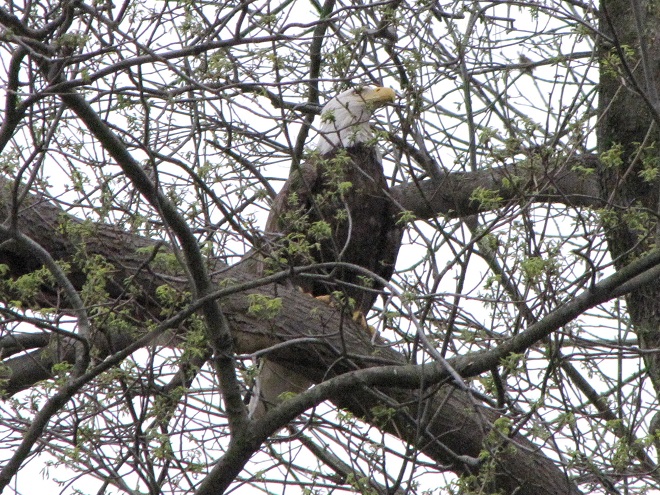
In addition to the birds, the movements of fish attract larger fish, and even larger fishermen.


The excitement starts when the sirens start to wail and the red lights begin flashing. Yes friends, it’s showtime.




Within minutes of the renewed flow, birds are catching fish.

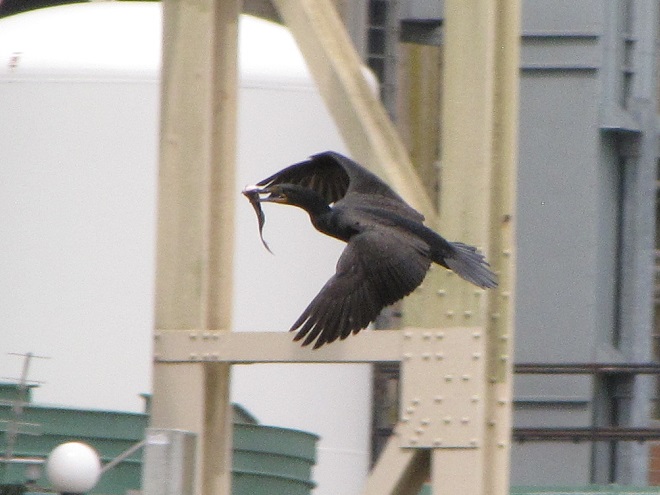
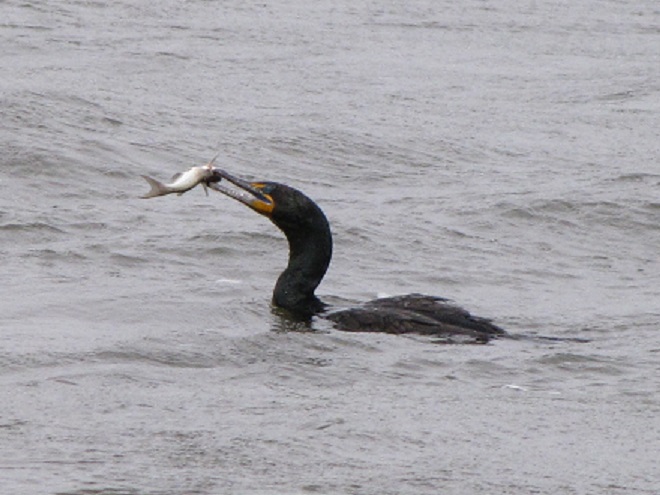
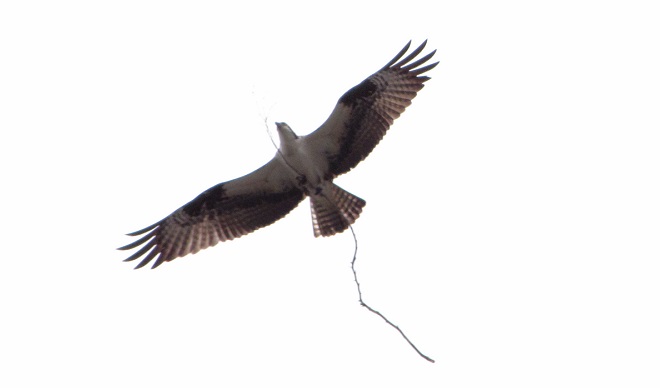

Then the anglers along the wave-washed shoreline began catching fish too.

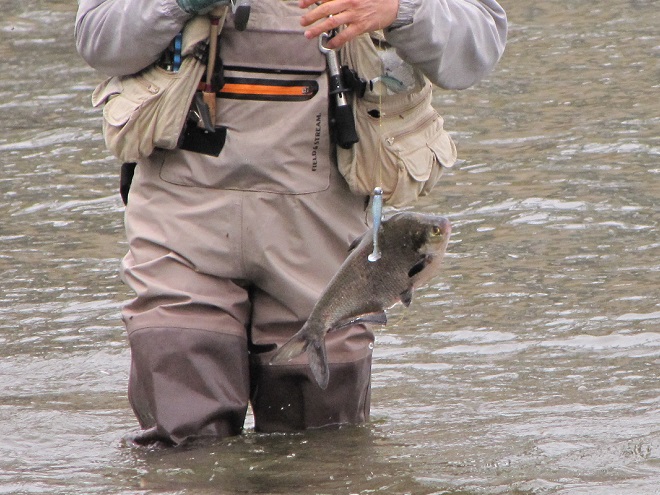
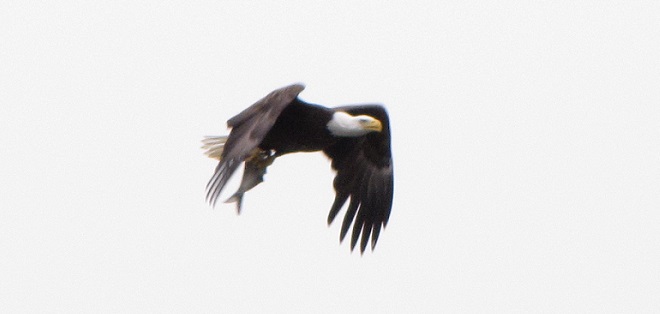
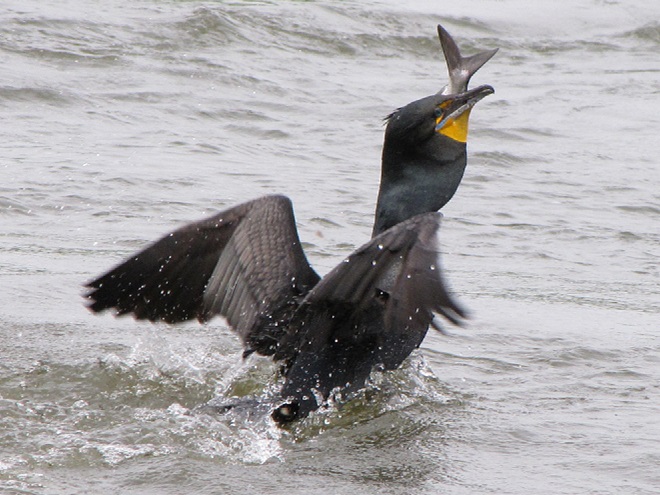

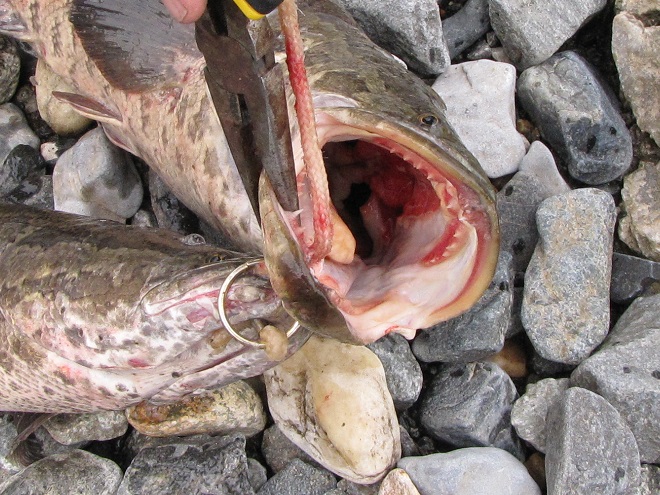

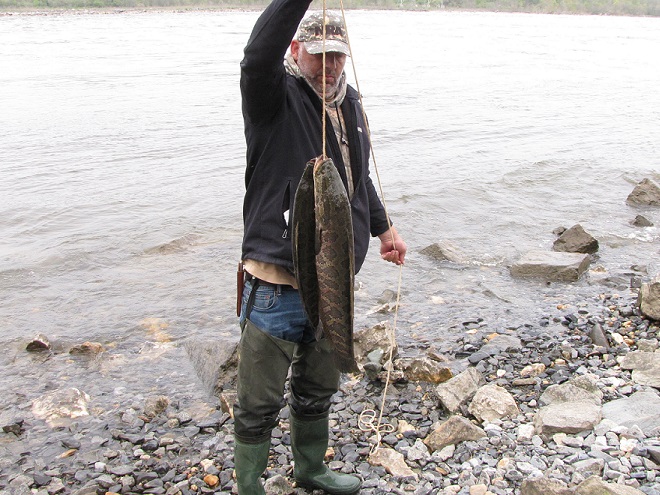
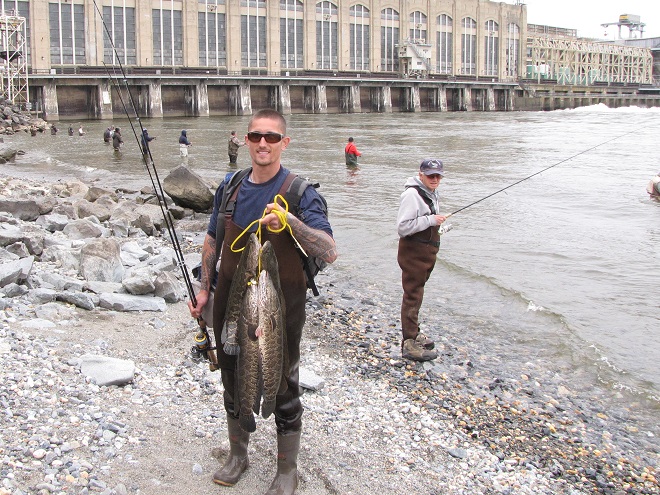
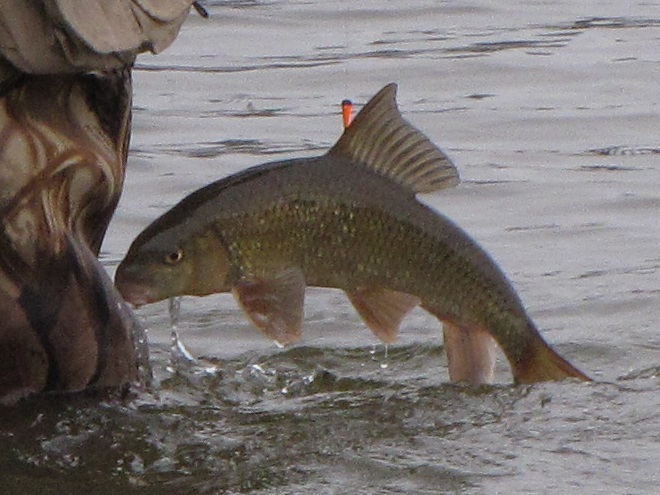
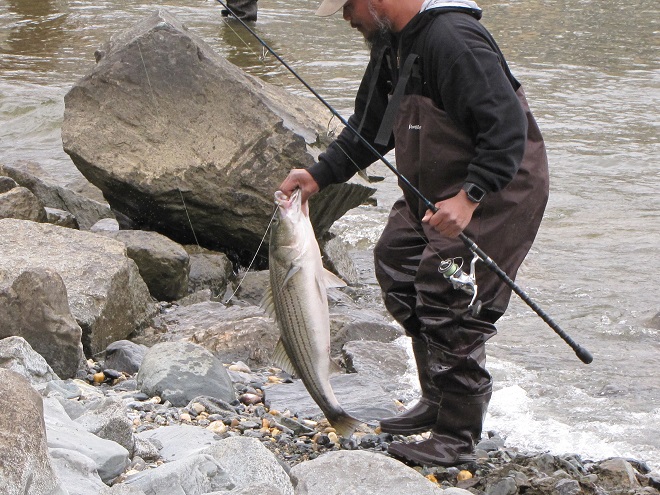



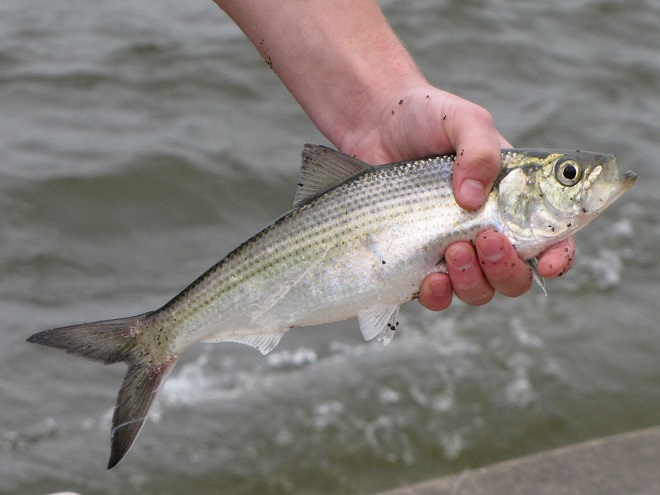


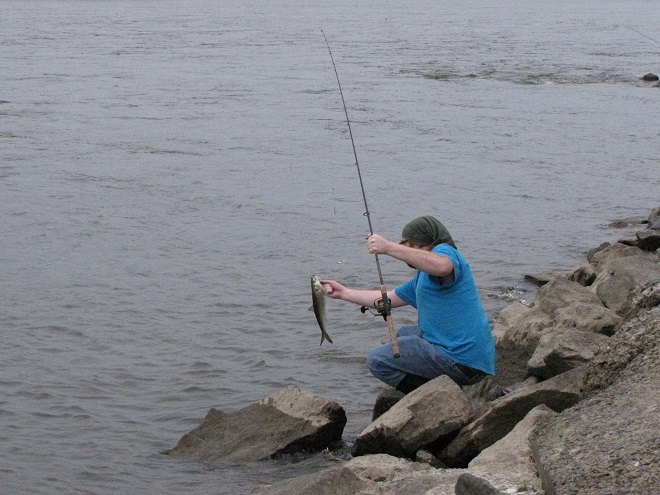

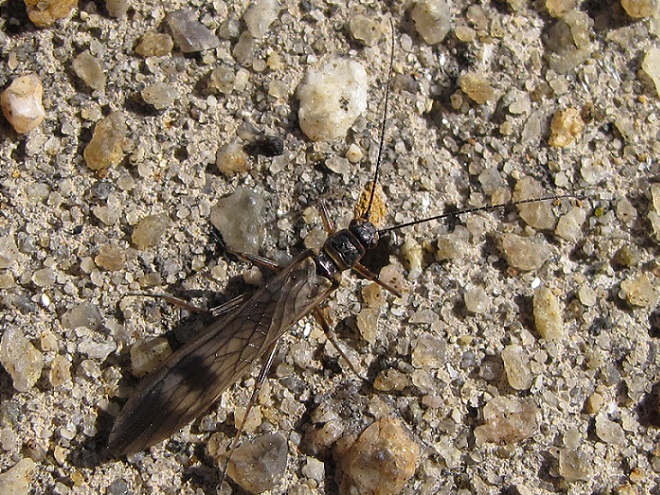

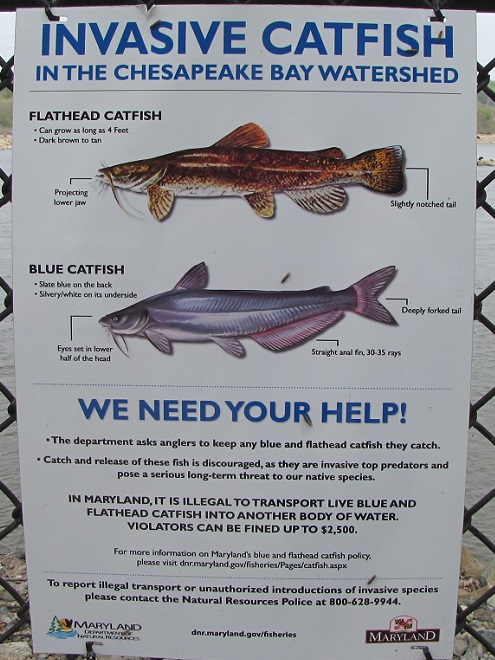
The arrival of migrating Hickory Shad heralds the start of a movement that will soon include White Perch, anadromous American Shad, and dozens of other fish species that swim upstream during the springtime. Do visit Fisherman’s Park at Conowingo Dam to see this spectacle before it’s gone. The fish and birds have no time to waste, they’ll soon be moving on.
To reach Exelon’s Conowingo Fisherman’s Park from Rising Sun, Maryland, follow U.S. Route 1 south across the Conowingo Dam, then turn left onto Shuresville Road, then make a sharp left onto Shureslanding Road. Drive down the hill to the parking area along the river. The park’s address is 2569 Shureslanding Road, Darlington, Maryland.
A water release schedule for the Conowingo Dam can be obtained by calling Exelon Energy’s Conowingo Generation Hotline at 888-457-4076. The recording is updated daily at 5 P.M. to provide information for the following day.
And remember, the park can get crowded during the weekends, so consider a weekday visit.
Coming Soon, Very Soon: Brood X Periodical Cicadas
Yesterday, a hike through a peaceful ridgetop woods in the Furnace Hills of southern Lebanon County resulted in an interesting discovery. It was extraordinarily quiet for a mid-April afternoon. Bird life was sparse—just a pair of nesting White-breasted Nuthatches and a drumming Hairy Woodpecker. A few deer scurried down the hillside. There was little else to see or hear. But if one were to have a look below the forest floor, they’d find out where the action is.

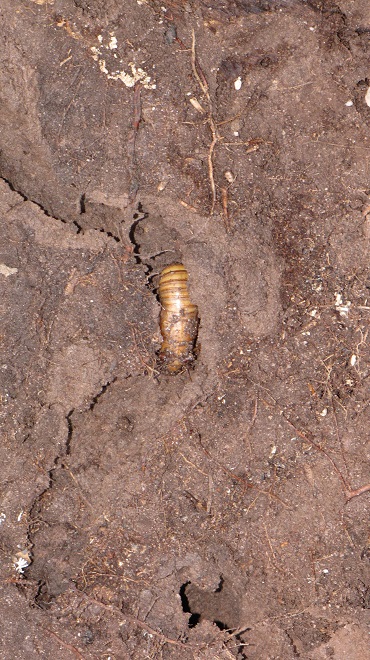
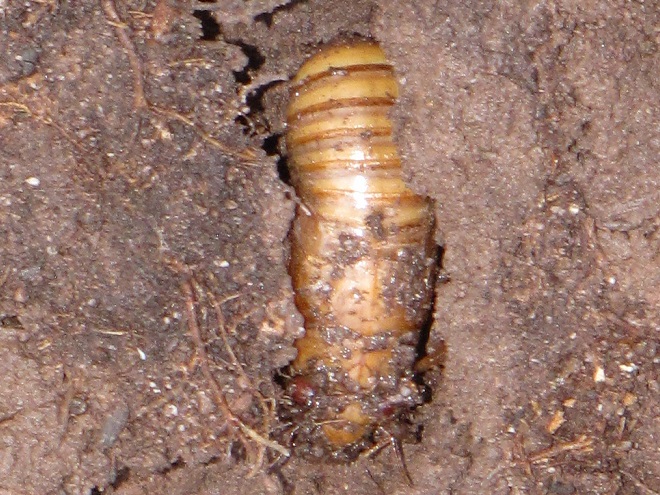
2021 is an emergence year for Brood X, the “Great Eastern Brood”—the largest of the 15 surviving broods of periodical cicadas. After seventeen years as subterranean larvae, the nymphs are presently positioned just below ground level, and they’re ready to see sunlight. After tunneling upward from the deciduous tree roots from which they fed on small amounts of sap since 2004, they’re awaiting a steady ground temperature of about 64 degrees Fahrenheit before surfacing to climb a tree, shrub, or other object and undergo one last molt into an imago—a flying adult.




The woodlots of the Lower Susquehanna River Watershed won’t be quiet for long. Loud choruses of male periodical cicadas will soon roar through forest and verdant suburbia. They’re looking for love, and they’re gonna die trying to find it. And dozens and dozens of animal species will take advantage of the swarms to feed themselves and their young. Yep, the woods are gonna be a lively place real soon.
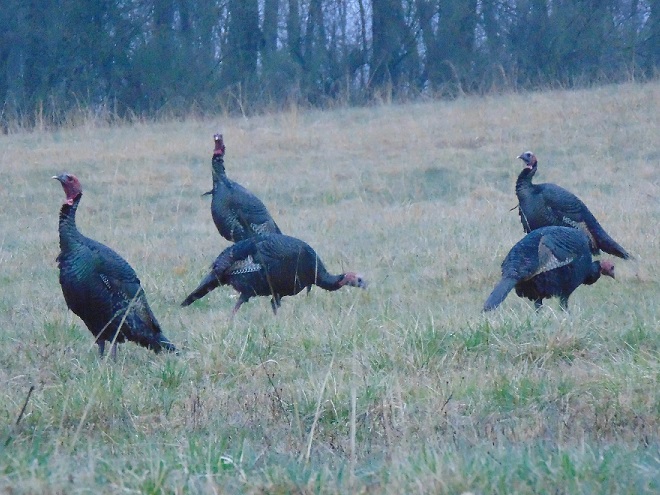
Piebald Deer at Middle Creek Wildlife Management Area
Except for a few injured stragglers, Snow Geese have departed Middle Creek Wildlife Management Area in Lancaster and Lebanon Counties to continue their journey north to breeding grounds in Canada. The crowds of observers are gone too. So if you’re looking for a reason to pay a visit to a much quieter refuge, here it is—especially if you’re a devoted deer worshiper.
There is at least one white deer being seen on the refuge. That’s right, a white deer. Its unusual color is really becoming conspicuous as the landscape begins turning from shades of gray to various hues of bright green.


If you go, you’ll need binoculars to pick out these uncommon deer. And remember to be very careful when parking and observing along Kleinfeltersville Road. The speeding cars and trucks there can be wickedly dangerous, so give them lots of room.
Forest vs. Woodlot
Let’s take a quiet stroll through the forest to have a look around. The spring awakening is underway and it’s a marvelous thing to behold. You may think it a bit odd, but during this walk we’re not going to spend all of our time gazing up into the trees. Instead, we’re going to investigate the happenings at ground level—life on the forest floor.

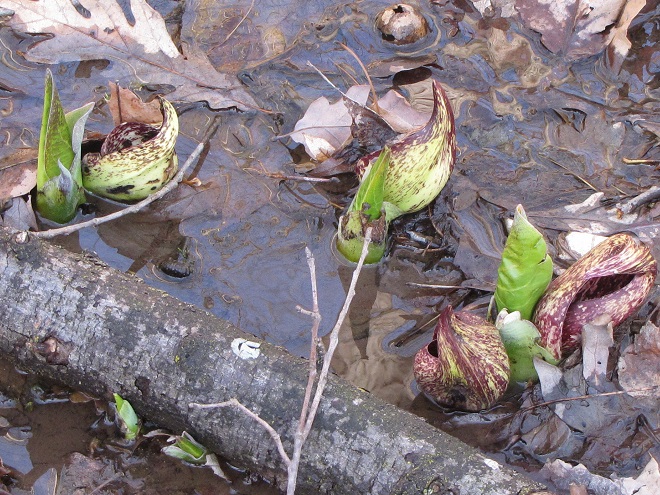
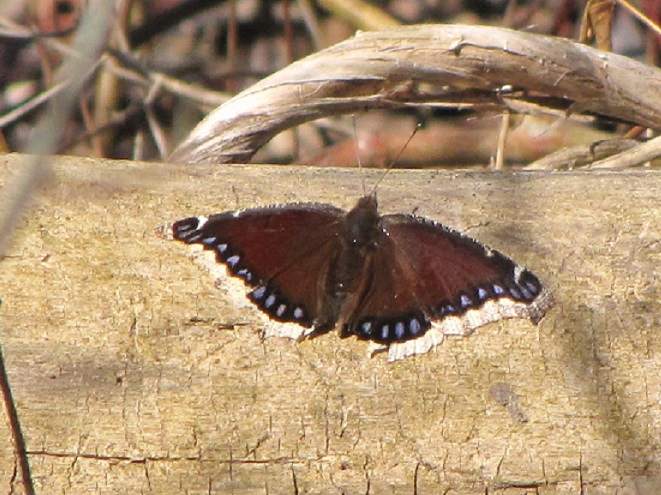



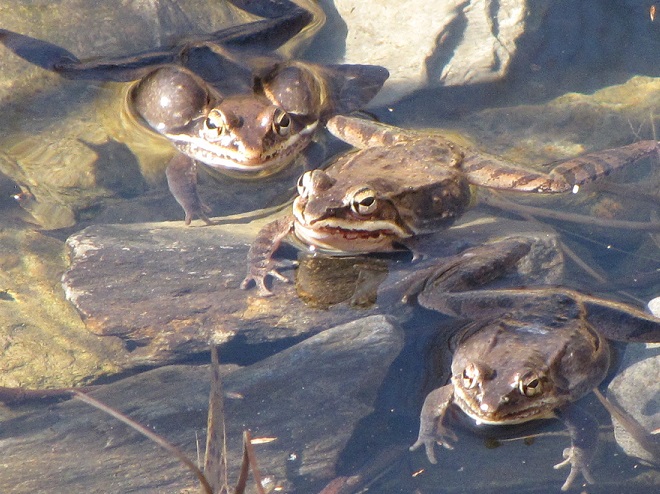
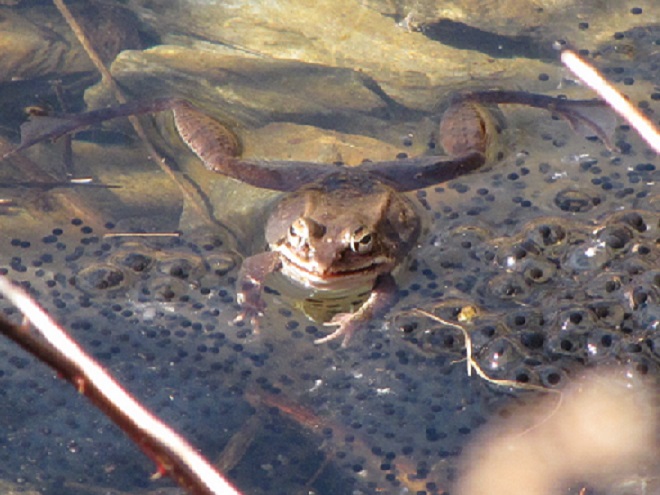
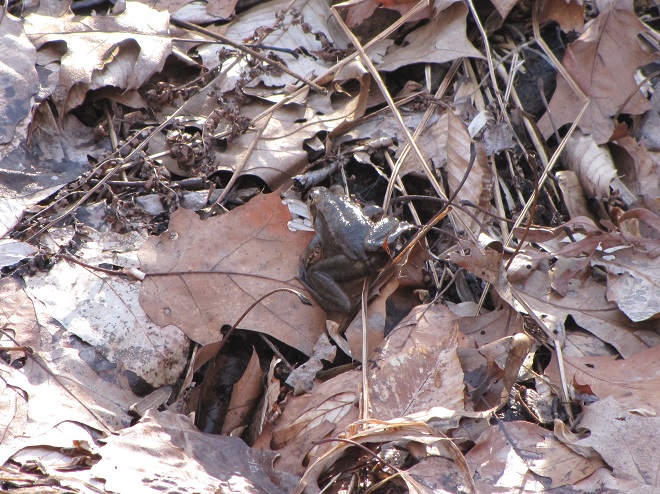


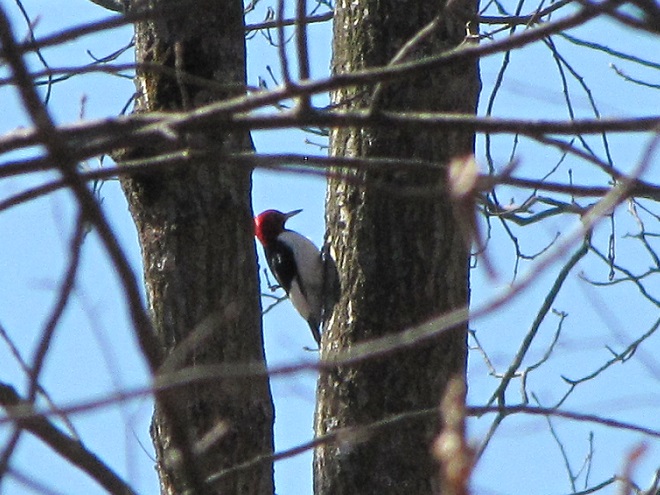
There certainly is more to a forest than the living trees. If you’re hiking through a grove of timber getting snared in a maze of prickly Multiflora Rose (Rosa multiflora) and seeing little else but maybe a wild ungulate or two, then you’re in a has-been forest. Logging, firewood collection, fragmentation, and other man-made disturbances inside and near forests take a collective toll on their composition, eventually turning them to mere woodlots. Go enjoy the forests of the lower Susquehanna valley while you still can. And remember to do it gently; we’re losing quality as well as quantity right now—so tread softly.
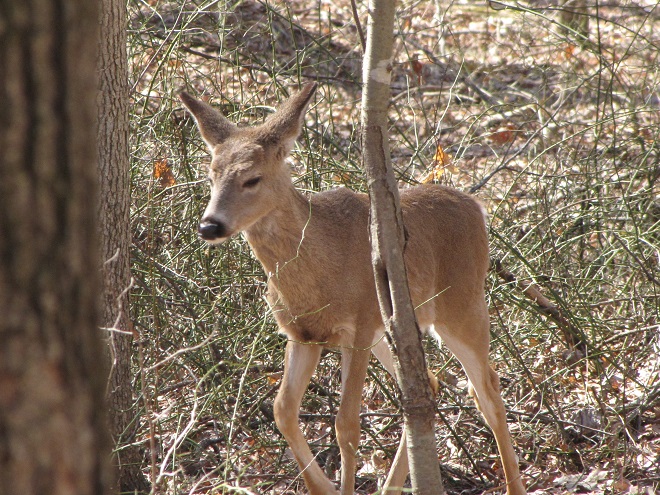
Snow Goose Numbers Peaking
It’s that time—Snow Goose numbers are peaking at Middle Creek Wildlife Management Area in Lancaster/Lebanon Counties.
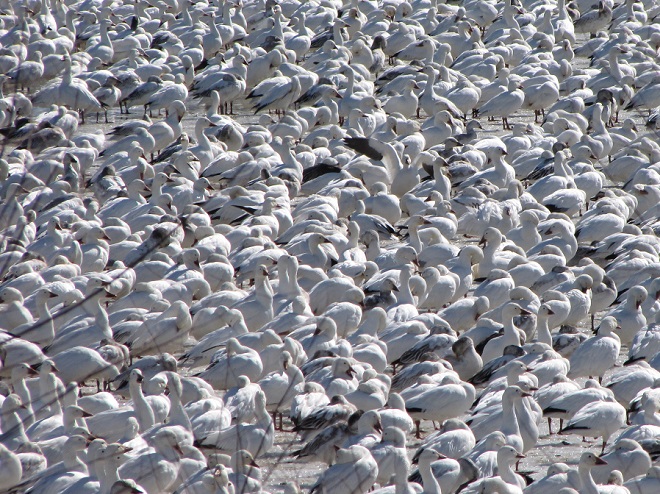



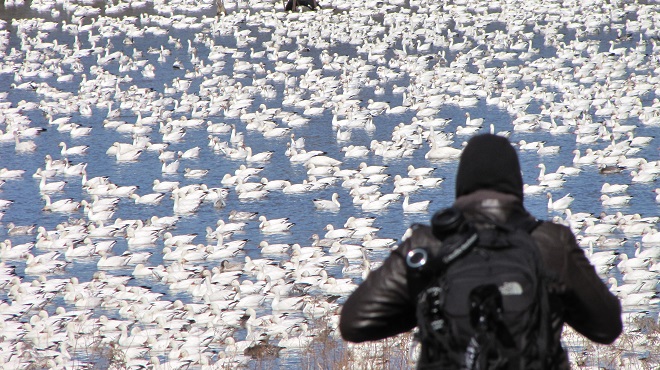
Common Goldeneyes, Buffleheads, and Migrating Canada Geese
Spring migration is underway and waterfowl are on the move along the lower Susquehanna River. Here is a sample of sightings collected during a walk across the Veteran’s Memorial Bridge at Columbia-Wrightsville this morning.





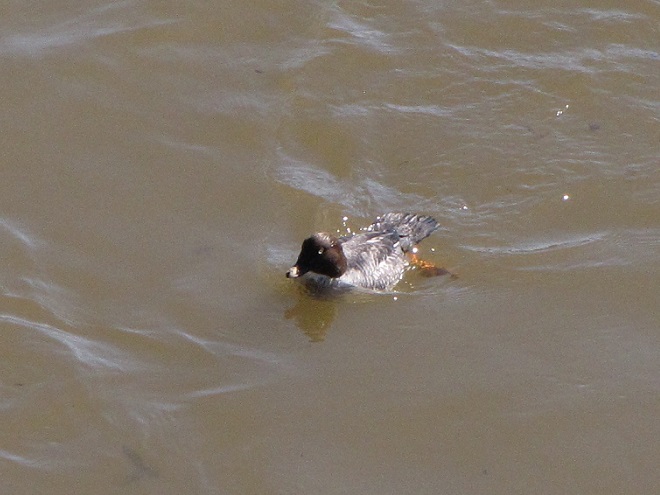
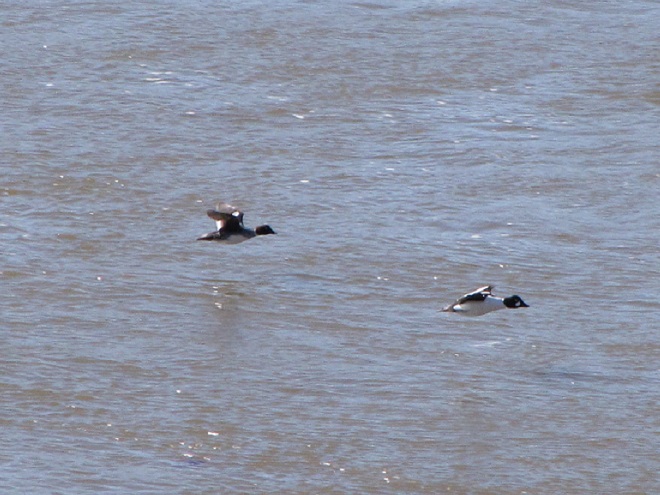
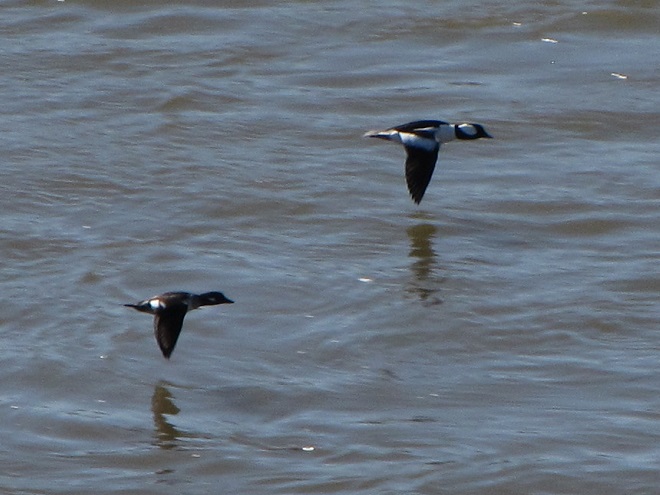

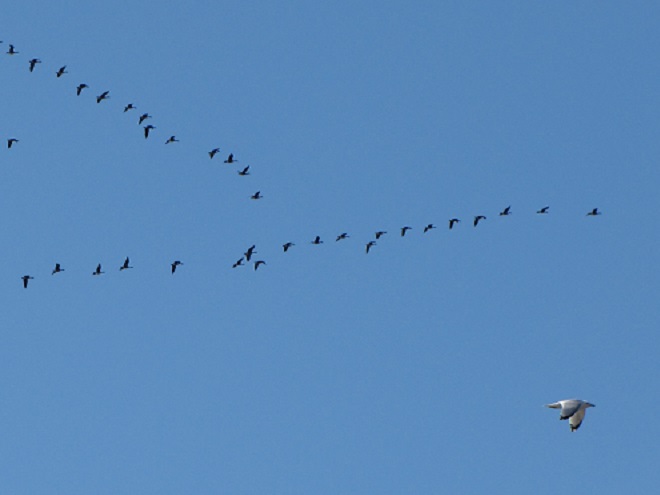

This is, of course, just the beginning of the great spring migration. Do make a point of getting out to observe the spectacle. And remember, keep looking up—you wouldn’t want to miss anything.
More than a Mint Dish
On a snowy winter day, it sure is nice to see some new visitors at a backyard feeding station. Here at the susquehannawildlife.net headquarters, American Robins have arrived to partake of the offerings.
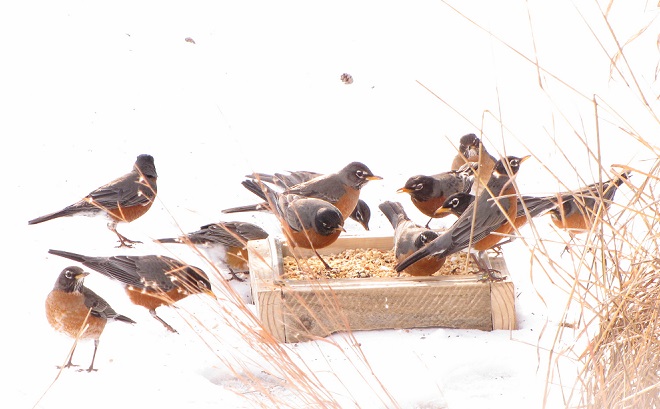
For this flock of robins, which numbered in excess of 150 individuals, the contents of this tray were a mere garnish to the meal that would sustain them through 72 hours of stormy weather. The main course was the supply of ripe berries on shrubs and trees in the headquarters garden.
Their first choice—the bright red fruits of the Common Winterberry.


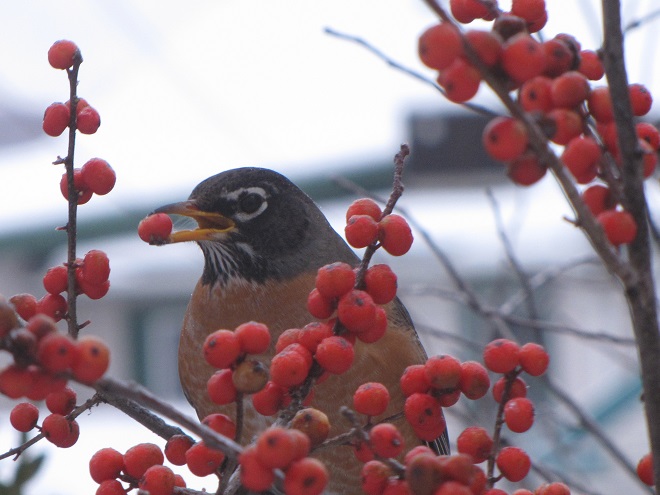


After cleaning off the winterberry shrubs, other fruits became part of the three-day-long feast.
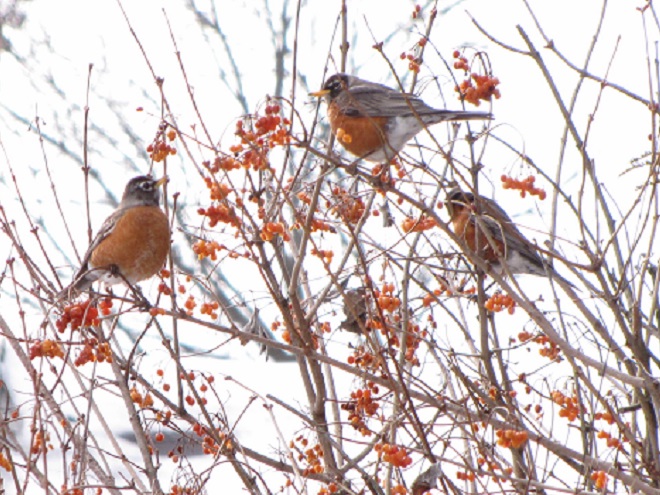
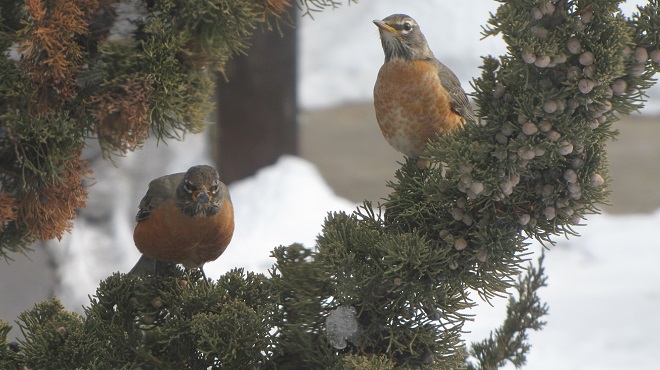
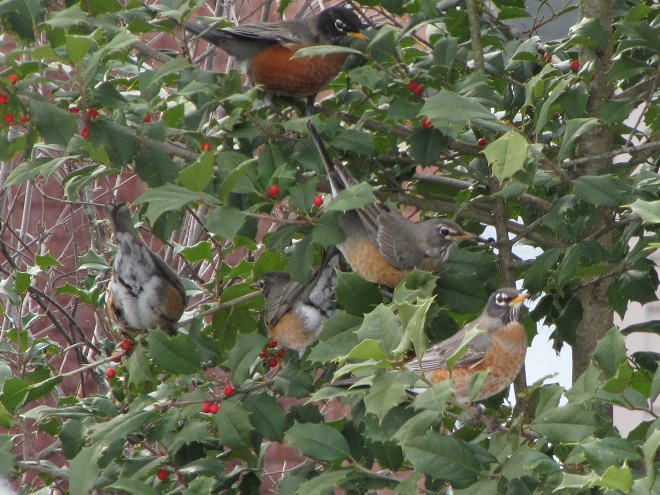
Wouldn’t it be great to see these colorful birds in your garden each winter? You can, you know. Won’t you consider adding plantings of native trees and shrubs to your property this spring? Here at the susquehannawildlife.com headquarters we mow no lawn; the lawn is gone. Mixing evergreens and fruit-producing shrubs with native warm-season grasses and flowering plants has created a wildlife oasis absent of that dirty habit of mowing and blowing.
You can find many of the plants seen here at your local garden center. Take a chunk out of your lawn by paying them a visit this spring.
Want a great deal? Many of the County Conservation District offices in the lower Susquehanna region are having their annual spring tree sales right now. Over the years, we obtained many of our evergreens and berry-producing shrubs from these sales for less than two dollars each. At that price you can blanket that stream bank or wet spot in the yard with winterberries and mow it no more! The deadlines for orders are quickly approaching, so act today—literally, act today. Visit your County Conservation District’s website for details including selections, prices, order deadlines, and pickup dates and locations.

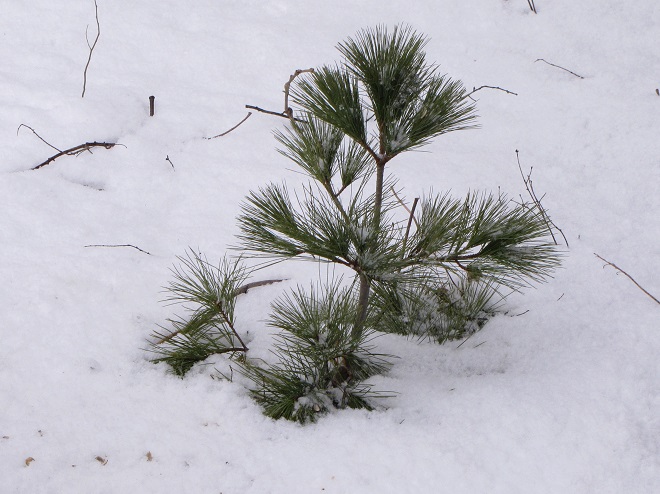
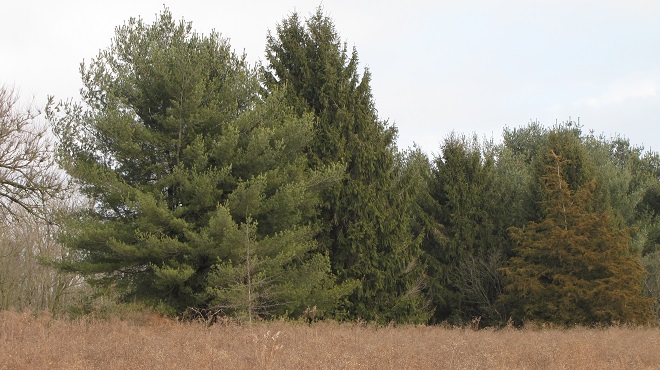
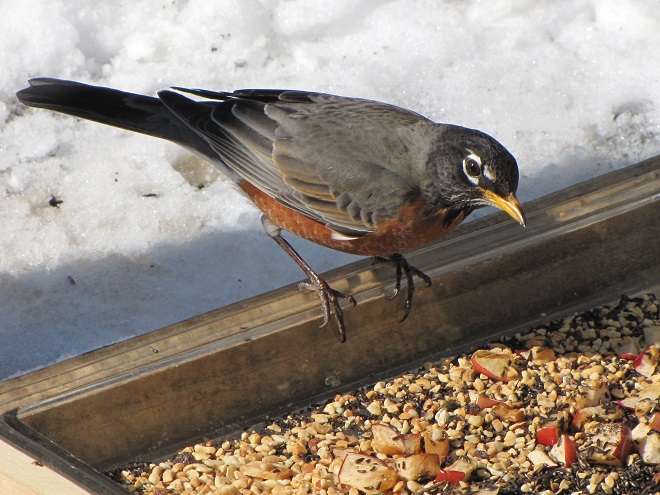
County Conservation District Tree Sales
Consult each County Conservation District’s Tree Sale web page for ordering info, pickup locations, and changes to these dates and times.
Cumberland County Conservation District Tree Seedling Sale—deadline for prepaid orders Tuesday, March 30, 2021. Pickup 1 P.M. to 5 P.M., Thursday, April 22, 2021, and 8 A.M. to 2 P.M., Friday, April 23, 2021. https://www.ccpa.net/4636/Tree-Seedling-Sale
Lancaster County Conservation District Tree Sale—deadline for prepaid orders (hand-delivered to drop box) 5 P.M., Friday, March 5, 2021. Pickup 8 A.M. to 5 P.M., Thursday, April 15, 2021. https://www.lancasterconservation.org/tree-sale/
Lebanon County Conservation District Tree Sale—deadline for prepaid orders Thursday, March 11, 2021. Pickup 9 A.M. to 6 P.M., Friday, May 7, 2021. https://www.lccd.org/2021-tree-sale/
Perry County Conservation District Tree Sale—deadline for prepaid orders Wednesday, March 24, 2021. Pickup 10 A.M. to 6 P.M., Thursday, April 8, 2021. www.perrycd.org/Documents/2021 Tree Sale Flyer LEGAL SIZE.pdf
York County Conservation District Seedling Sale—deadline for prepaid orders Monday, March 15, 2021. Pickup 10 A.M. to 6 P.M., Thursday, April 15, 2021. https://www.yorkccd.org/events/2021-seedling-sale
Snow Geese Arriving
With plenty of open water on the main lake and no snow cover on the fields where they graze, Snow Geese have begun arriving at Middle Creek Wildlife Management Area in Lancaster/Lebanon Counties. As long as our mild winter weather continues, more can be expected to begin moving inland from coastal areas to prepare for their spring migration and a return to arctic breeding grounds.
You probably need a break from being indoors all month, so why not get out and have a look?
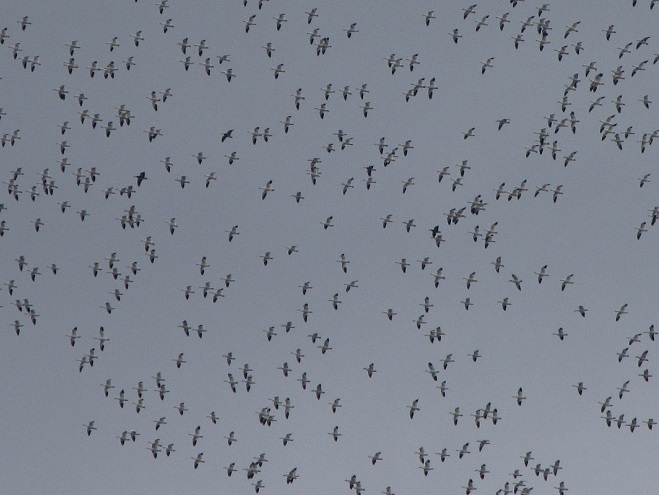


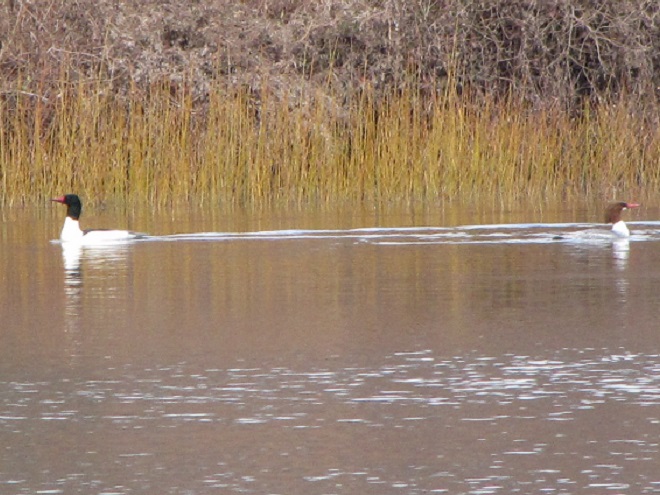
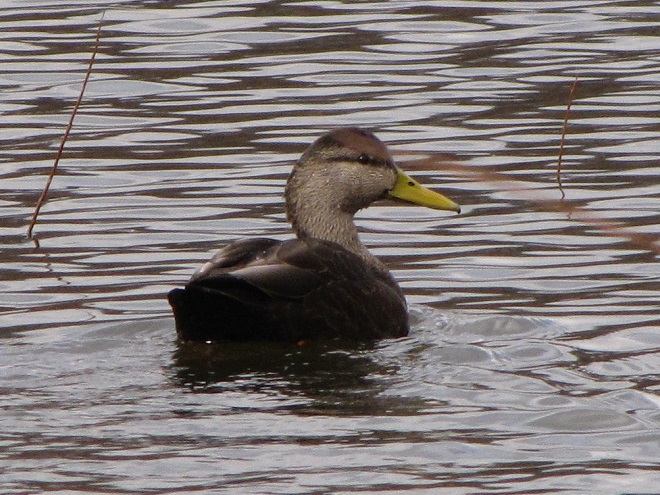
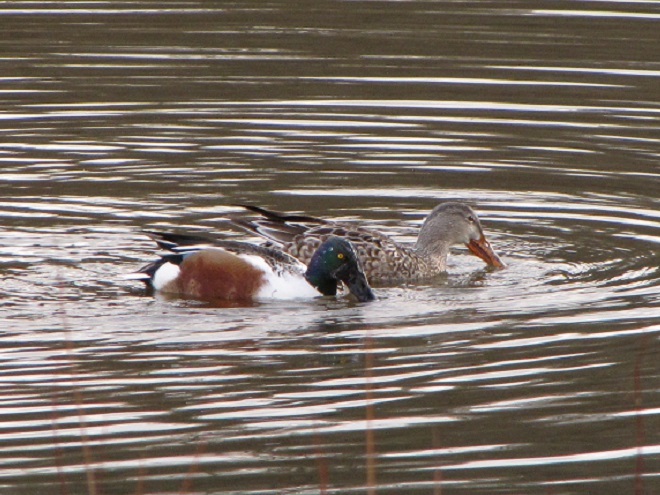
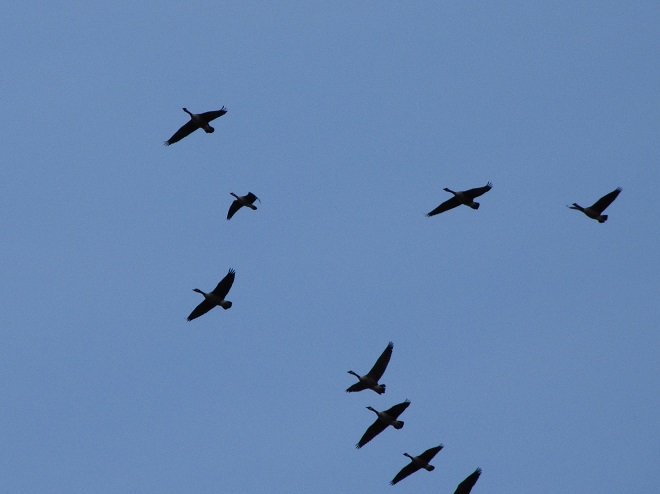
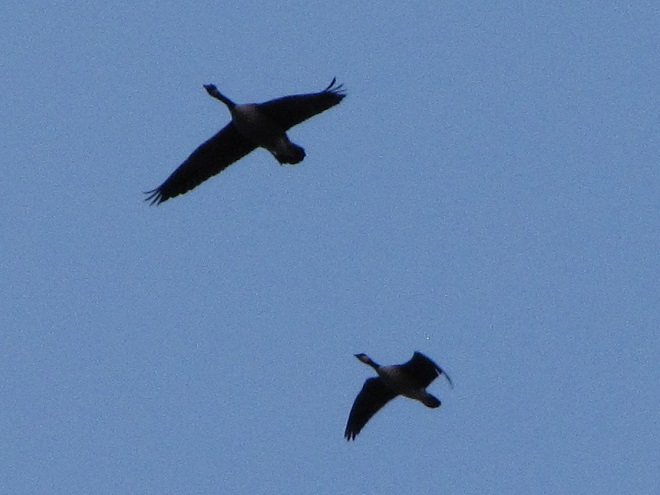
Don’t just sit there—don your coat, grab a pair of binoculars, and get out and have a gander!
2020: A Good Year
You say you really don’t want to take a look back at 2020? Okay, we understand. But here’s something you may find interesting, and it has to do with the Susquehanna River in 2020.
As you may know, the National Weather Service has calculated the mean temperature for the year 2020 as monitored just upriver from Conewago Falls at Harrisburg International Airport. The 56.7° Fahrenheit value was the highest in nearly 130 years of monitoring at the various stations used to register official climate statistics for the capital city. The previous high, 56.6°, was set in 1998.
Though not a prerequisite for its occurrence, record-breaking heat was accompanied by a drought in 2020. Most of the Susquehanna River drainage basin experienced drought conditions during the second half of the year, particularly areas of the watershed upstream of Conewago Falls. A lack of significant rainfall resulted in low river flows throughout late summer and much of the autumn. Lacking water from the northern reaches, we see mid-river rocks and experience minimal readings on flow gauges along the lower Susquehanna, even if our local precipitation happens to be about average.
Back in October, when the river was about as low as it was going to get, we took a walk across the Susquehanna at Columbia-Wrightsville atop the Route 462/Veteran’s Memorial Bridge to have a look at the benthos—the life on the river’s bottom.




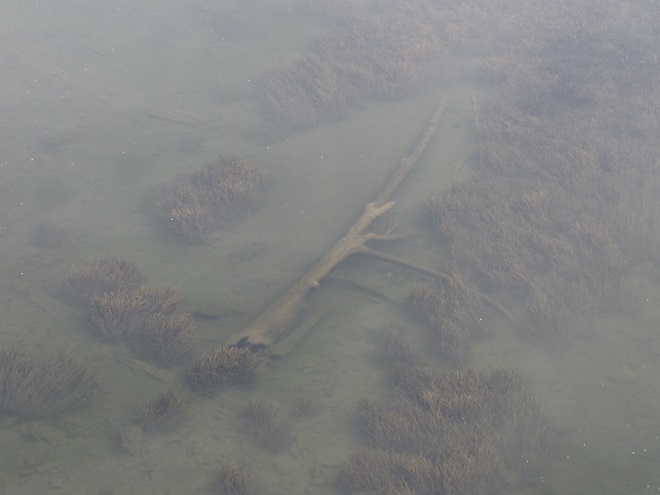


These improvements in water quality and wildlife habitat can have a ripple effect. In 2020, the reduction in nutrient loads entering Chesapeake Bay from the low-flowing Susquehanna may have combined with better-than-average flows from some of the bay’s lesser-polluted smaller tributaries to yield a reduction in the size of the bay’s oxygen-deprived “dead zones”. These dead zones typically occur in late summer when water temperatures are at their warmest, dissolved oxygen levels are at their lowest, and nutrient-fed algal blooms have peaked and died. Algal blooms can self-enhance their severity by clouding water, which blocks sunlight from reaching submerged aquatic plants and stunts their growth—making quantities of unconsumed nutrients available to make more algae. When a huge biomass of algae dies in a susceptible part of the bay, its decay can consume enough of the remaining dissolved oxygen to kill aquatic organisms and create a “dead zone”. The Chesapeake Bay Program reports that the average size of this year’s dead zone was 1.0 cubic miles, just below the 35-year average of 1.2 cubic miles.
Back on a stormy day in mid-November, 2020, we took a look at the tidal freshwater section of Chesapeake Bay, the area known as Susquehanna Flats, located just to the southwest of the river’s mouth at Havre de Grace, Maryland. We wanted to see how the restored American Eelgrass beds there might have fared during a growing season with below average loads of nutrients and life-choking sediments spilling out of the nearby Susquehanna River. Here’s what we saw.
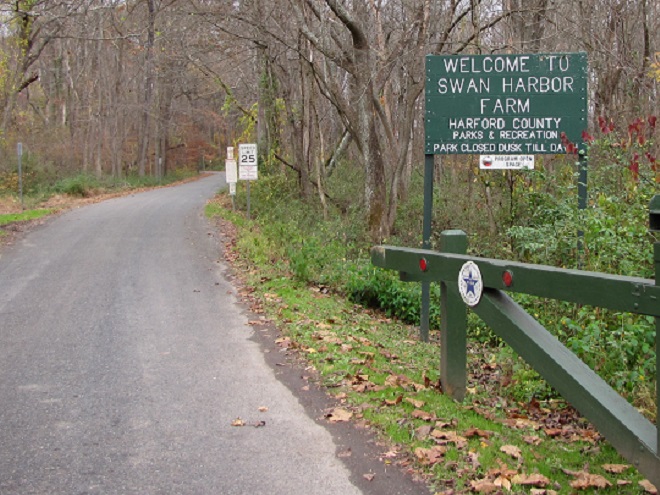



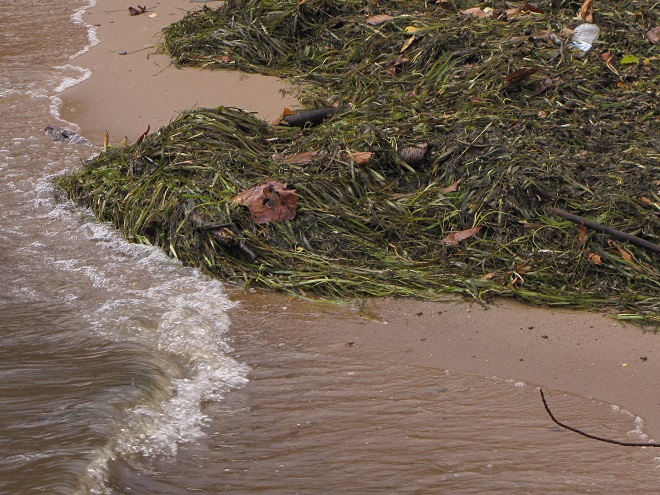


We noticed a few Canvasbacks (Aythya valisineria) on the Susquehanna Flats during our visit. Canvasbacks are renowned as benthic feeders, preferring the tubers and other parts of submerged aquatic plants (a.k.a. submersed aquatic vegetation or S.A.V.) including eelgrass, but also feeding on invertebrates including bivalves. The association between Canvasbacks and eelgrass is reflected in the former’s scientific species name valisineria, a derivitive of the genus name of the latter, Vallisneria.
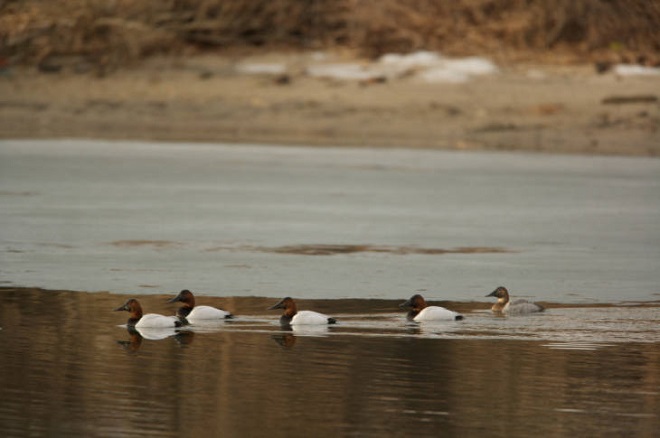
The plight of the Canvasback and of American Eelgrass on the Susquehanna River was described by Herbert H. Beck in his account of the birds found in Lancaster County, Pennsylvania, published in 1924:
“Like all ducks, however, it stops to feed within the county less frequently than formerly, principally because the vast beds of wild celery which existed earlier on broads of the Susquehanna, as at Marietta and Washington Borough, have now been almost entirely wiped out by sedimentation of culm (anthracite coal waste). Prior to 1875 the four or five square miles of quiet water off Marietta were often as abundantly spread with wild fowl as the Susquehanna Flats are now.”
Beck quotes old Marietta resident and gunner Henry Zink:
“Sometimes there were as many as 500,000 ducks of various kinds on the Marietta broad at one time.”
The abundance of Canvasbacks and other ducks on the Susquehanna Flats would eventually plummet too. In the 1950s, there were an estimated 250, 000 Canvasbacks wintering on Chesapeake Bay, primarily in the area of the American Eelgrass, a.k.a. Wild Celery, beds on the Susquehanna Flats. When those eelgrass beds started disappearing during the second half of the twentieth century, the numbers of Canvasbacks wintering on the bay took a nosedive. As a population, the birds moved elsewhere to feed on different sources of food, often in saltier estuarine waters.
Canvasbacks were able to eat other foods and change their winter range to adapt to the loss of habitat on the Susquehanna River and Chesapeake Bay. But not all species are the omnivores that Canvasbacks happen to be, so they can’t just change their diet and/or fly away to a better place. And every time a habitat like the American Eelgrass plant community is eliminated from a region, it fragments the range for each species that relied upon it for all or part of its life cycle. Wildlife species get compacted into smaller and smaller suitable spaces and eventually their abundance and diversity are impacted. We sometimes marvel at large concentrations of birds and other wildlife without seeing the whole picture—that man has compressed them into ever-shrinking pieces of habitat that are but a fraction of the widespread environs they once utilized for survival. Then we sometimes harass and persecute them on the little pieces of refuge that remain. It’s not very nice, is it?
By the end of 2020, things on the Susquehanna were getting back to normal. Near normal rainfall over much of the watershed during the final three months of the year was supplemented by a mid-December snowstorm, then heavy downpours on Christmas Eve melted it all away. Several days later, the Susquehanna River was bank full and dishing out some minor flooding for the first time since early May. Isn’t it great to get back to normal?



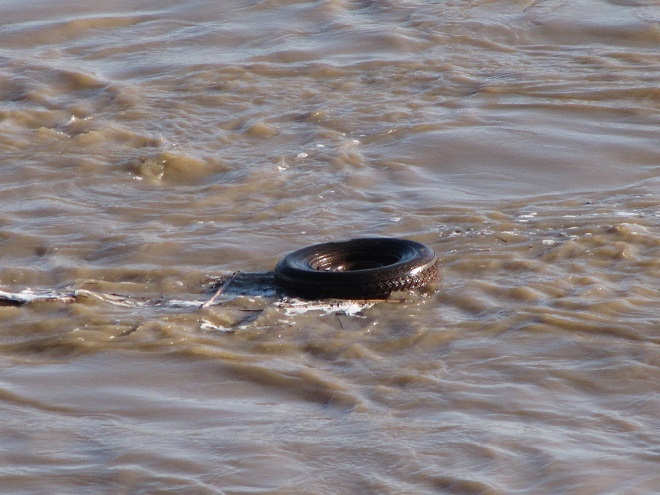
SOURCES
Beck, Herbert H. 1924. A Chapter on the Ornithology of Lancaster County, Pennsylvania. The Lewis Historical Publishing Company. New York, NY.
White, Christopher P. 1989. Chesapeake Bay, Nature of the Estuary: A Field Guide. Tidewater Publishers. Centreville, MD.
Slow Down When There’s Snow on the Ground
It’s just common sense to take it easy and drive carefully when snow covers streets and highways. Everyone knows that. But did you know that slowing down when the landscape is blanketed in white can save lives even after the roadways have been cleared?
Following significant snowfalls such as the one earlier this week, birds and other wildlife are attracted to bare ground along the edges of plowed pavement. They are often so preoccupied with the search for food that they ignore approaching cars and trucks until it is too late.
Take a look at the species found today along a one mile stretch of plowed rural roadway in the lower Susquehanna valley.





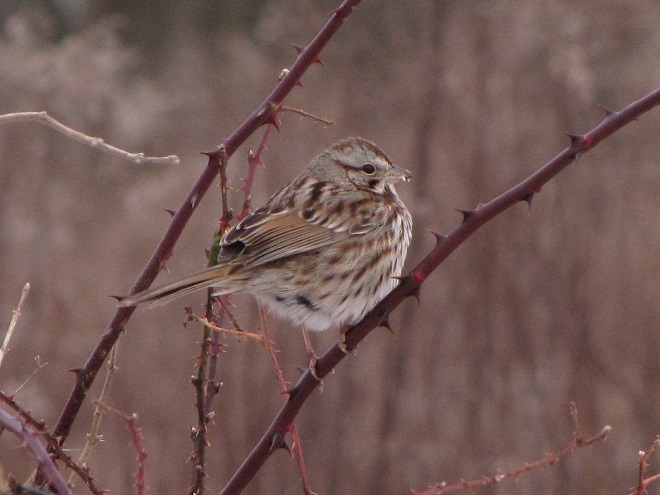
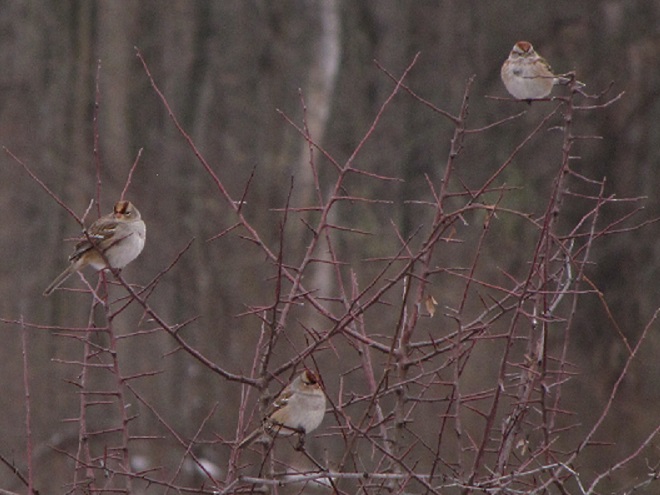


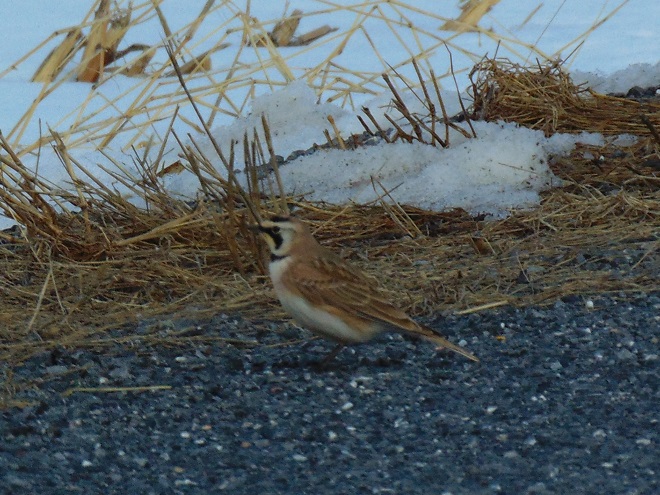
For many species of wildlife in the Lower Susquehanna River Watershed, the fragmented and impaired state of habitat already challenges their chances of surviving the winter. Snow cover can isolate them from their limited food supplies and force them to roadsides and other dangerous locations to forage. Mauling them with motor vehicles just adds to the escalating tragedy, so do wildlife and yourself a favor—please slow down.


City Life: Gulls, Dabbling Ducks, and More
So you aren’t particularly interested in a stroll through the Pennsylvania woods during the gasoline and gunpowder gang’s second-biggest holiday of the year—the annual sacrifice-of-the-White-tailed-Deity ritual. I get it. Two weeks and nothing to do. Well, why not try a hike through the city instead? I’m not kidding. You might be surprised at what you see. Here are some photographs taken today during several strolls in Harrisburg, Pennsylvania.
First stop was City Island in the Susquehanna River—accessible from downtown Harrisburg or the river’s west shore by way of the Market Street Bridge.

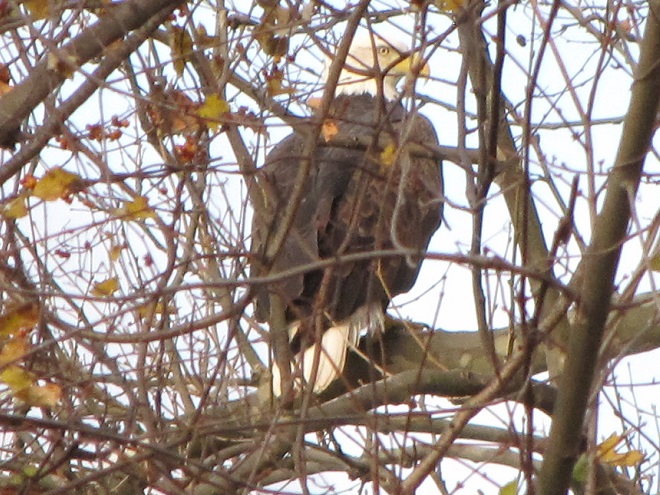
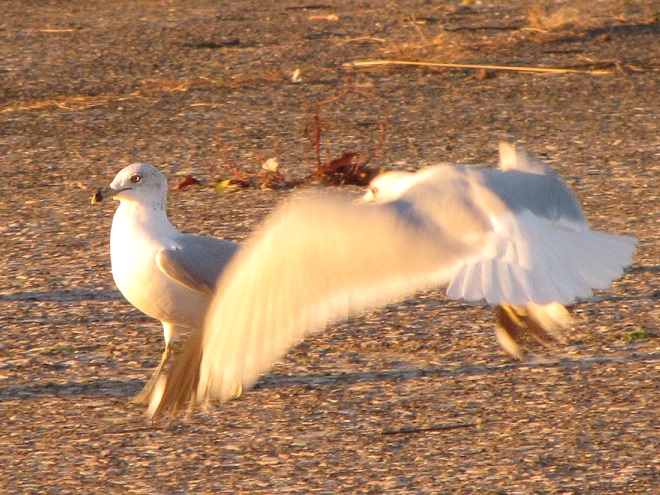
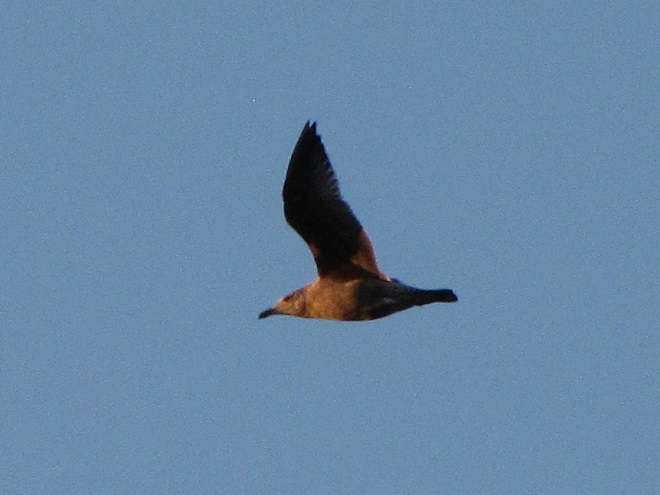


Okay, City Island was worth the effort. Next stop is Wildwood Park, located along Industrial Road just north of the Pennsylvania Farm Show complex and the Harrisburg Area Community College (HACC) campus. There are six miles of trails surrounding mile-long Wildwood Lake within this marvelous Dauphin County Parks Department property.
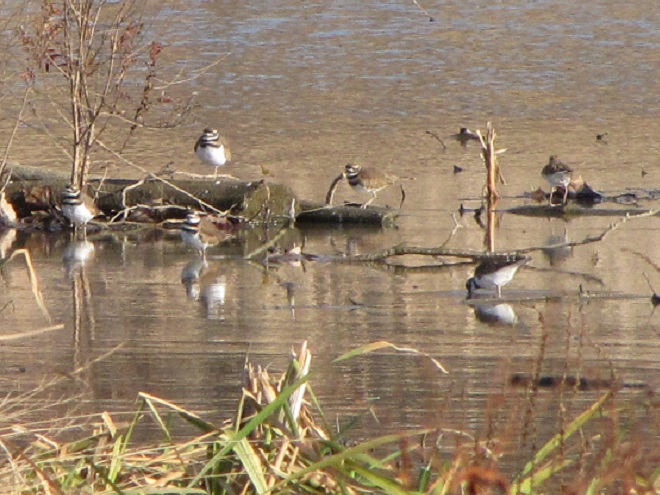
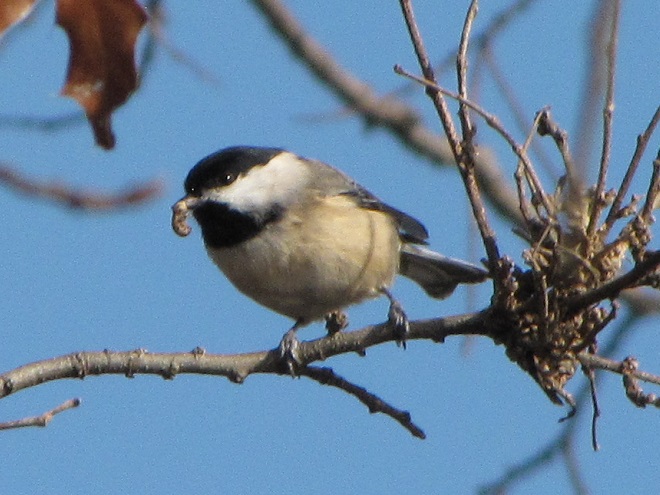

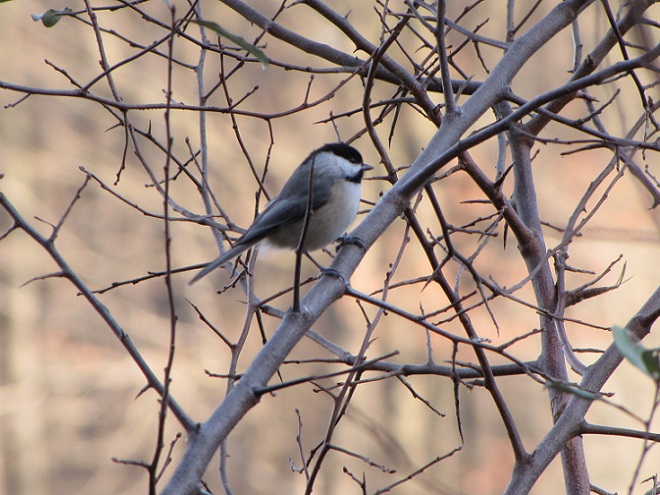
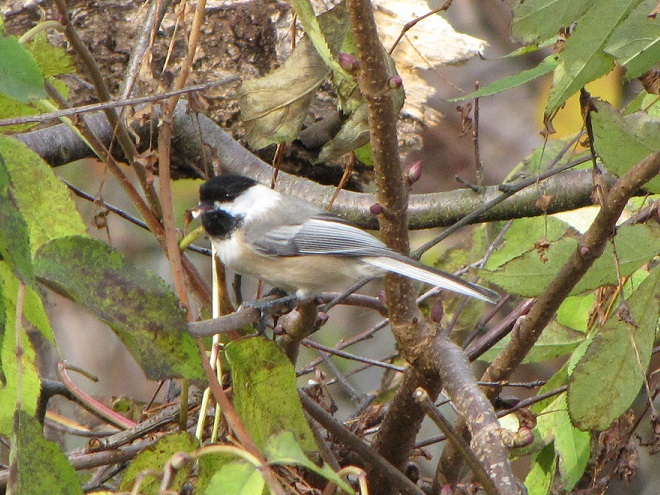
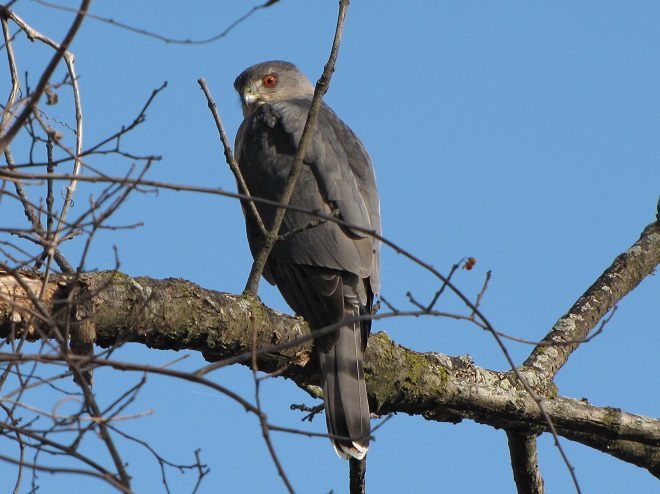
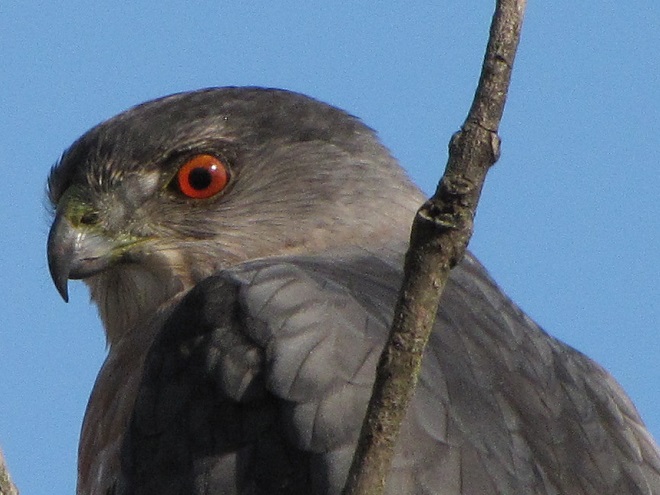
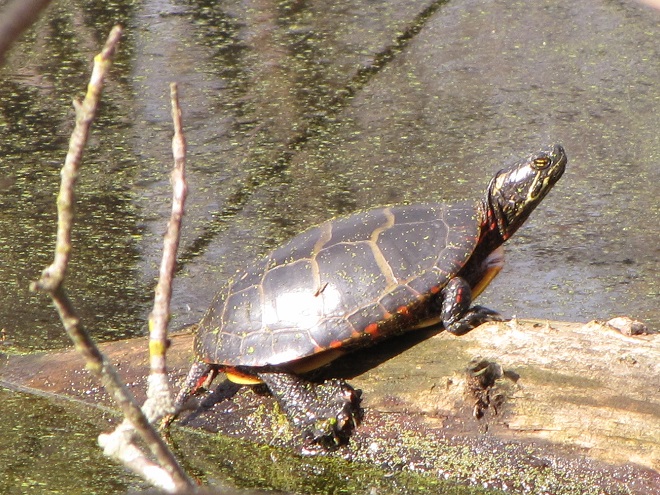
And now, without further ado, it’s time for the waterfowl of Wildwood Lake—in order of their occurrence.
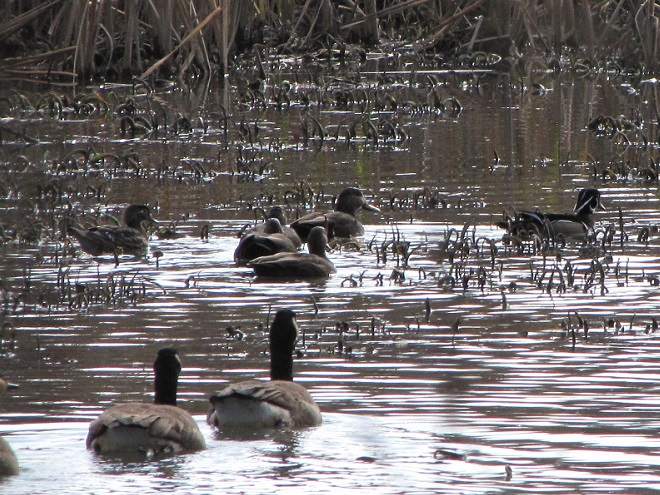
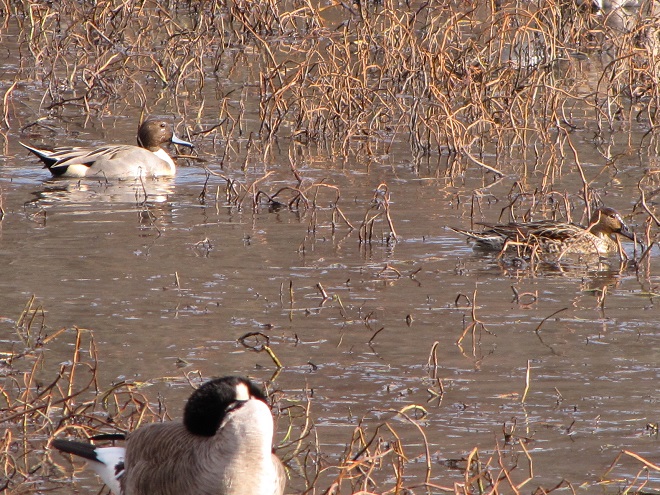
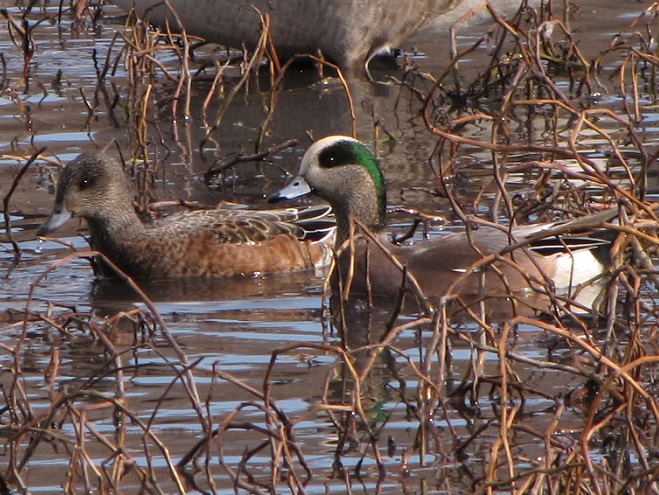
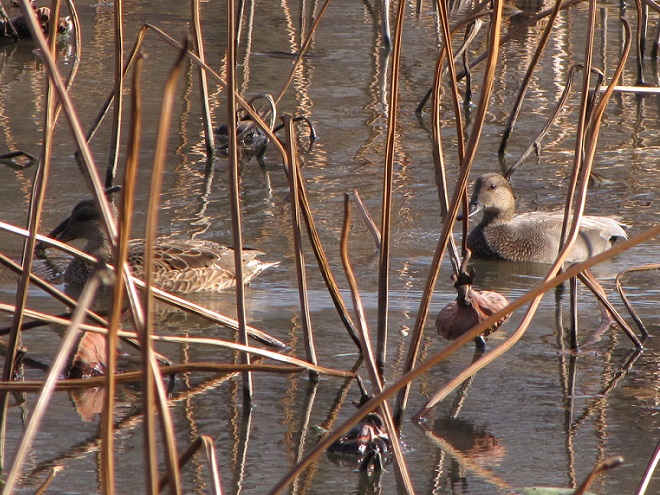


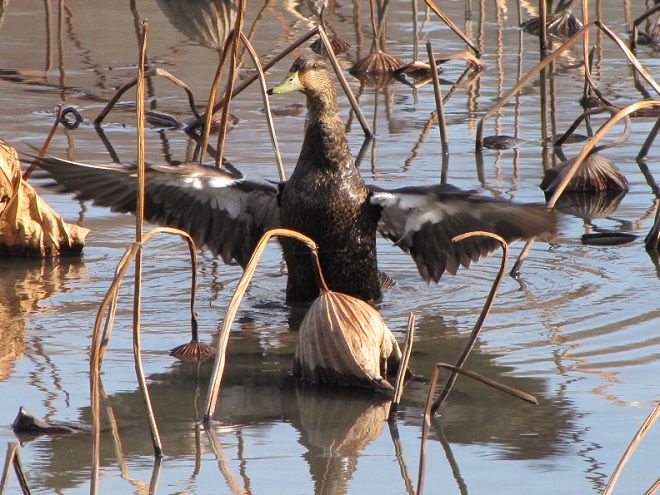
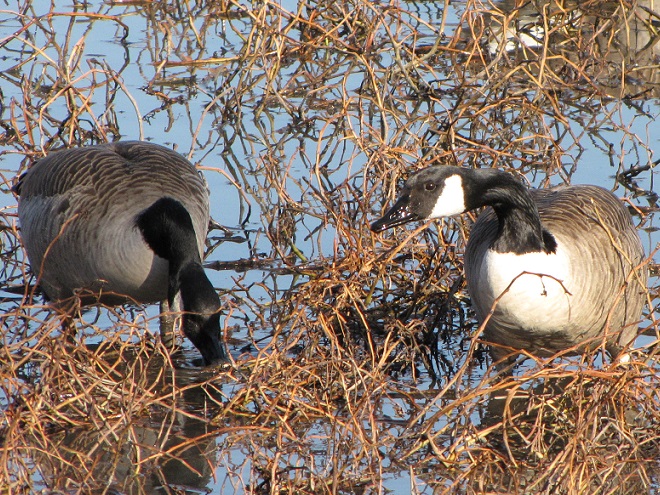
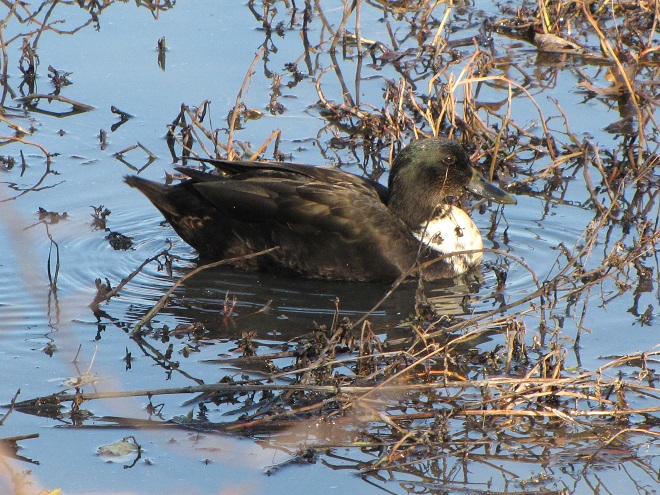

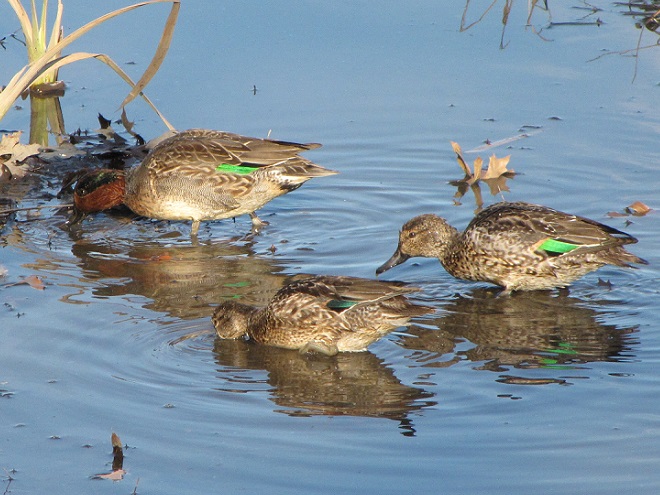
See, you don’t have to cloak yourself in bright orange ceremonial garments just to go for a hike. Go put on your walking shoes and a warm coat, grab your binoculars and/or camera, and have a look at wildlife in a city near you. You never know what you might find.
SOURCES
Taylor, Scott A., Thomas A. White, Wesley M. Hochachka, Valentina Ferretti, Robert L. Curry, and Irby Lovette. 2014. “Climate-Mediated Movement of an Avian Hybrid Zone”. Current Biology. 24:6 pp.671-676.
Bald Eagles Arriving at Conowingo Dam
You need to see this to believe it—dozens, sometimes hundreds, of Bald Eagles doing their thing and you can stand or sit in just one place to take it all in.
Conowingo Dam on the Susquehanna River near Darlington, Maryland, attracts piscivores galore. Young Gizzard Shad (Dorosoma cepedianum) and other small fishes are temporarily stunned as they pass through the turbines and gated discharges at the hydroelectric facility’s power house. Waiting for them in the rapids below are predatory fishes including Striped Bass (Morone saxatilis), White Perch (Morone americana), several species of catfishes, and more. From above, fish-eating birds are on the alert for a disoriented turbine-traveler they can easily seize for a quick meal.








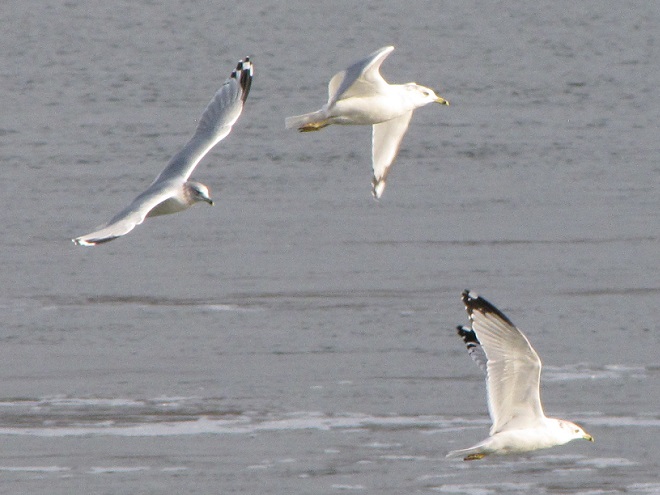



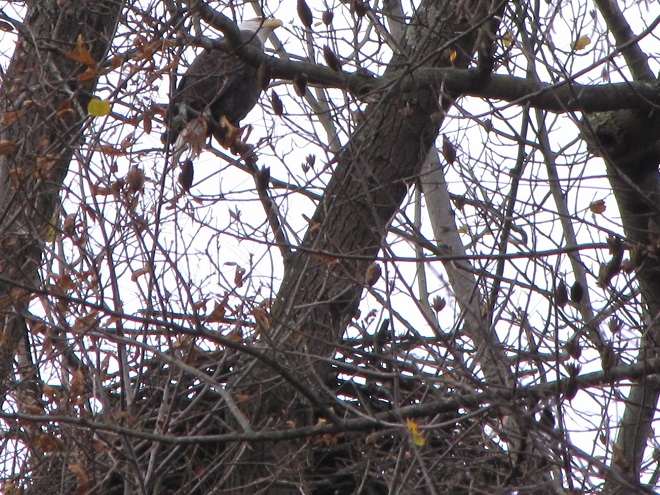





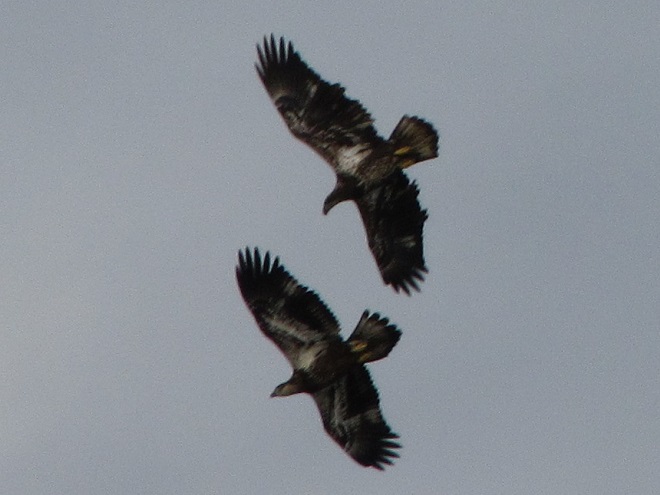
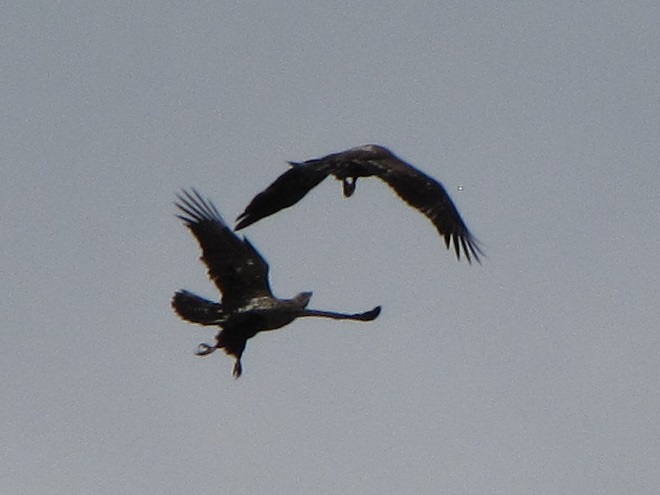


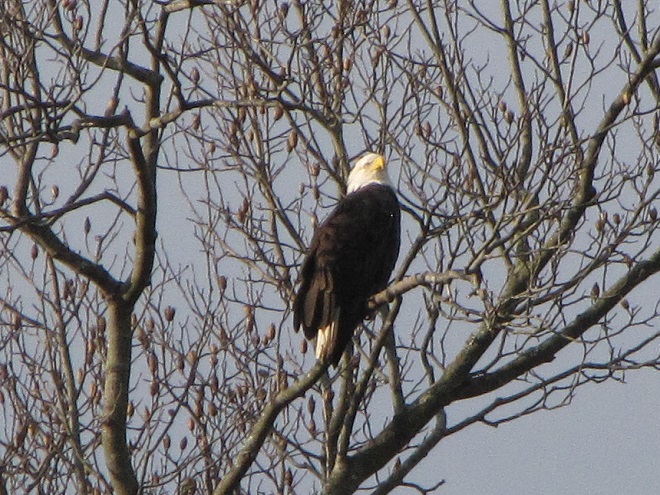

To reach Exelon’s Conowingo Fisherman’s Park from Rising Sun, Maryland, follow U.S. Route 1 south across the Conowingo Dam, then turn left onto Shuresville Road, then make a sharp left onto Shureslanding Road. Drive down the hill to the parking area along the river. The park’s address is 2569 Shureslanding Road, Darlington, Maryland.
As Bald Eagle numbers continue to increase, expect the parking lot to become full during weekends and over the Thanksgiving holiday. To avoid the crowds, plan to visit during a weekday.
You can get the generating schedule for the Conowingo Dam by calling the Conowingo Generation Hotline at 888-457-4076. The recording is updated daily at 5 P.M. to provide information for the following day.
Migrating Golden Eagles
Why would otherwise sensible people perch themselves atop a rocky outcrop on a Pennsylvania mountaintop for ten hours on a windy bone-numbing bitter cold and sometimes snowy November day? To watch migrating raptors of course.
November is the time when big hawks and eagles migrate through and into the lower Susquehanna valley. And big birds rely on big wind to create updrafts and an easy ride along the region’s many ridges. The most observable flights often accompany the arrival of cold air surging across the Appalachian Mountains from the northwest. These conditions can propel season-high numbers of several of the largest species of raptors past hawk-counting sites.

Earlier this week, two windy days followed the passage of a cold front to usher-in spectacular hawk and eagle flights at the the Waggoner’s Gap Hawk Watch station on Blue Mountain north of Carlisle, Pennsylvania. Steady 30 M.P.H. winds from the northwest on Monday, November 2, gusted to 50 M.P.H. at times. Early that morning, two Rough-legged Hawks, rarities at eastern hawk watches, were seen. They and two American Goshawks (Astur atricapillus) provided a preview of the memorable sightings to come. Two dozen Golden Eagles migrated past the lookout that day. Then on November 3, thirty Golden Eagles were tallied, despite west winds at speeds not exceeding half those of the day before.
Here are some of the late-season raptors seen by hardy observers at Waggoner’s Gap on Monday and Tuesday, November 2 & 3.
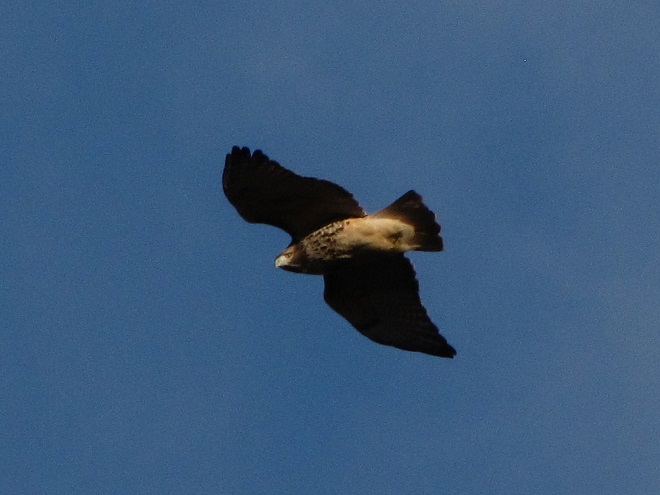



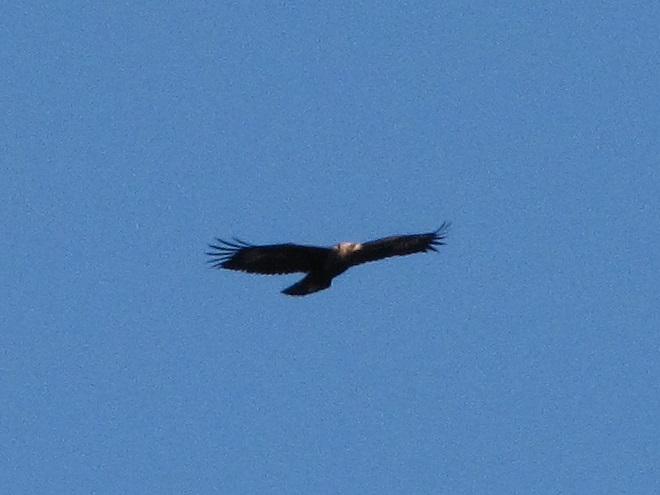
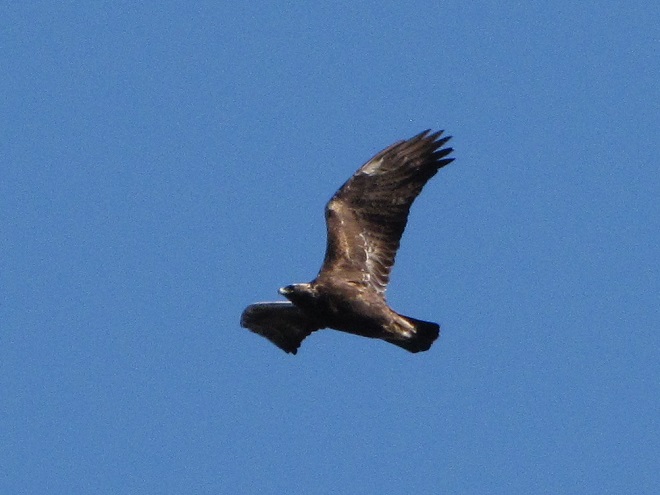



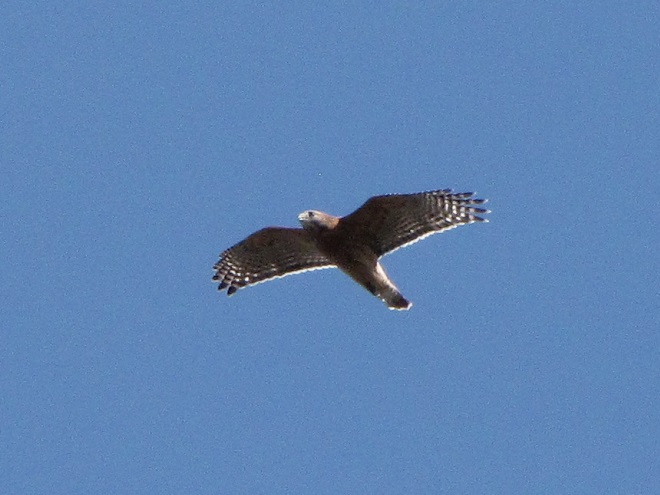


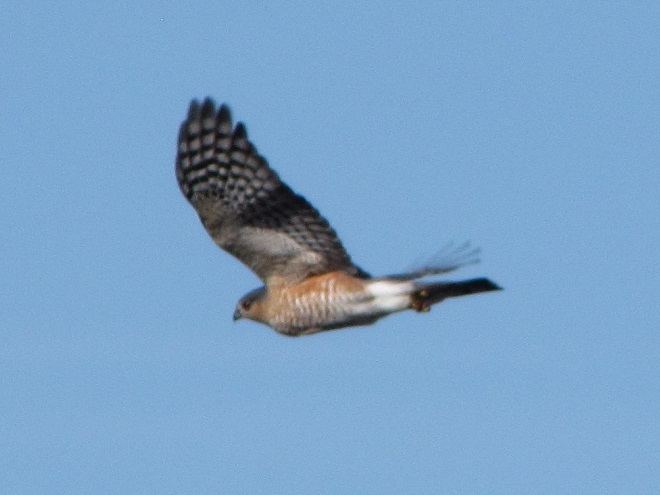
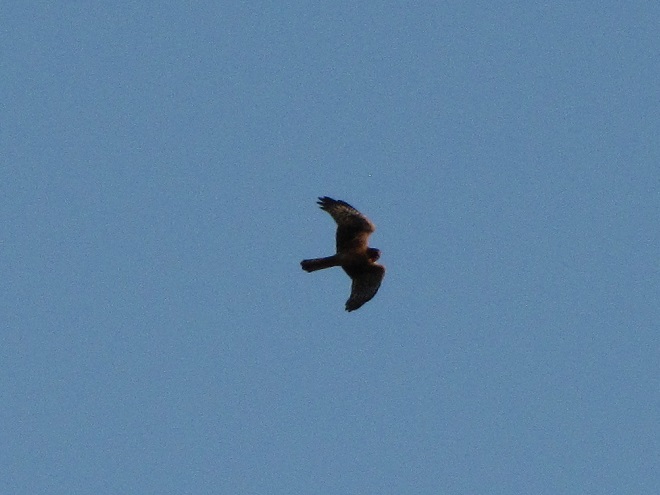
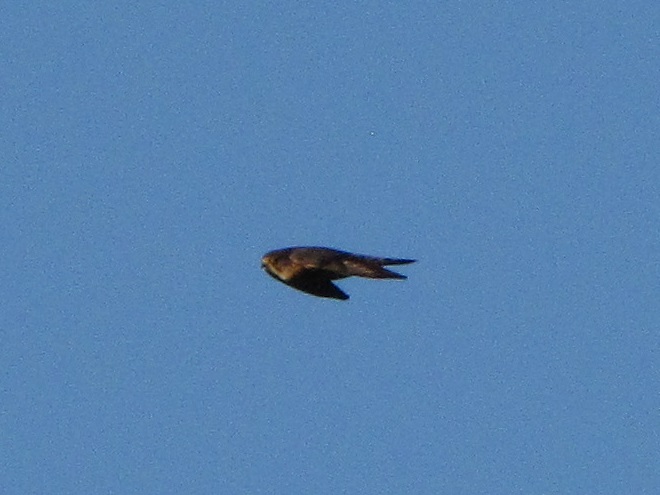
While visiting a hawk watch, one will certainly have the opportunity to see other birds too.

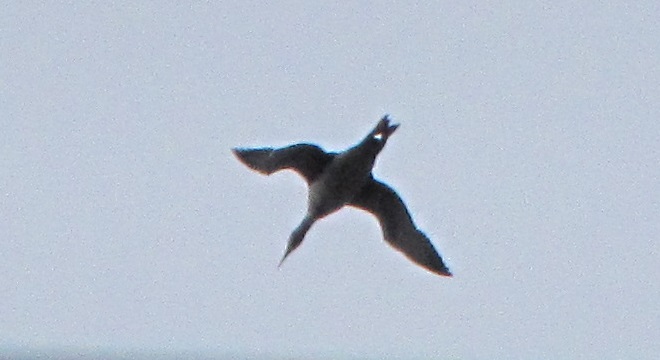


As a finale of sorts, near the close of the day on November 3, two Golden Eagles sailed past the north side of the Waggoner’s Gap lookout, one possessing what appeared to be a tracking transmitter on its back. An effort was commenced by the official count staff to report the sighting to the entity monitoring the bird—to track down the tracker, so to speak.

To see the count reports from Waggoner’s Gap and other hawk watches throughout North America, be certain to visit hawkcount.org
October Transition
Thoughts of October in the Lower Susquehanna River Watershed bring to mind scenes of brilliant fall foliage adorning wooded hillsides and stream courses, frosty mornings bringing an end to the growing season, and geese and other birds flying south for the winter.
The autumn migration of birds spans a period equaling nearly half the calendar year. Shorebirds and Neotropical perching birds begin moving through as early as late July, just as daylight hours begin decreasing during the weeks following their peak at summer solstice in late June. During the darkest days of the year, those surrounding winter solstice in late December, the last of the southbound migrants, including some hawks, eagles, waterfowl, and gulls, may still be on the move.

During October, there is a distinct change in the list of species an observer might find migrating through the lower Susquehanna valley. Reduced hours of daylight and plunges in temperatures—particularly frost and freeze events—impact the food sources available to birds. It is during October that we say goodbye to the Neotropical migrants and hello to those more hardy species that spend their winters in temperate climates like ours.

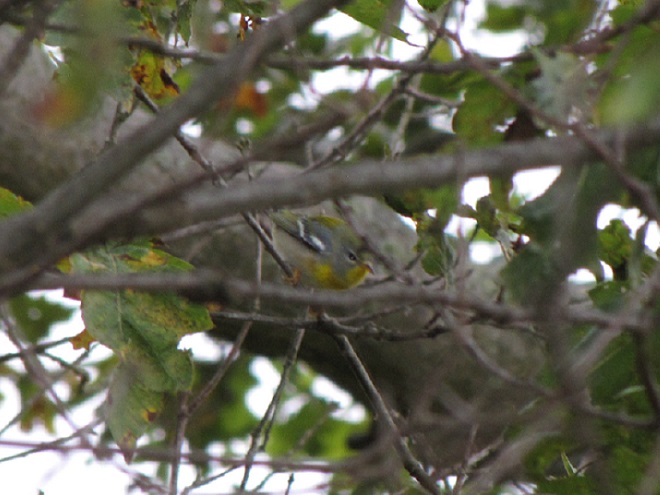
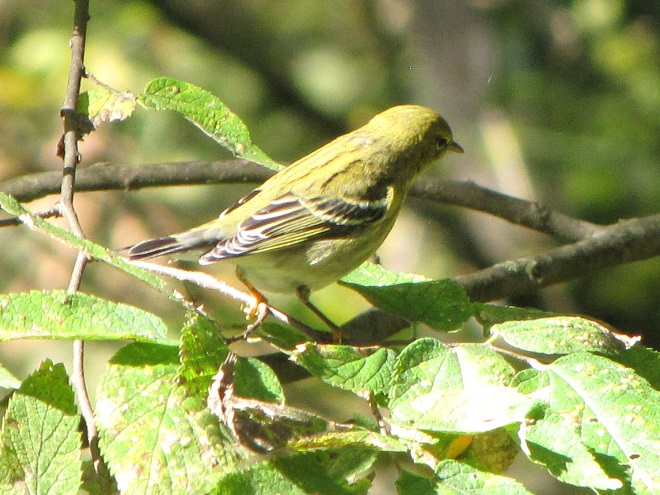
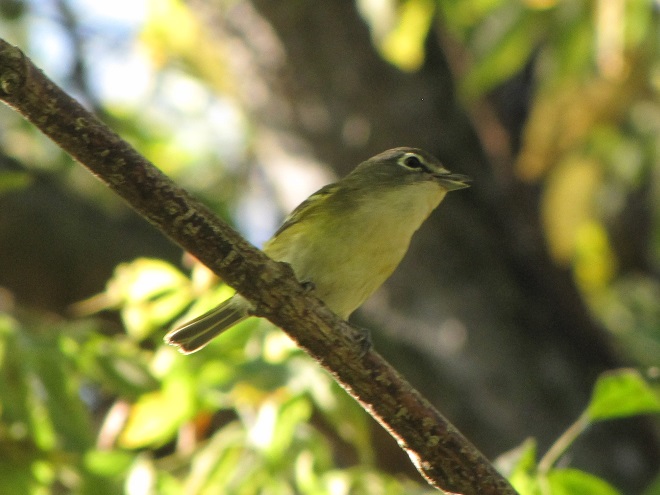

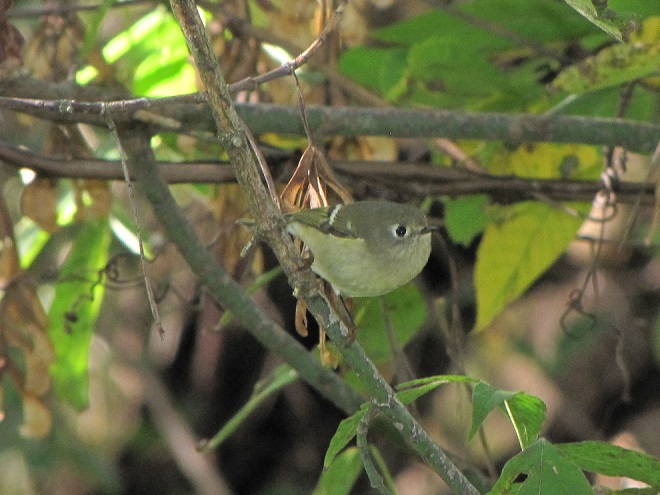


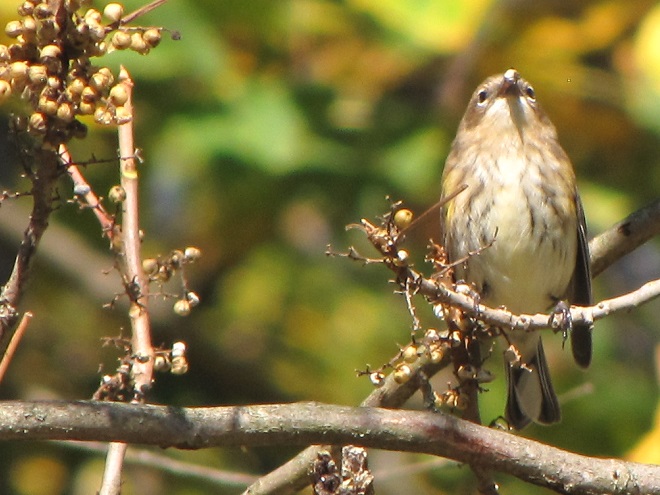
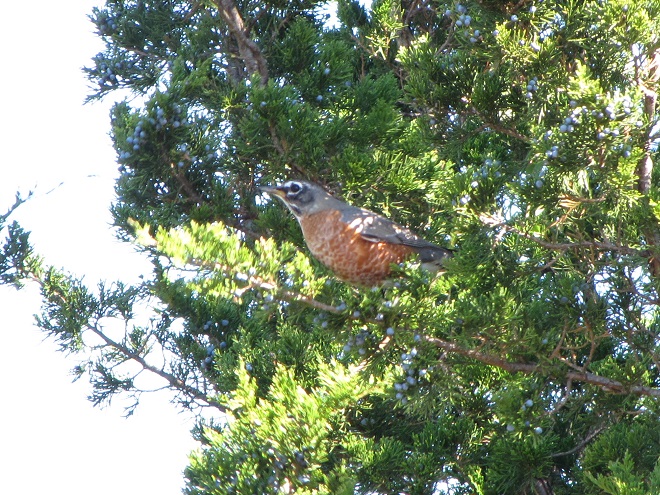
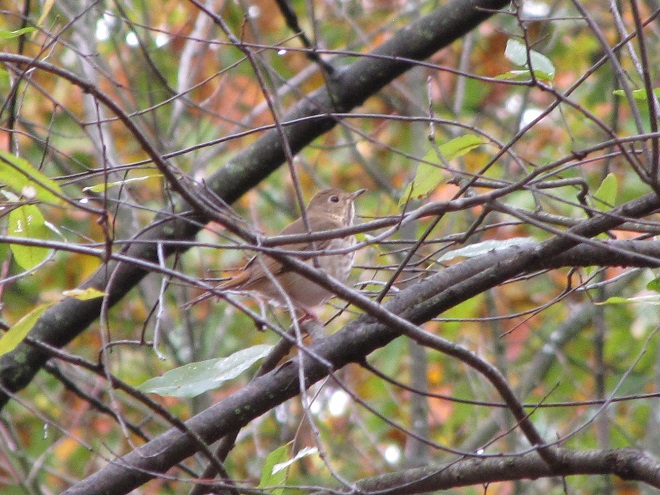
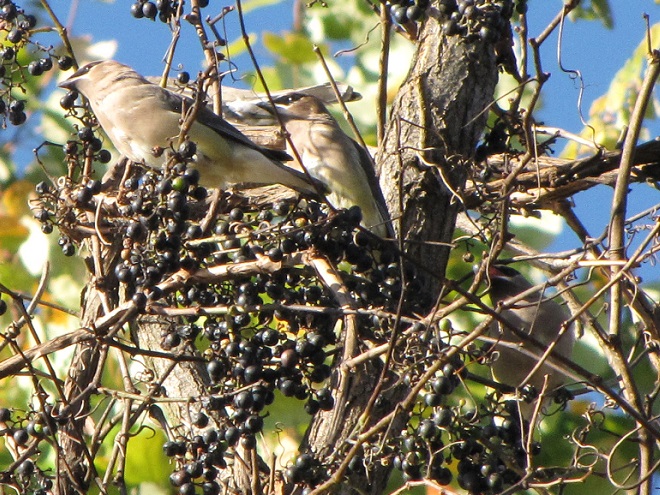


The need for food and cover is critical for the survival of wildlife during the colder months. If you are a property steward, think about providing places for wildlife in the landscape. Mow less. Plant trees, particularly evergreens. Thickets are good—plant or protect fruit-bearing vines and shrubs, and allow herbaceous native plants to flower and produce seed. And if you’re putting out provisions for songbirds, keep the feeders clean. Remember, even small yards and gardens can provide a life-saving oasis for migrating and wintering birds. With a larger parcel of land, you can do even more.

A Visit to Waggoner’s Gap
Nothing beats spending a day at a hawk watch lookout—except of course spending a day at a hawk watch lookout when the birds are parading through nonstop for hours on end.
Check out Waggoner’s Gap, a hawk count site located on the border of Cumberland and Perry Counties atop Blue Mountain just north of Carlisle, Pennsylvania. It is by far the Lower Susquehanna River Watershed’s best location for observing large numbers of migrating raptors during the October and November flights.
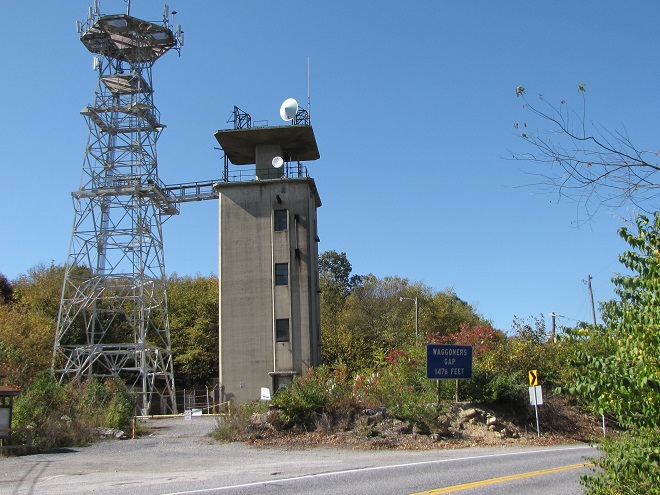







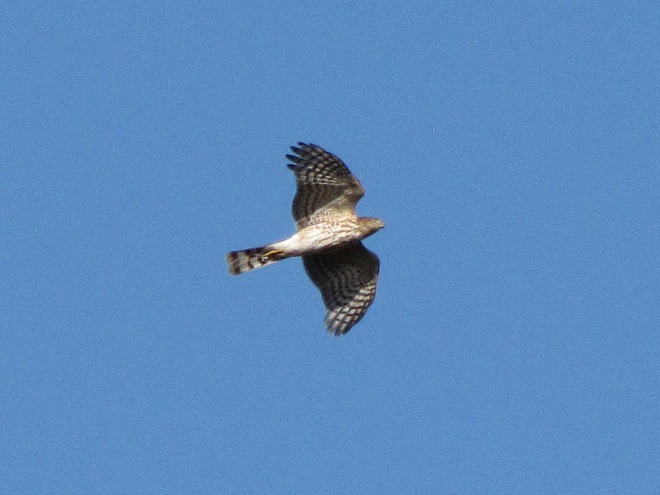



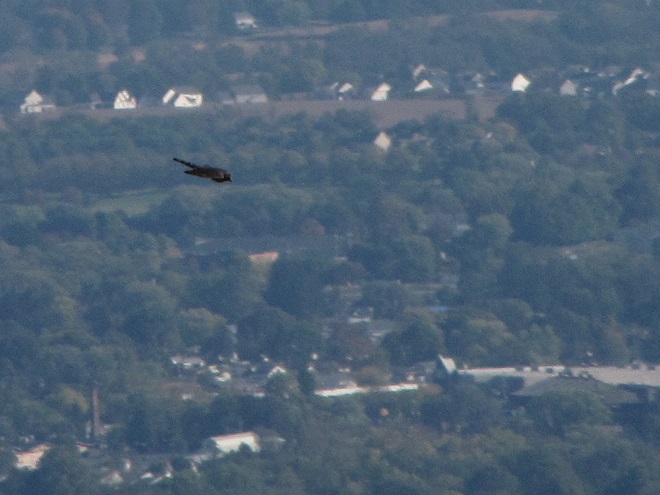


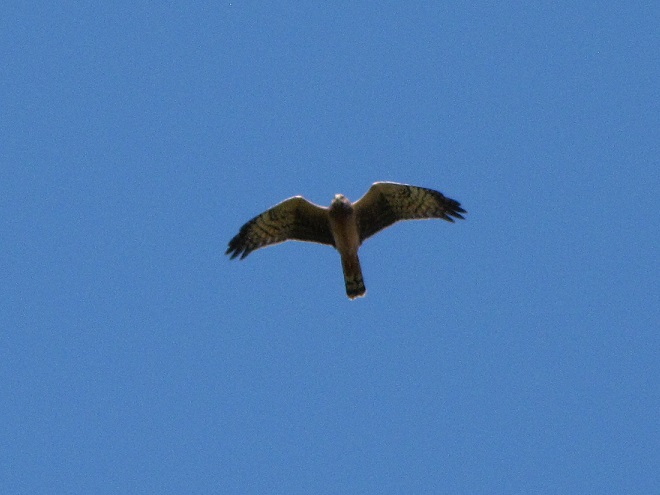
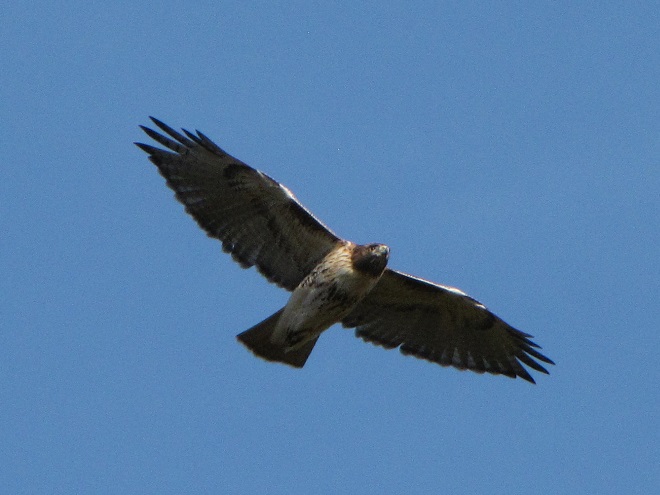


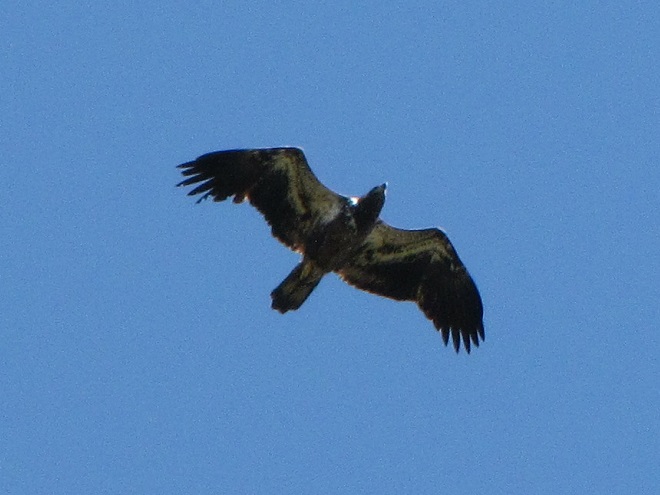

Waggoner’s Gap is a hardy birder’s paradise. During the latter portion of the season, excellent flights often occur on days that follow the passage of a cold front and have strong northwest winds. But be prepared, it can be brutal on those rocks during a gusty late-October or early-November day after the leaves fall—so dress appropriately.
To see the daily totals for the raptor count at Waggoner’s Gap Hawk Watch and other hawk watches in North America, and to learn more about each site, be sure to visit hawkcount.org



